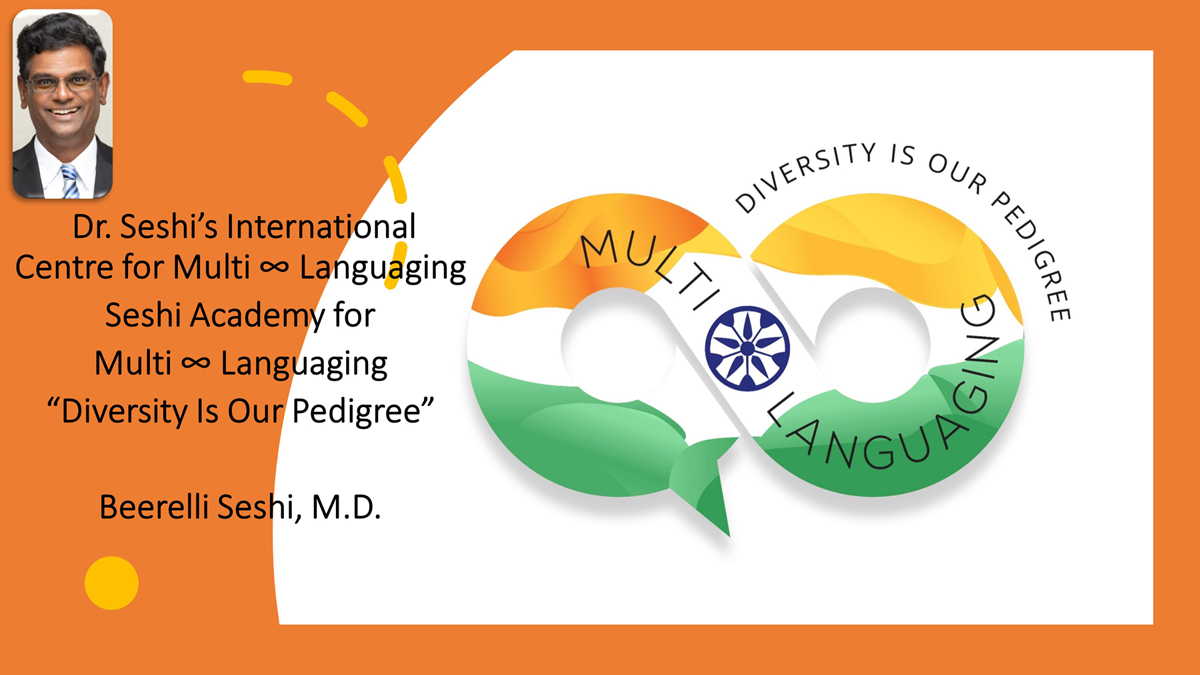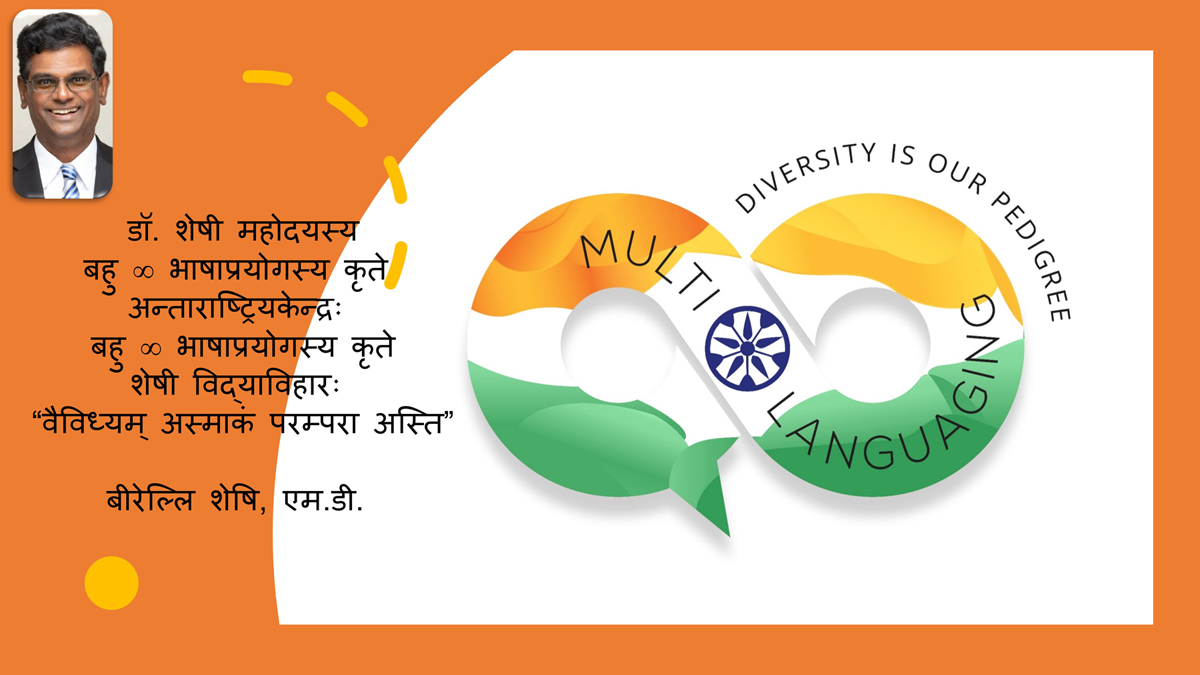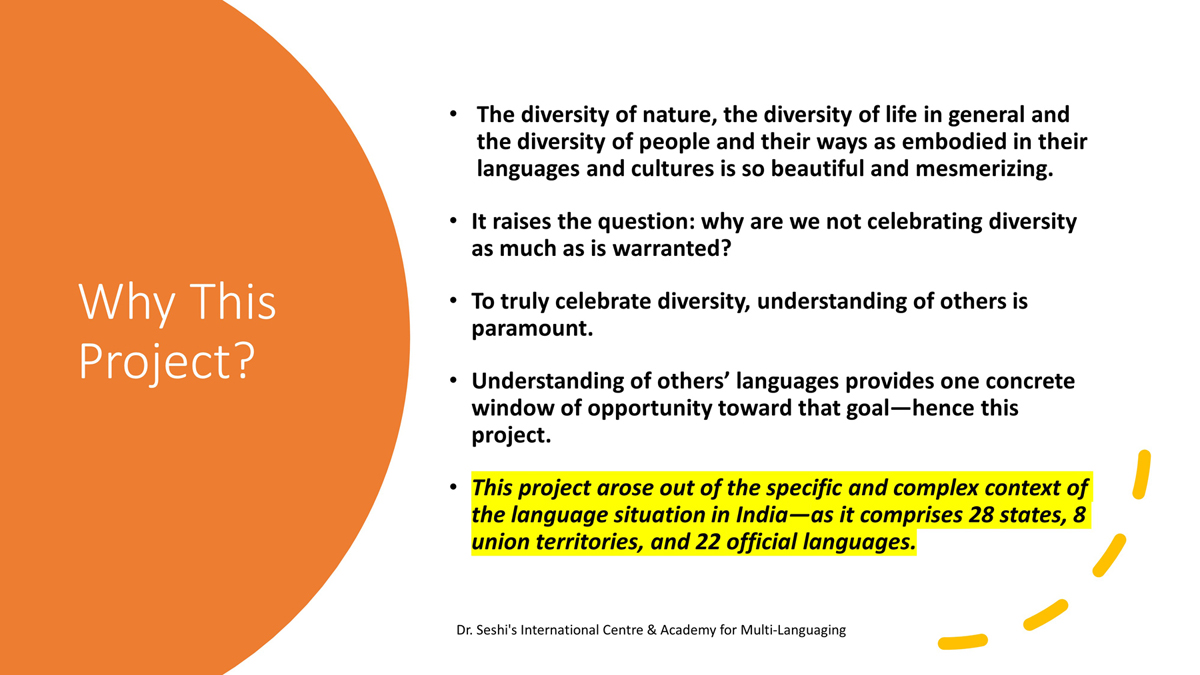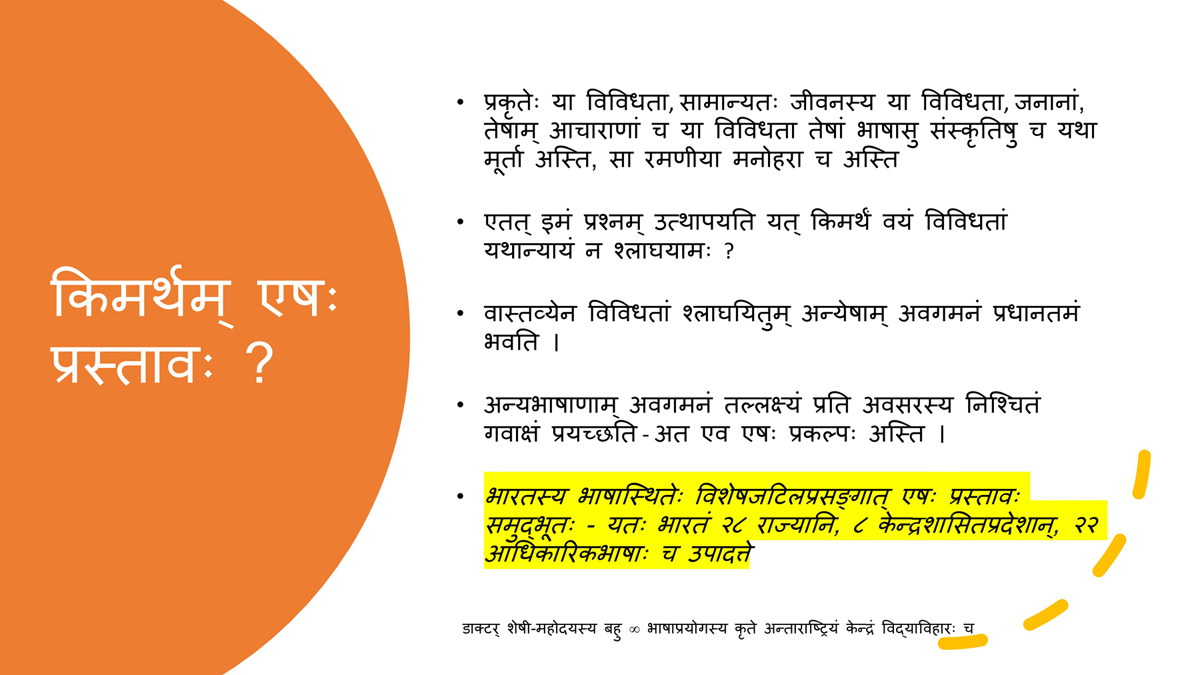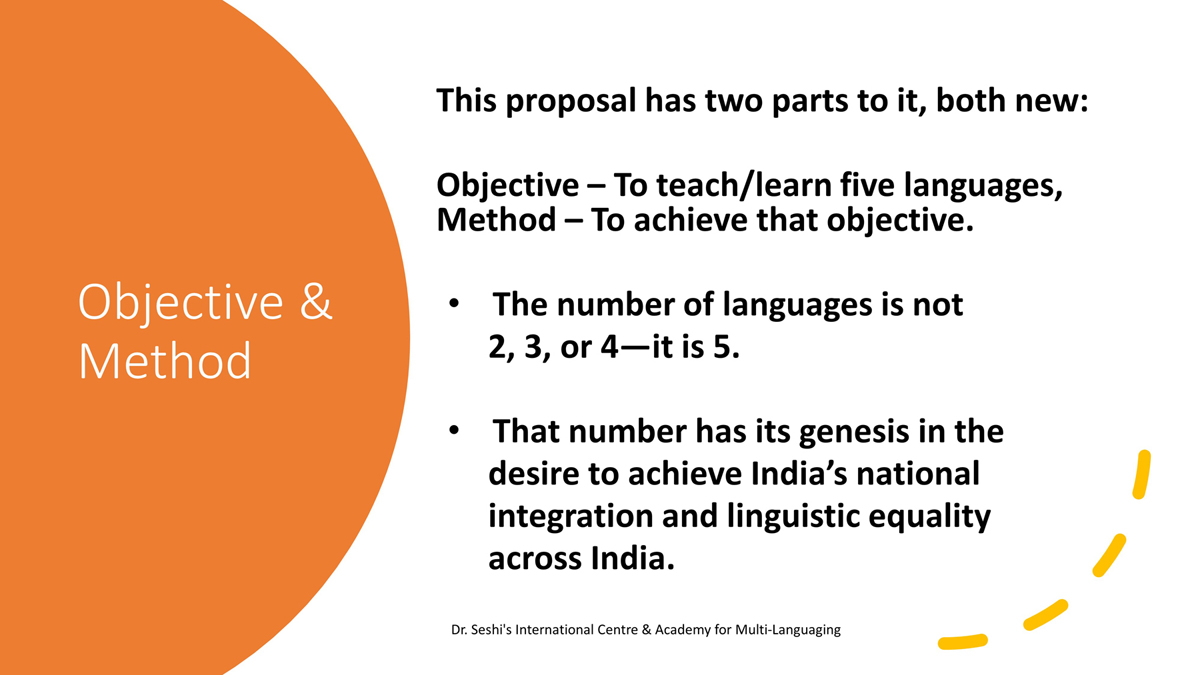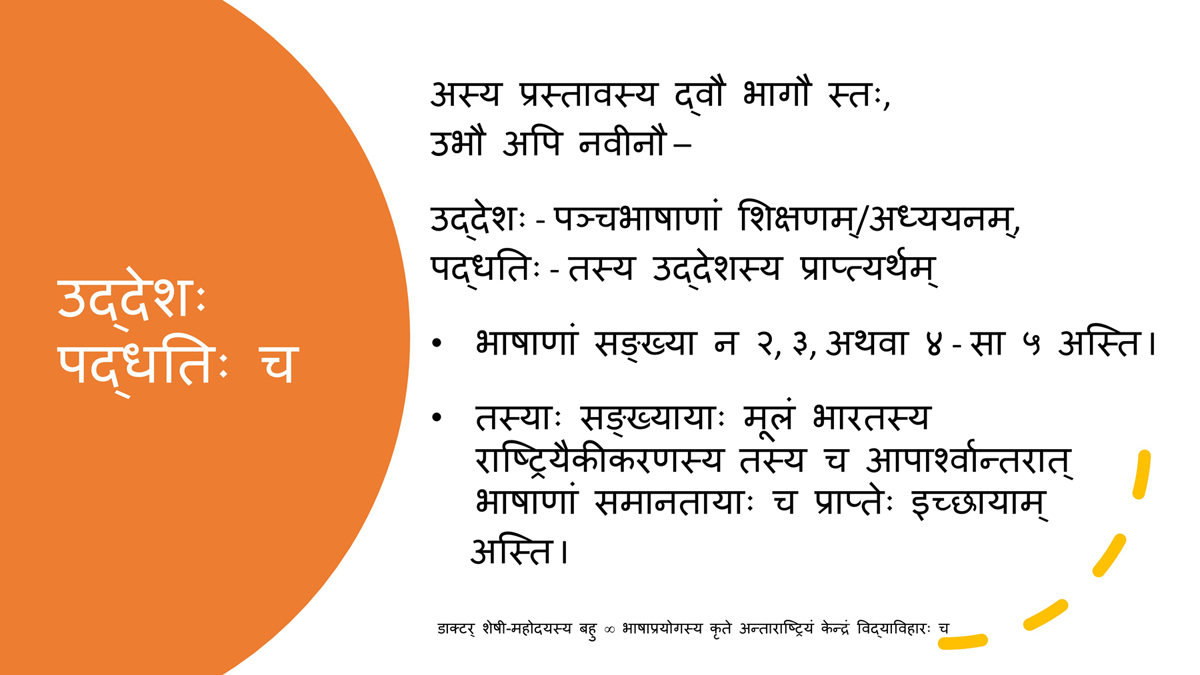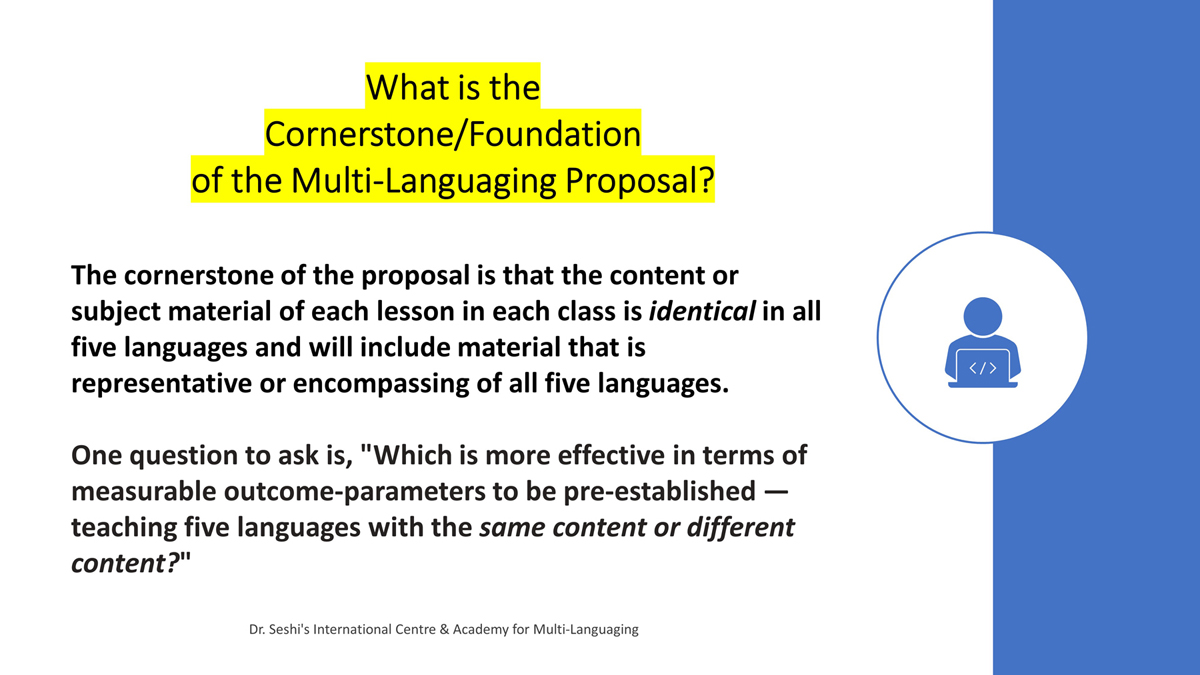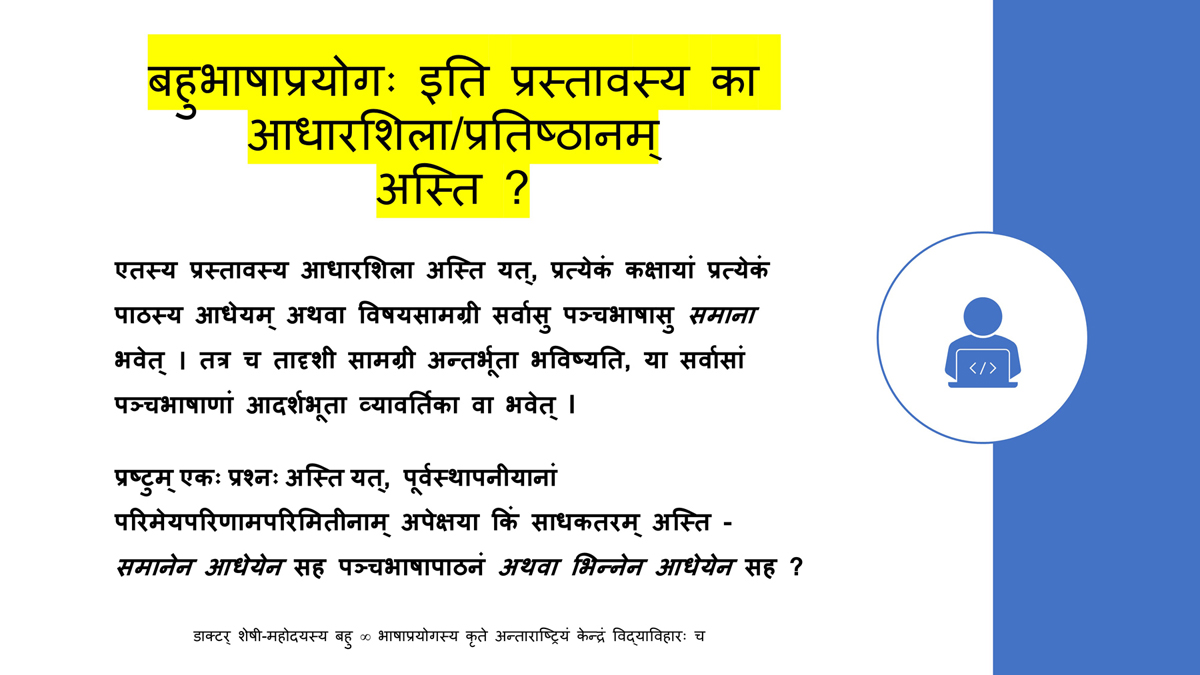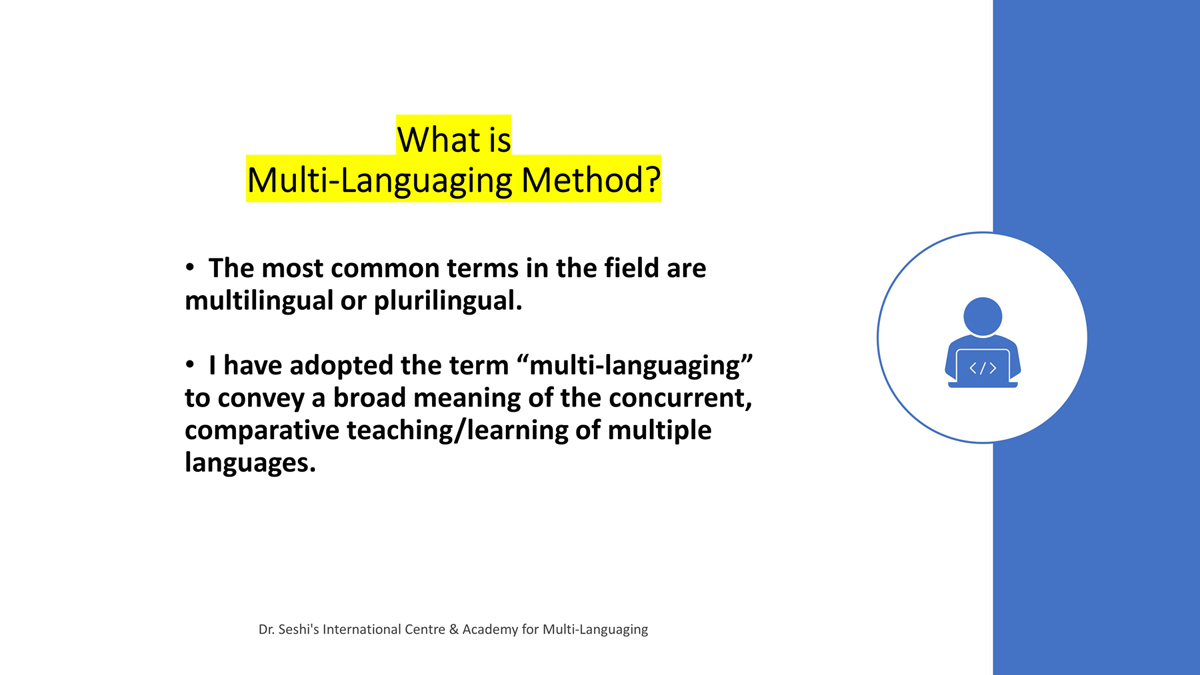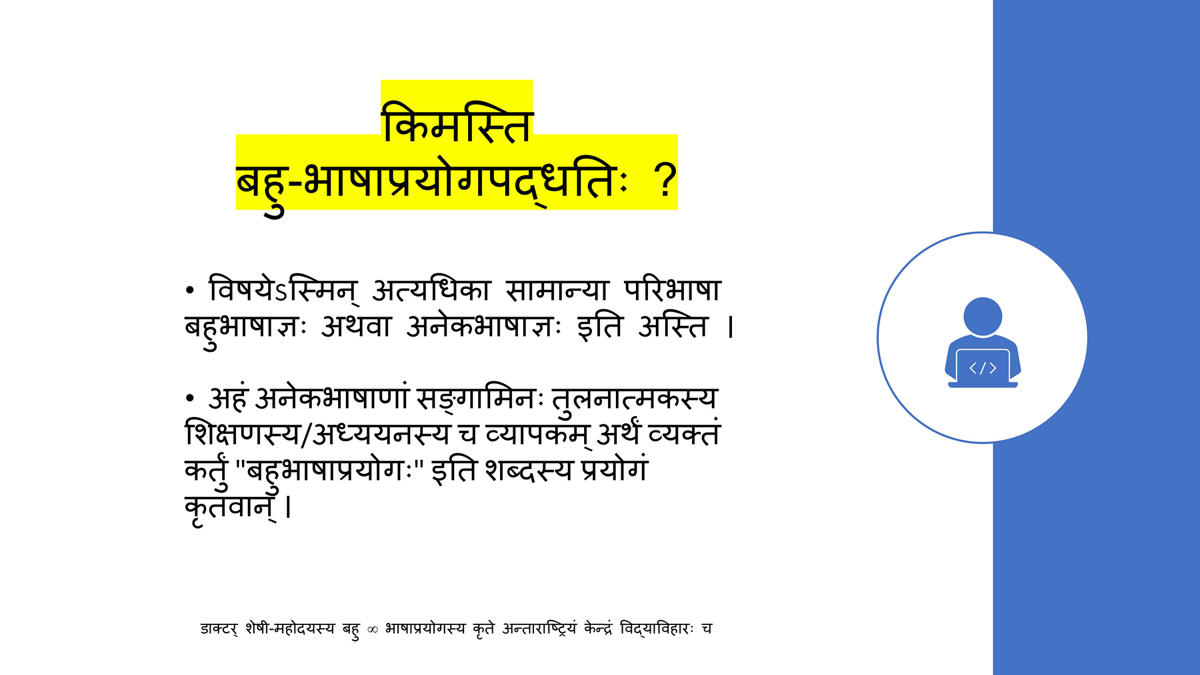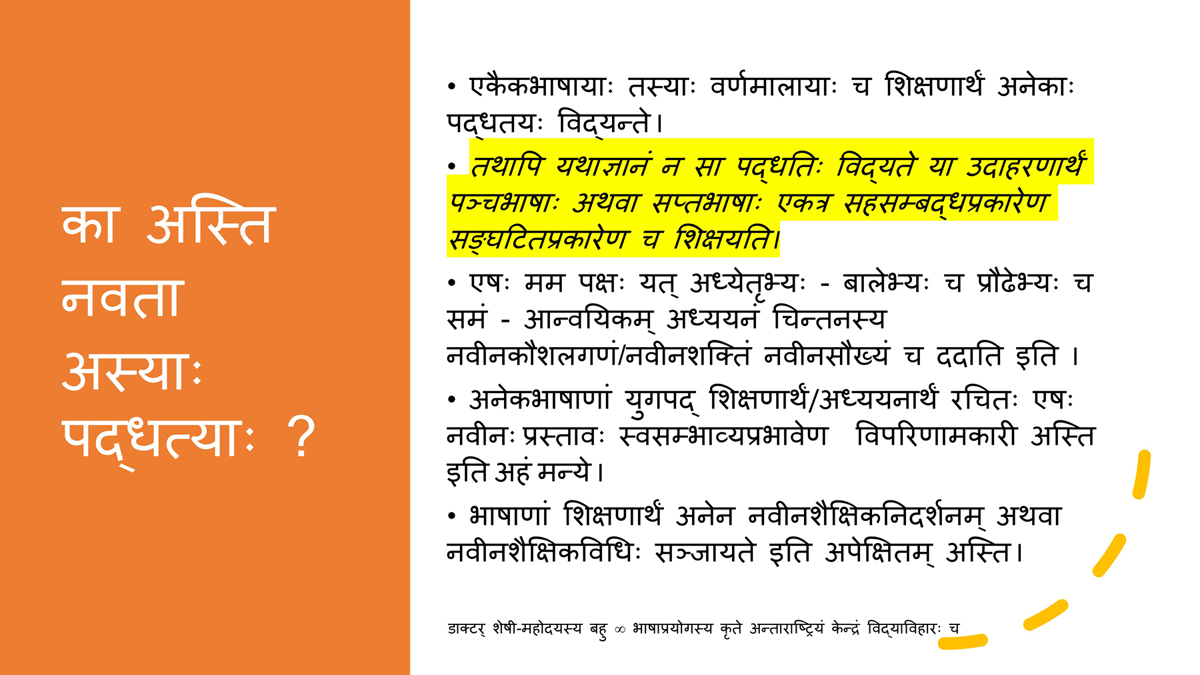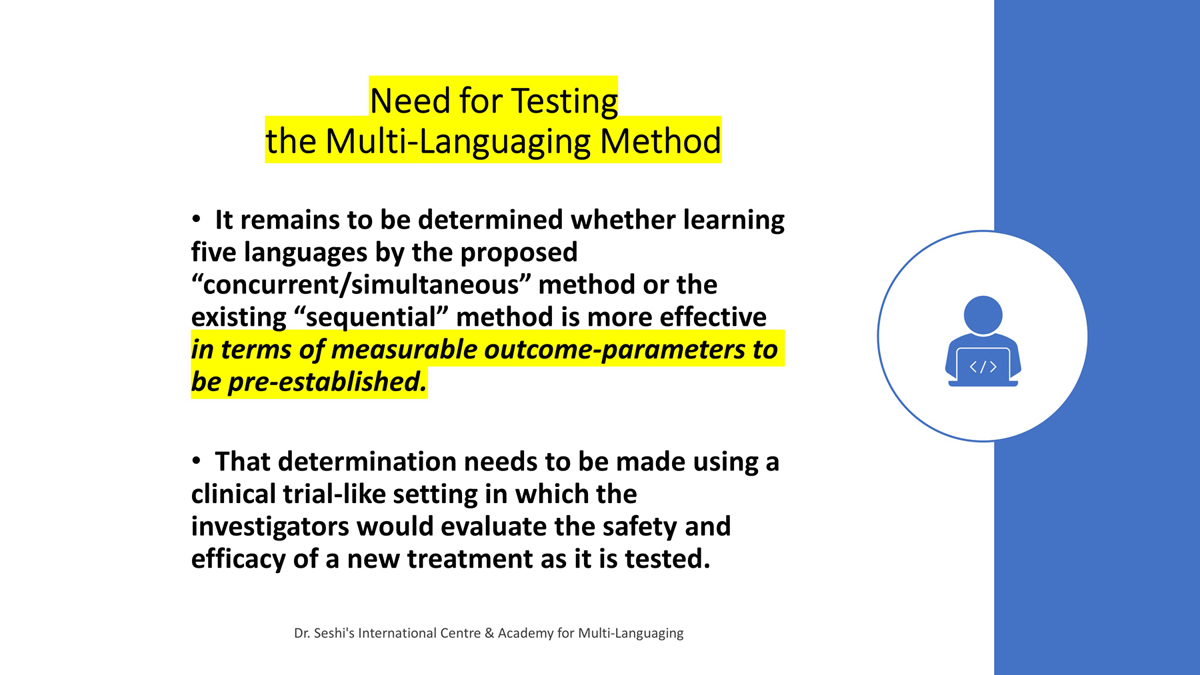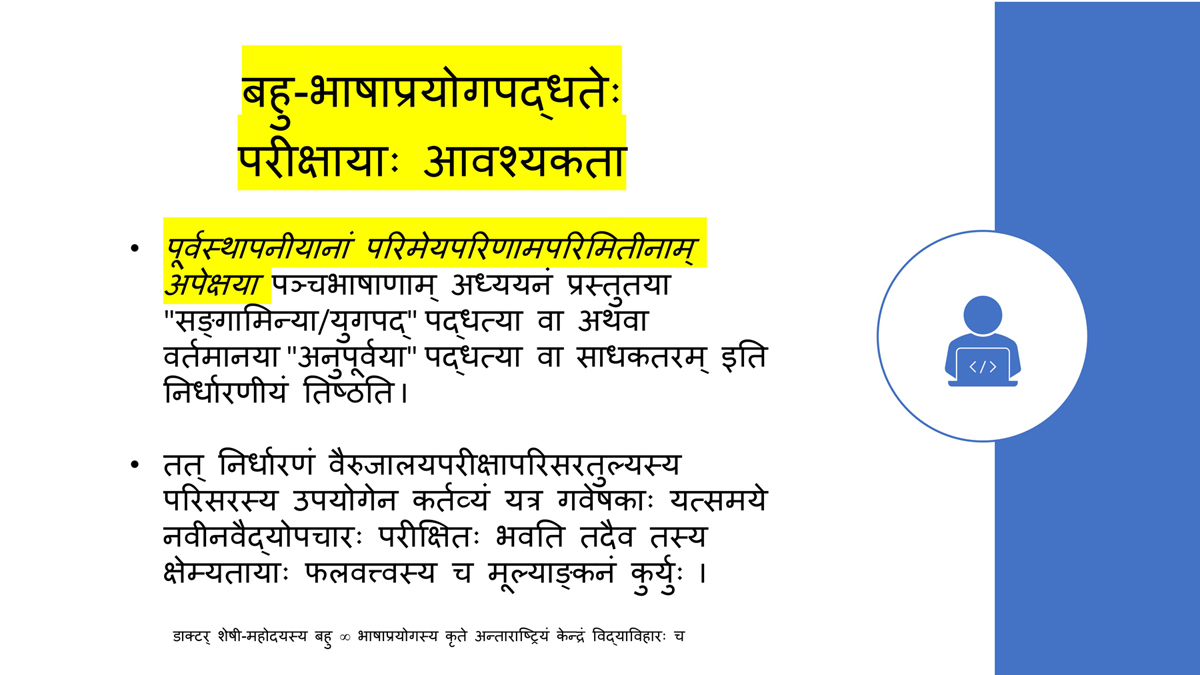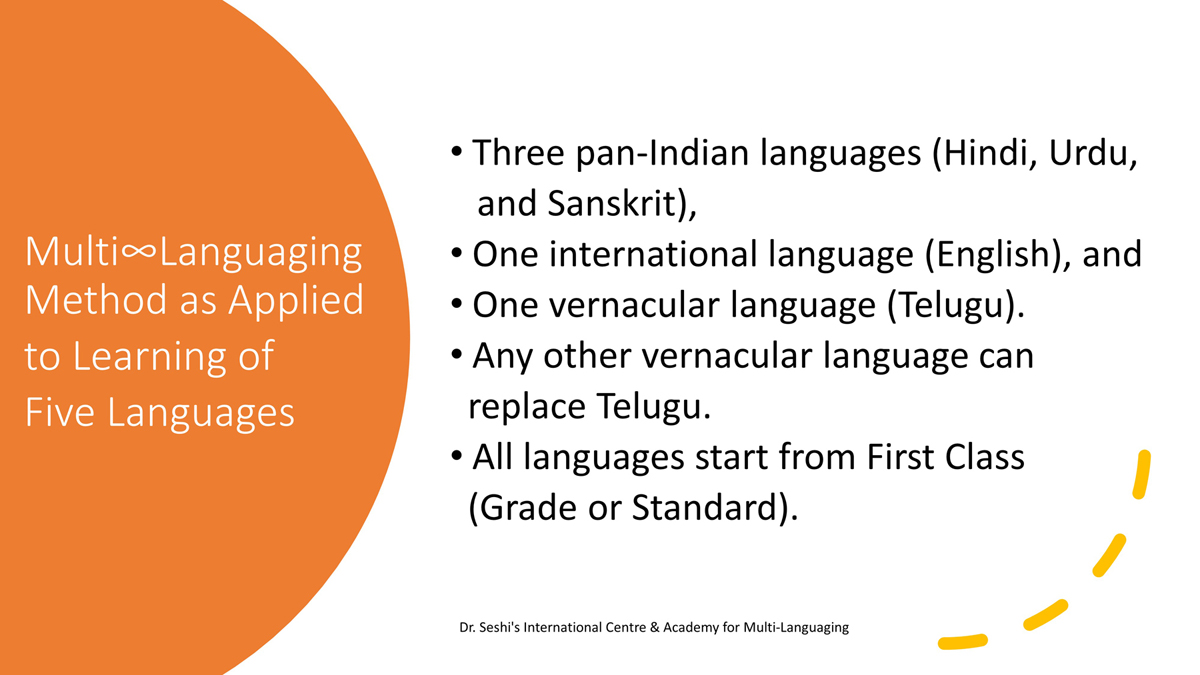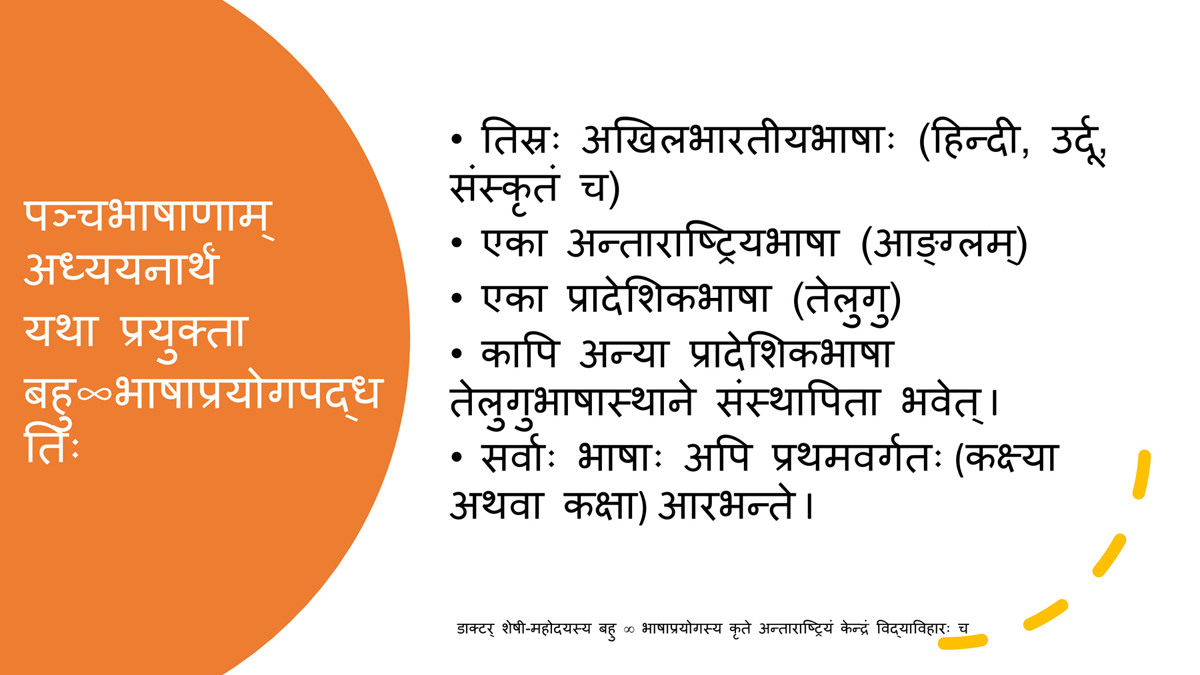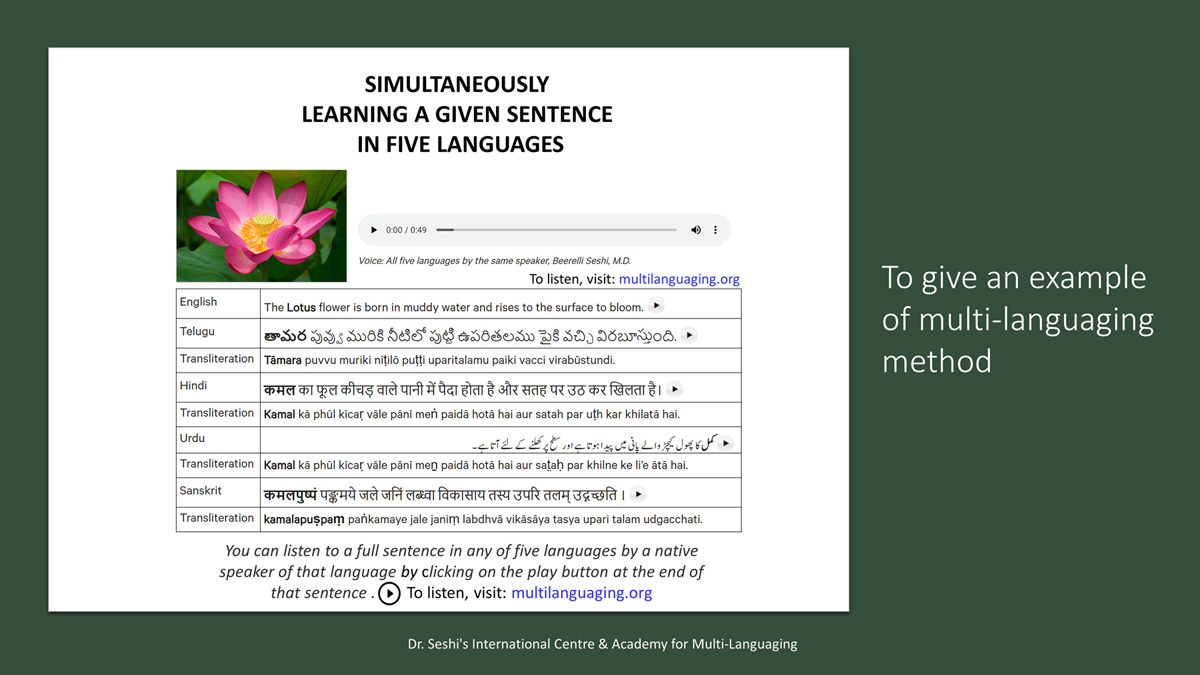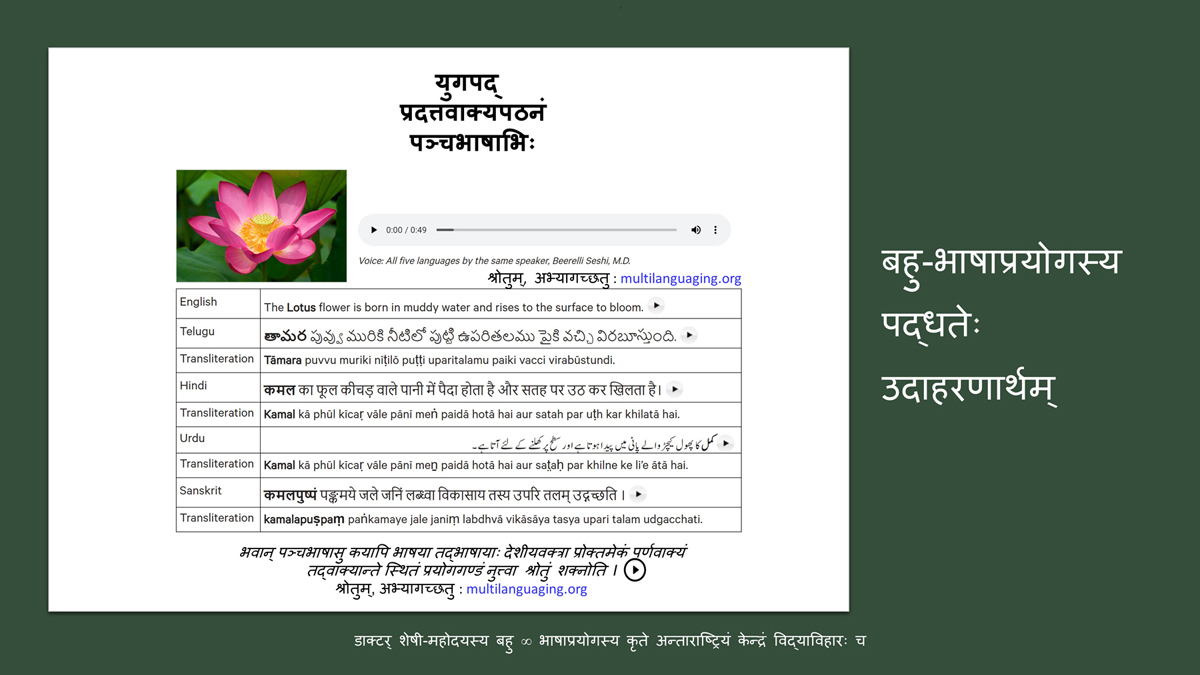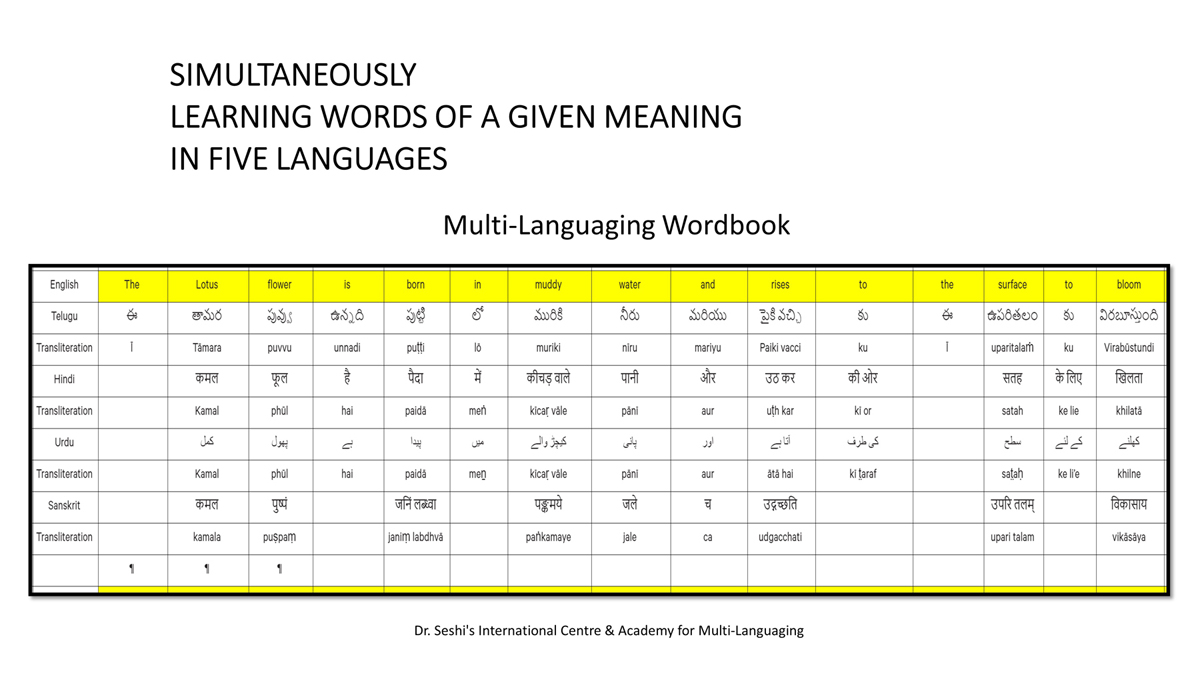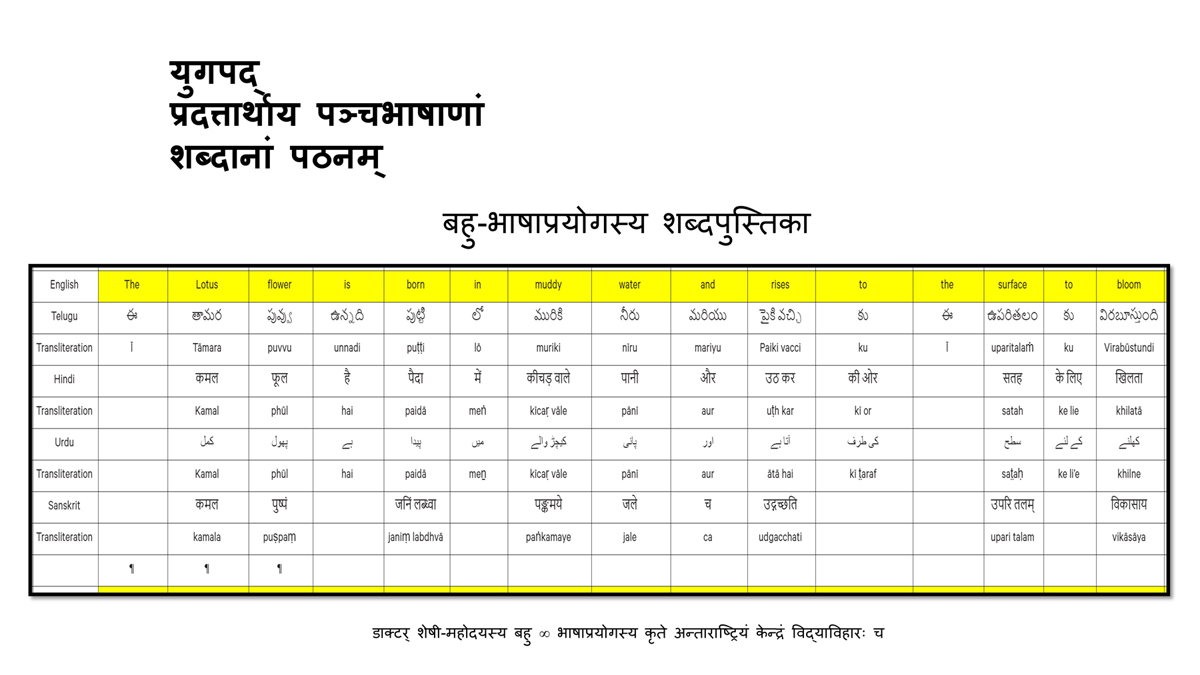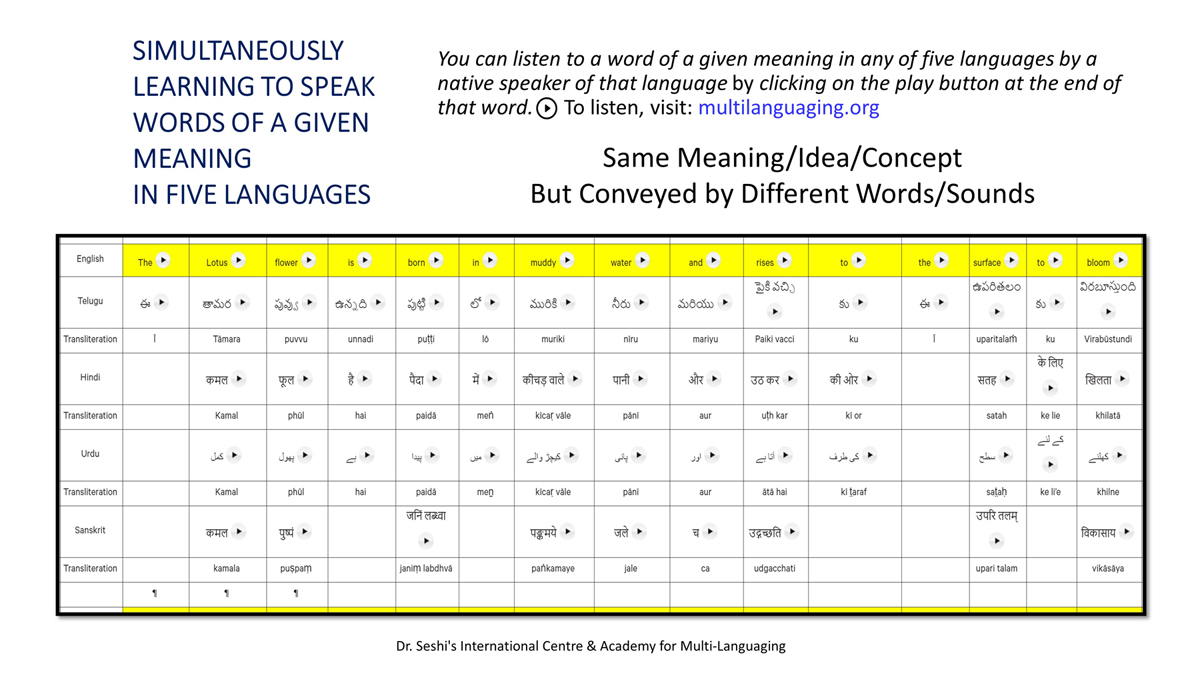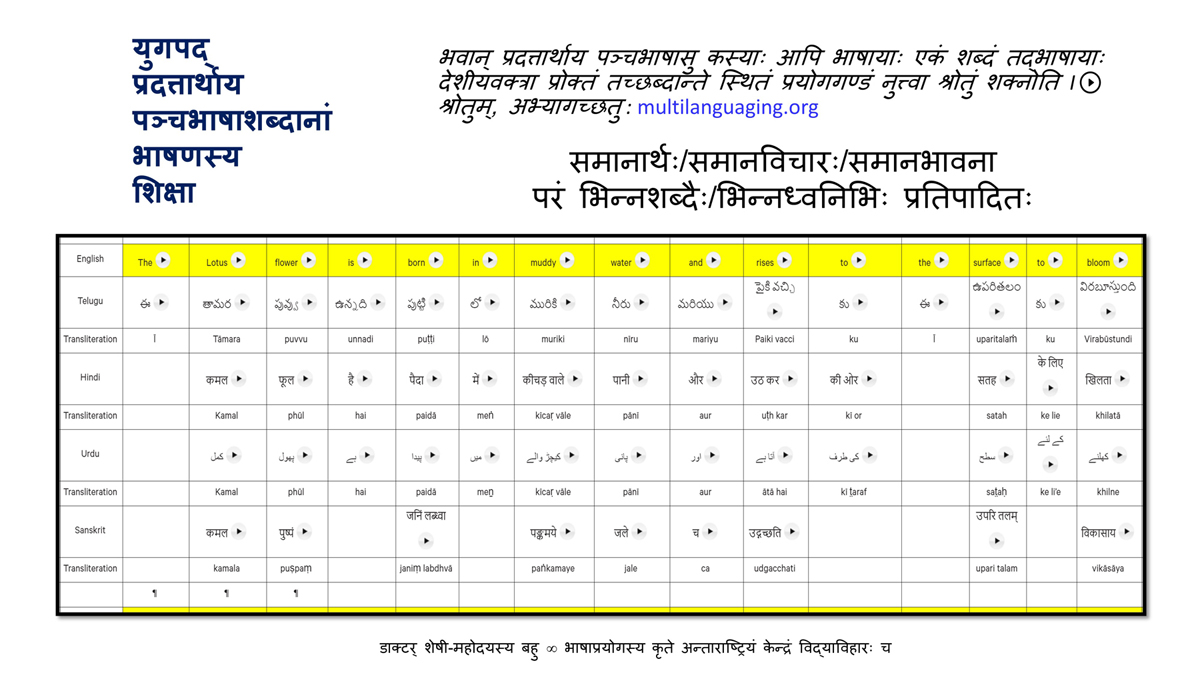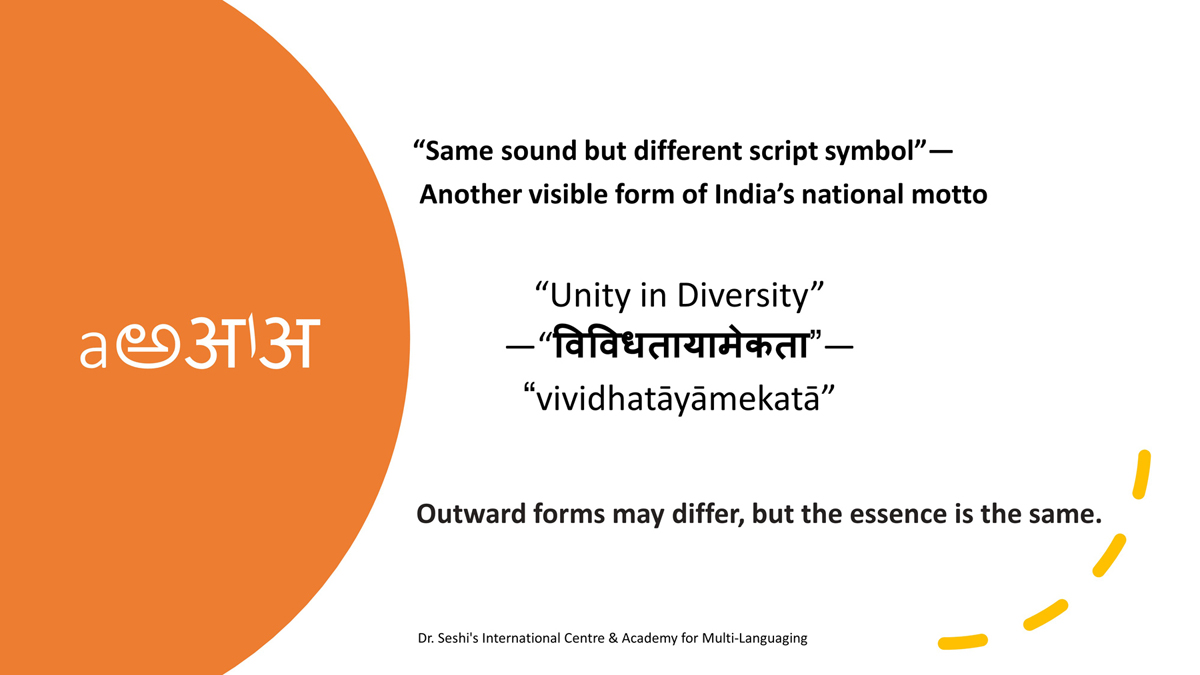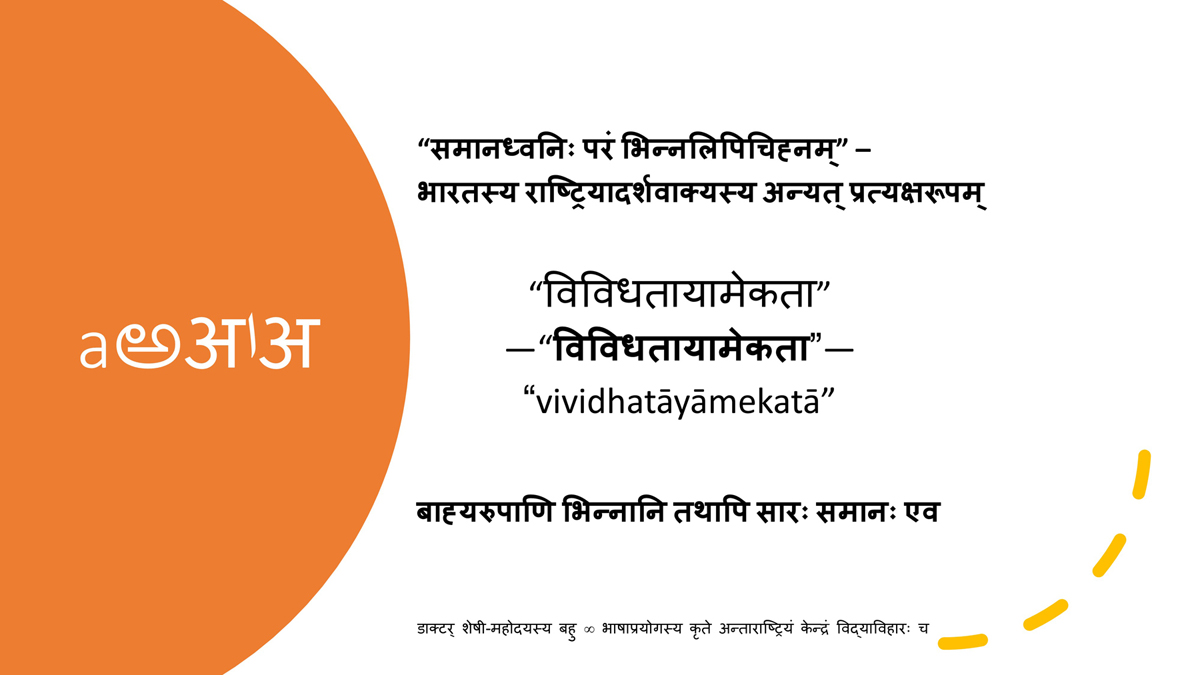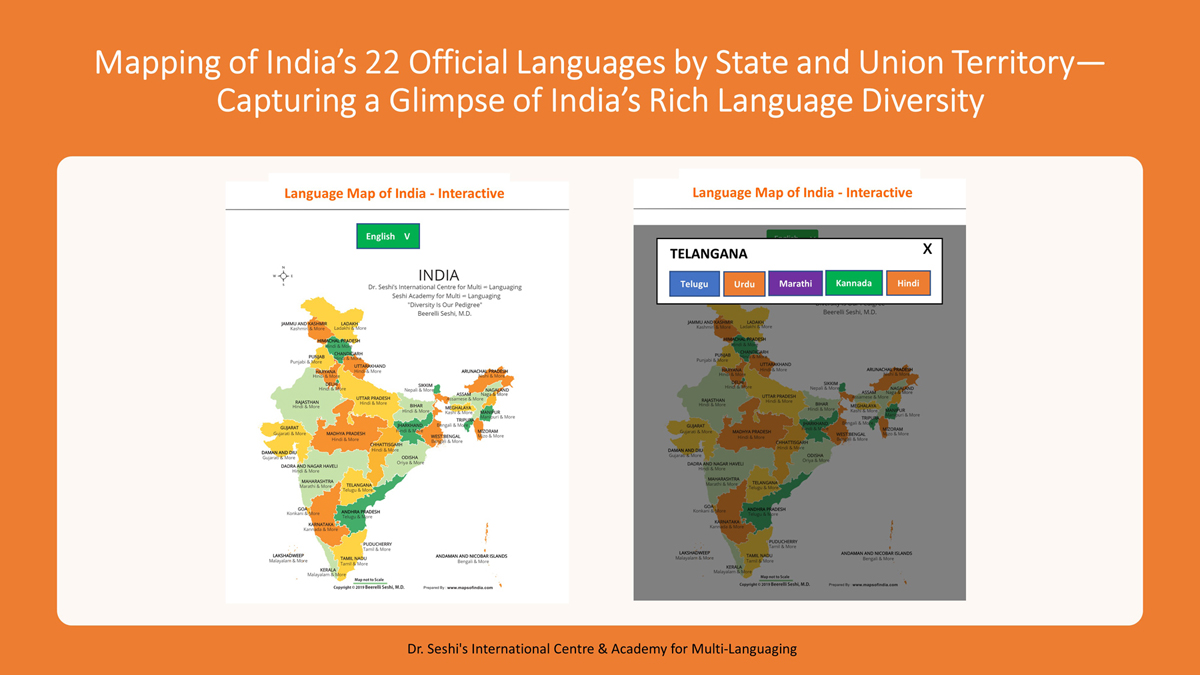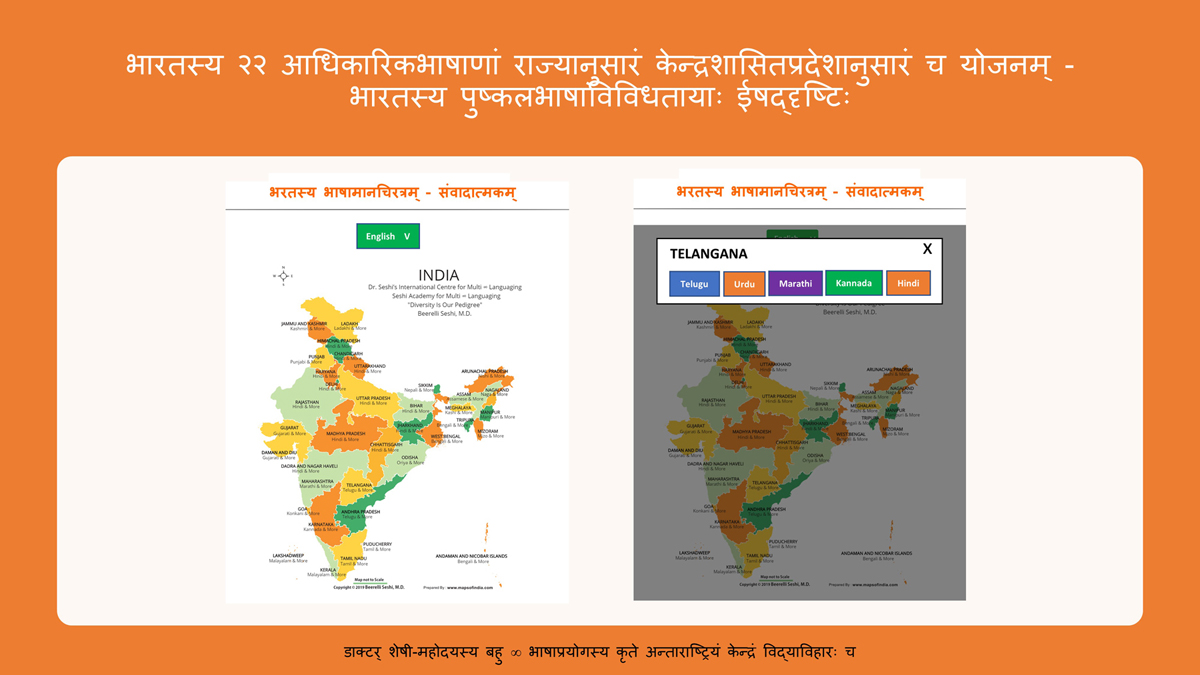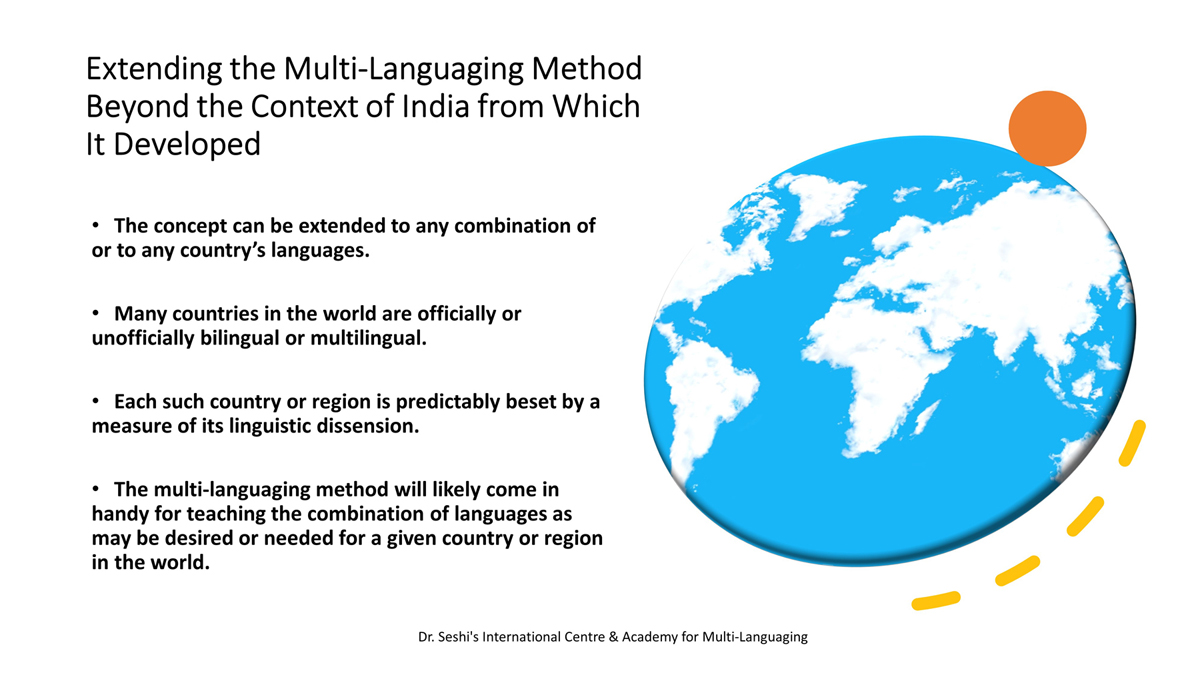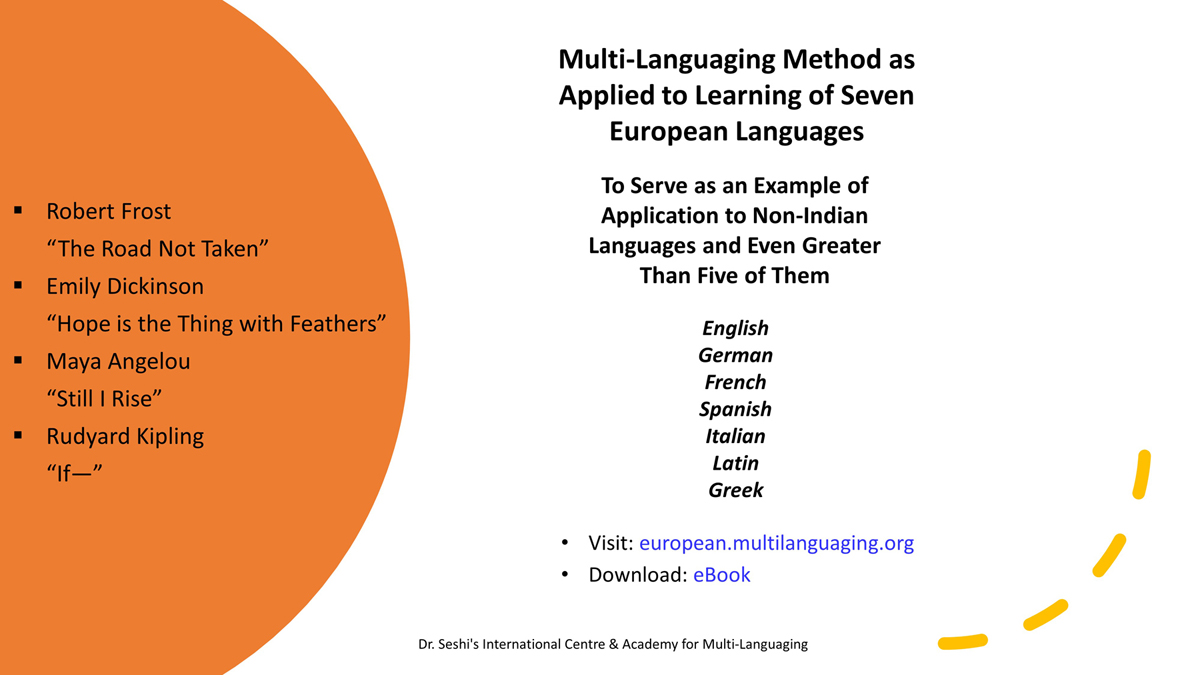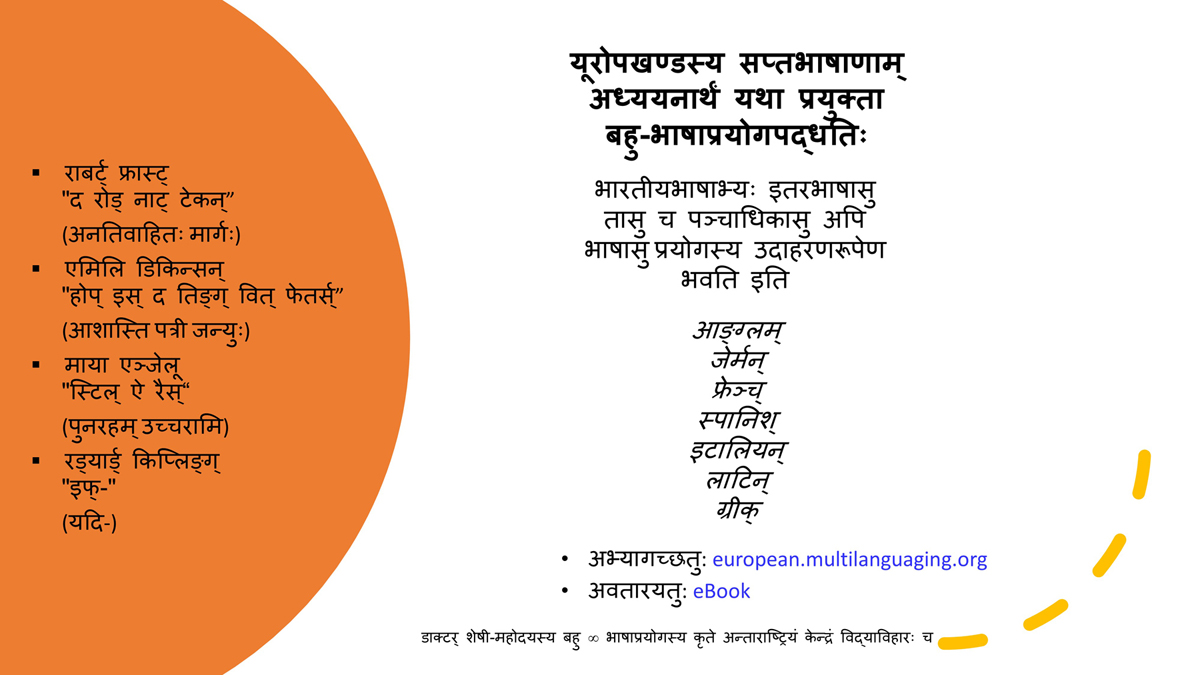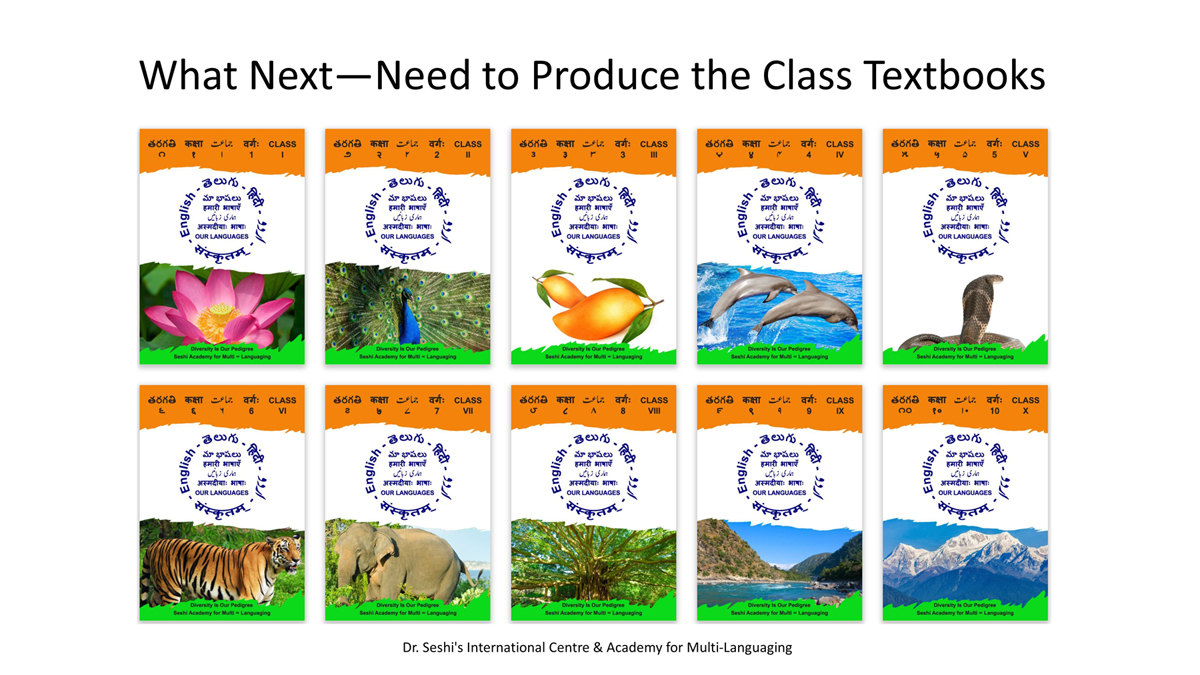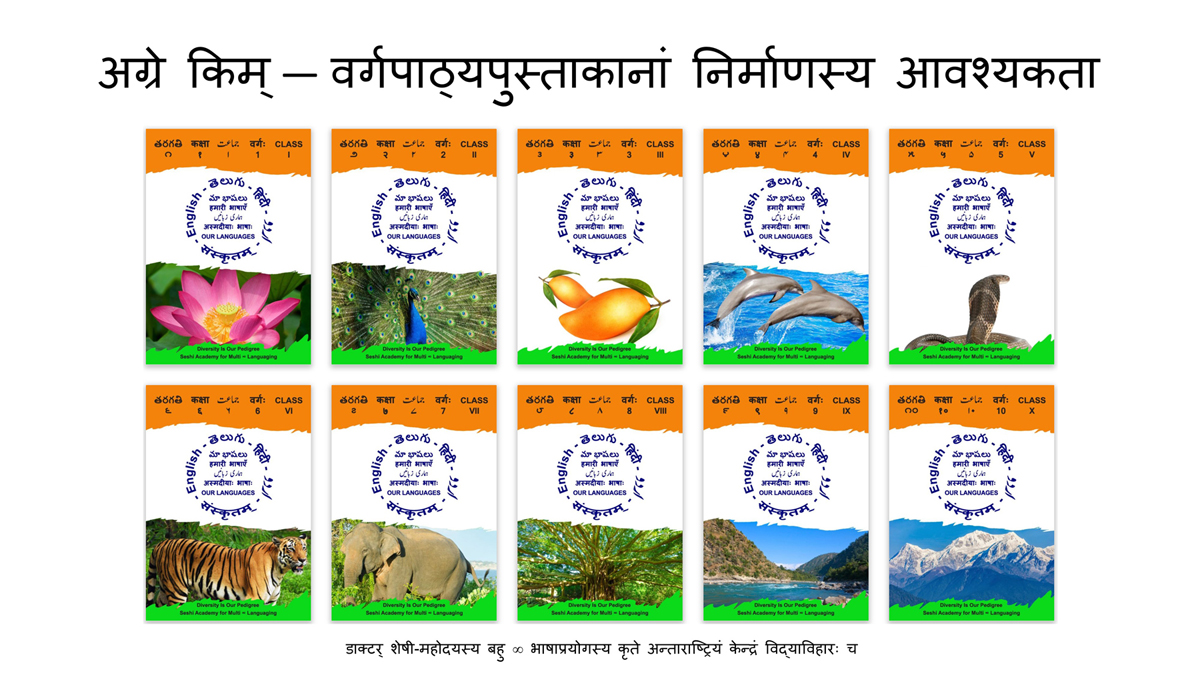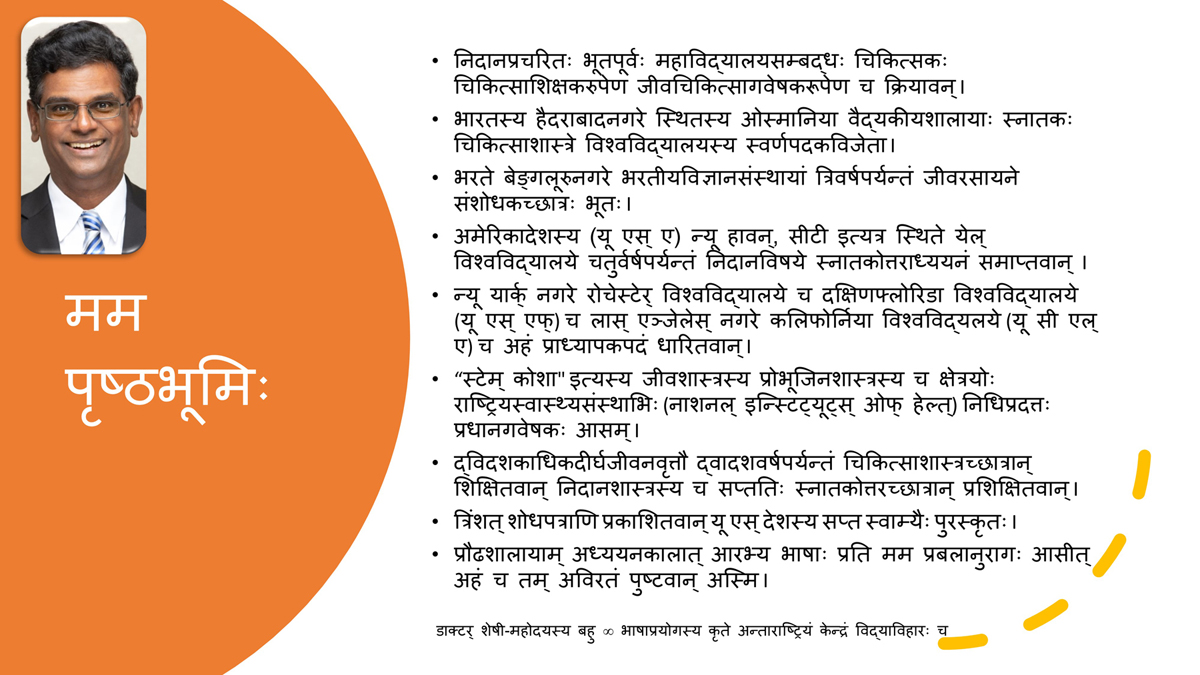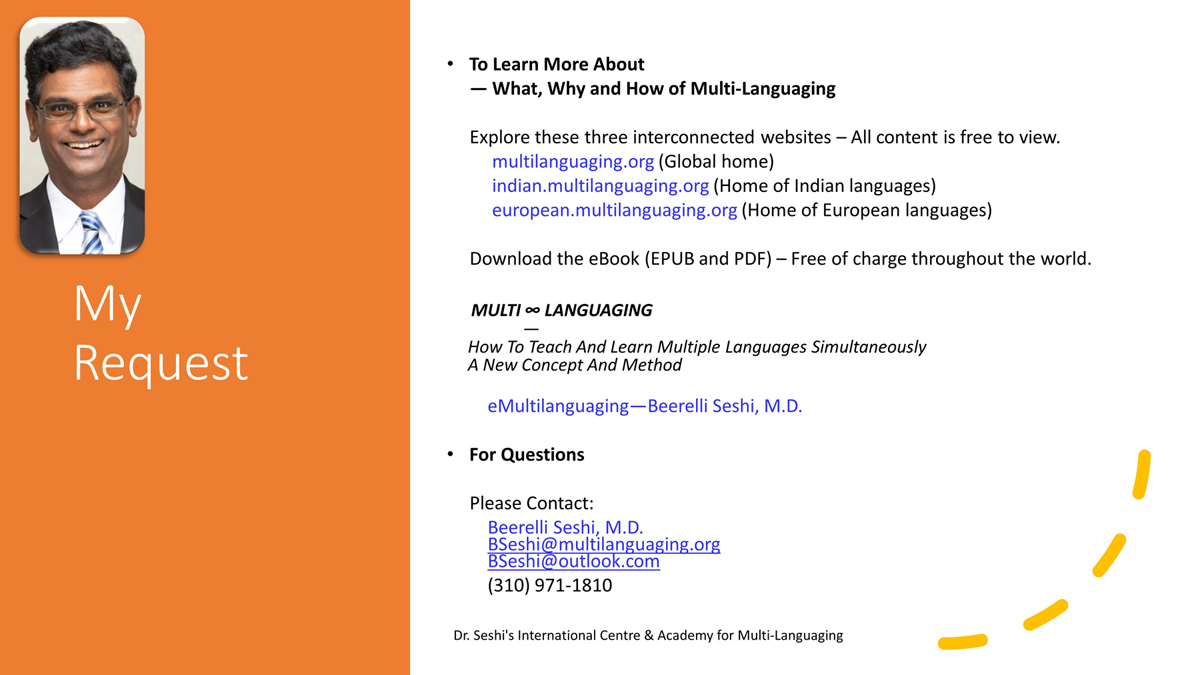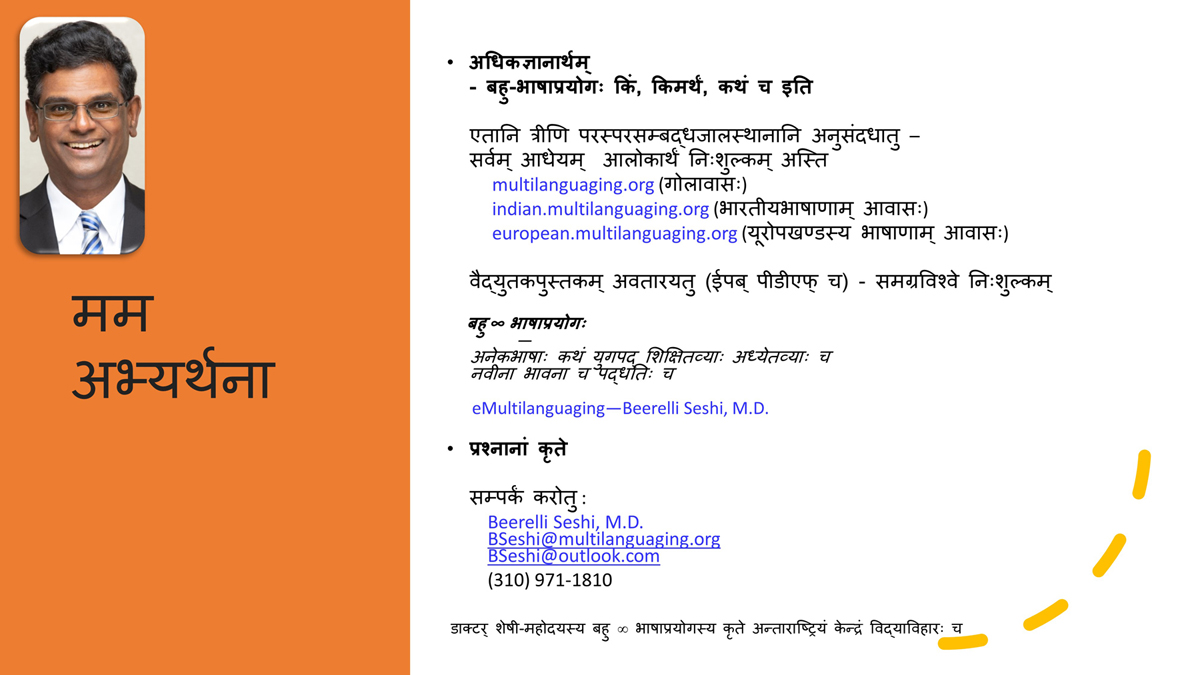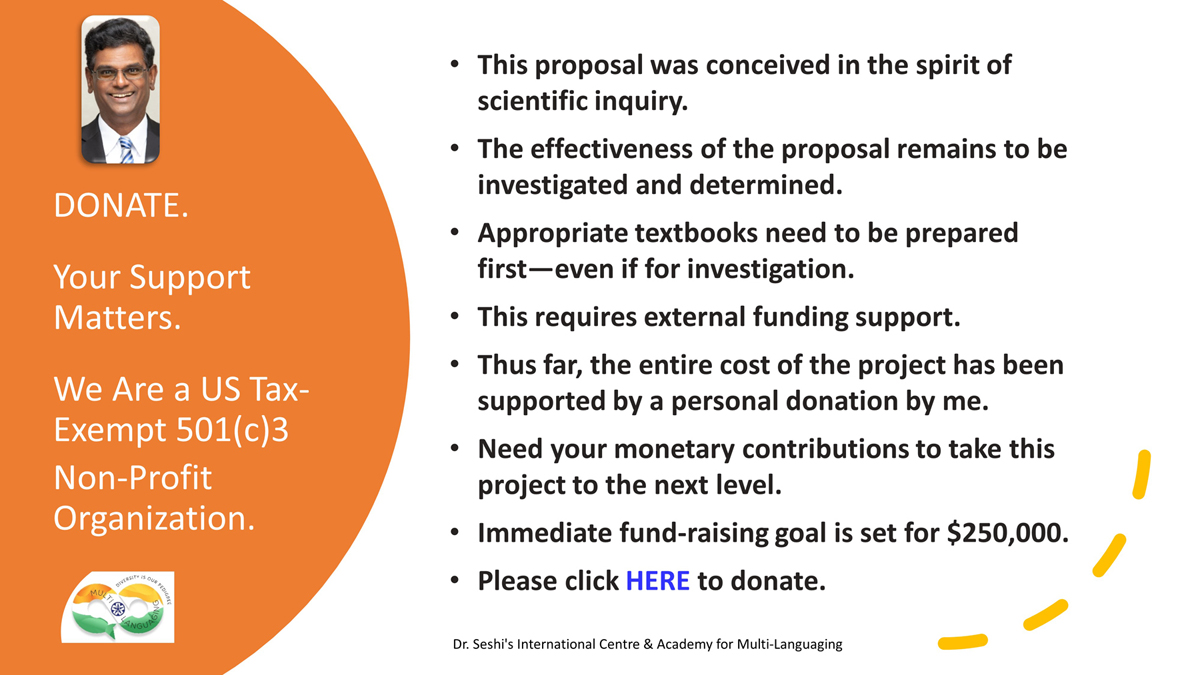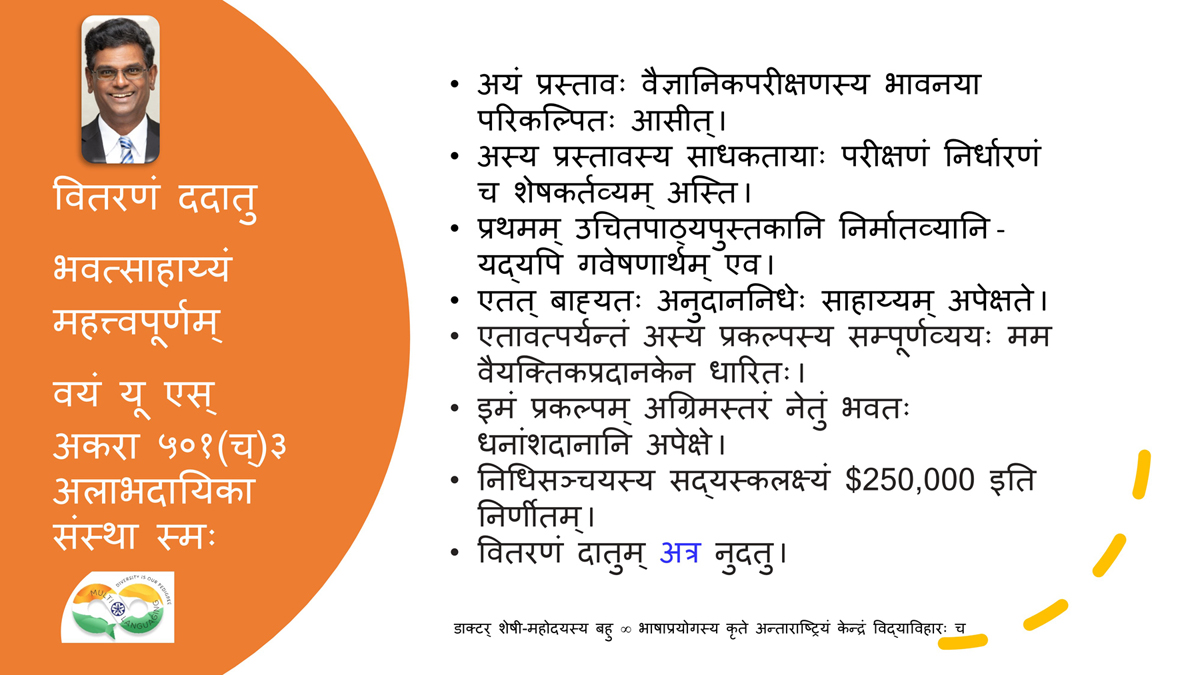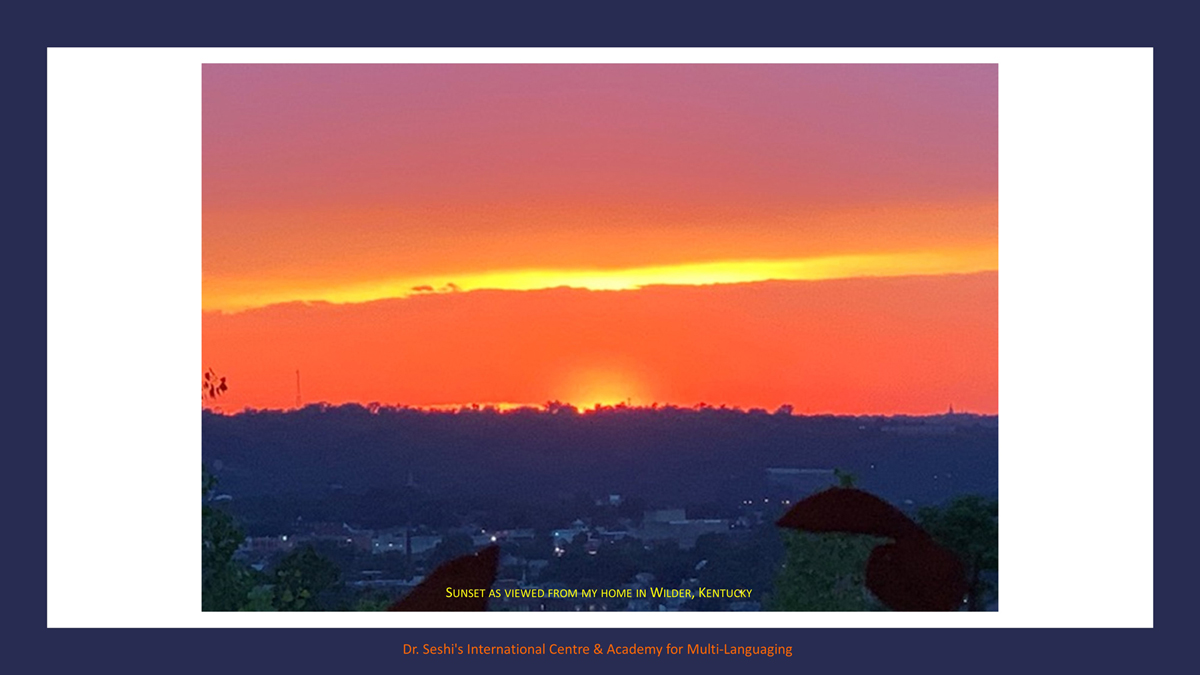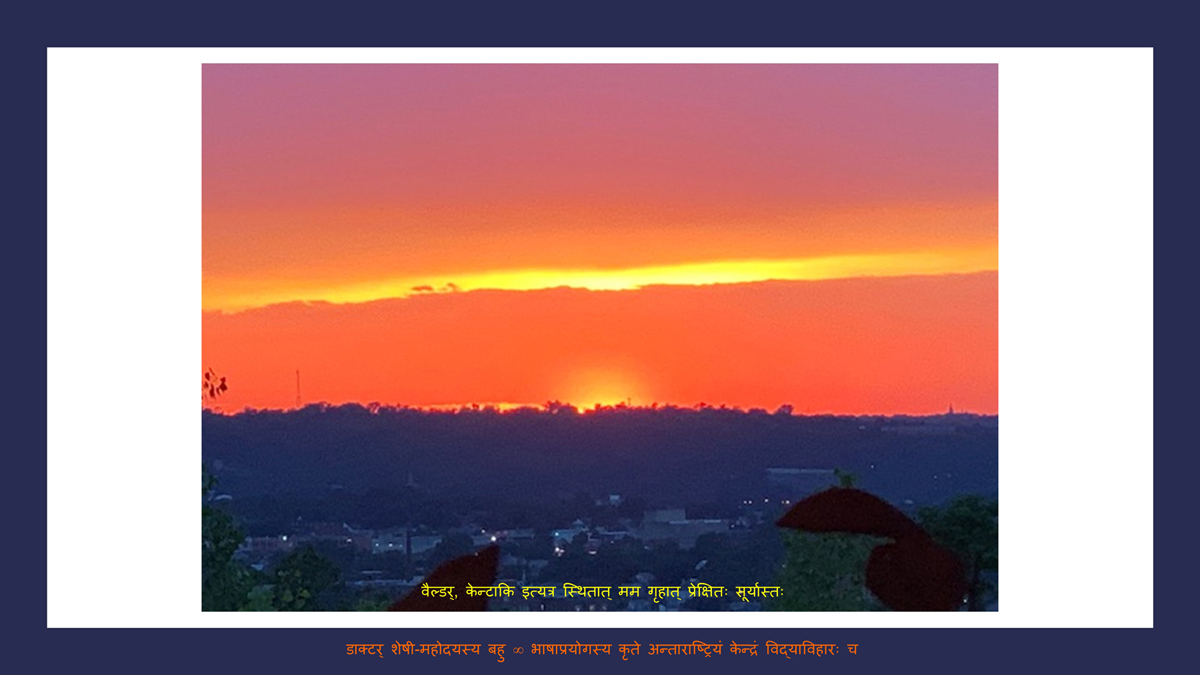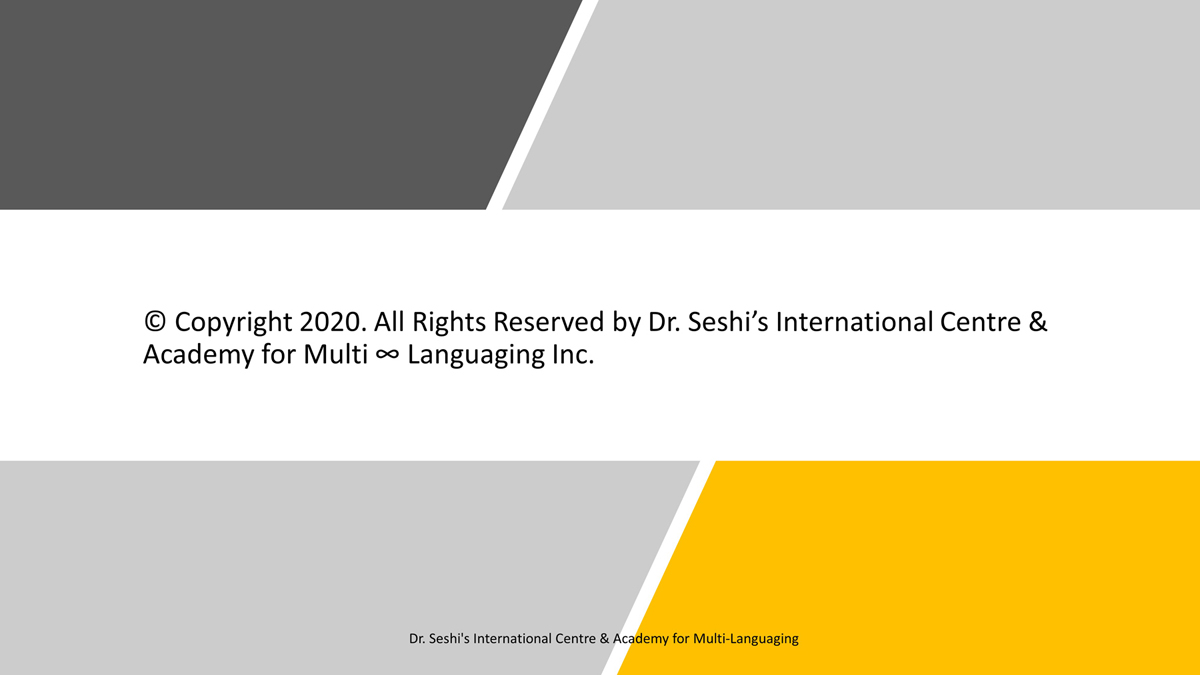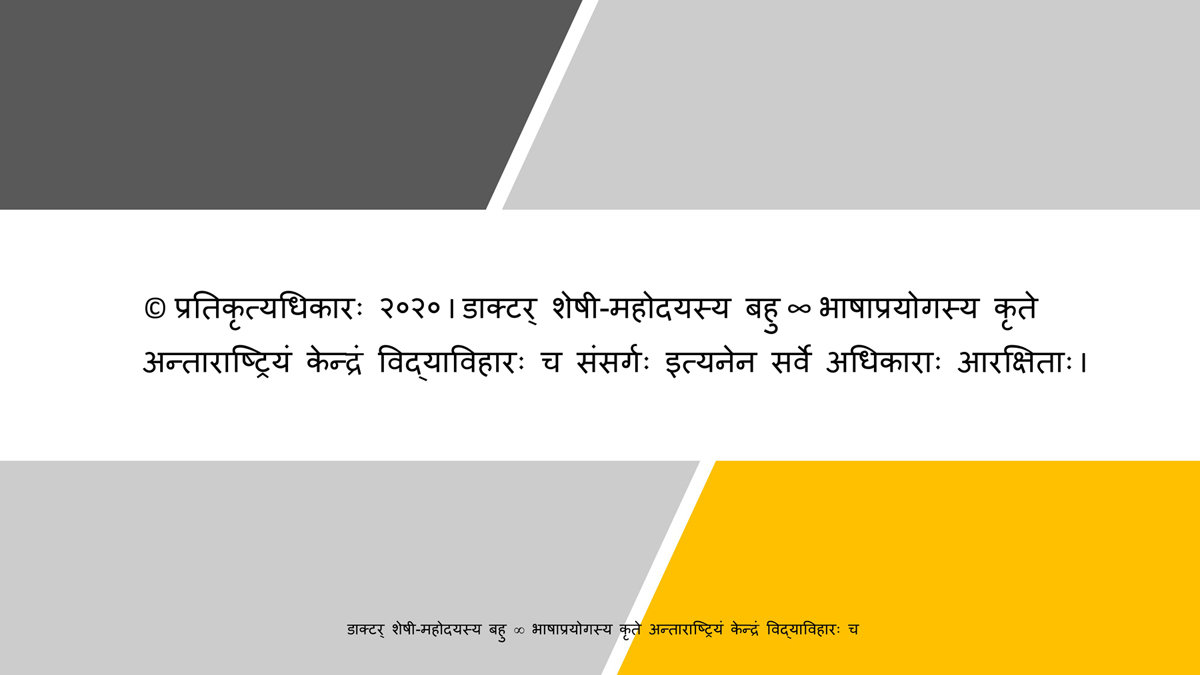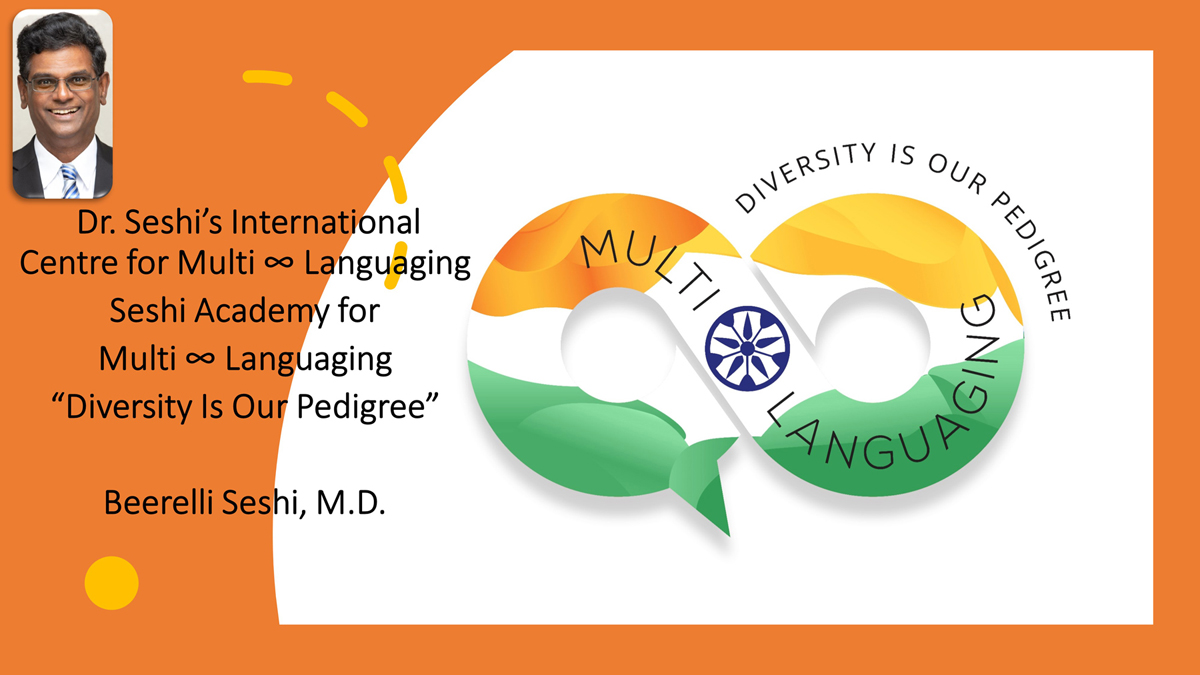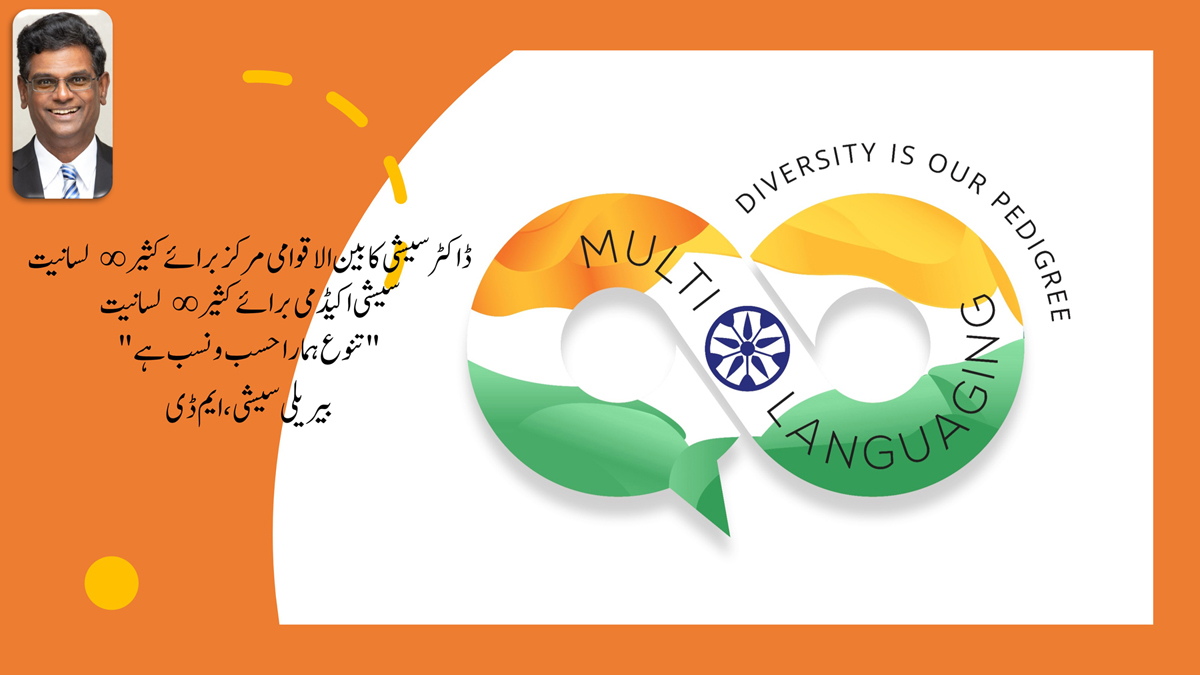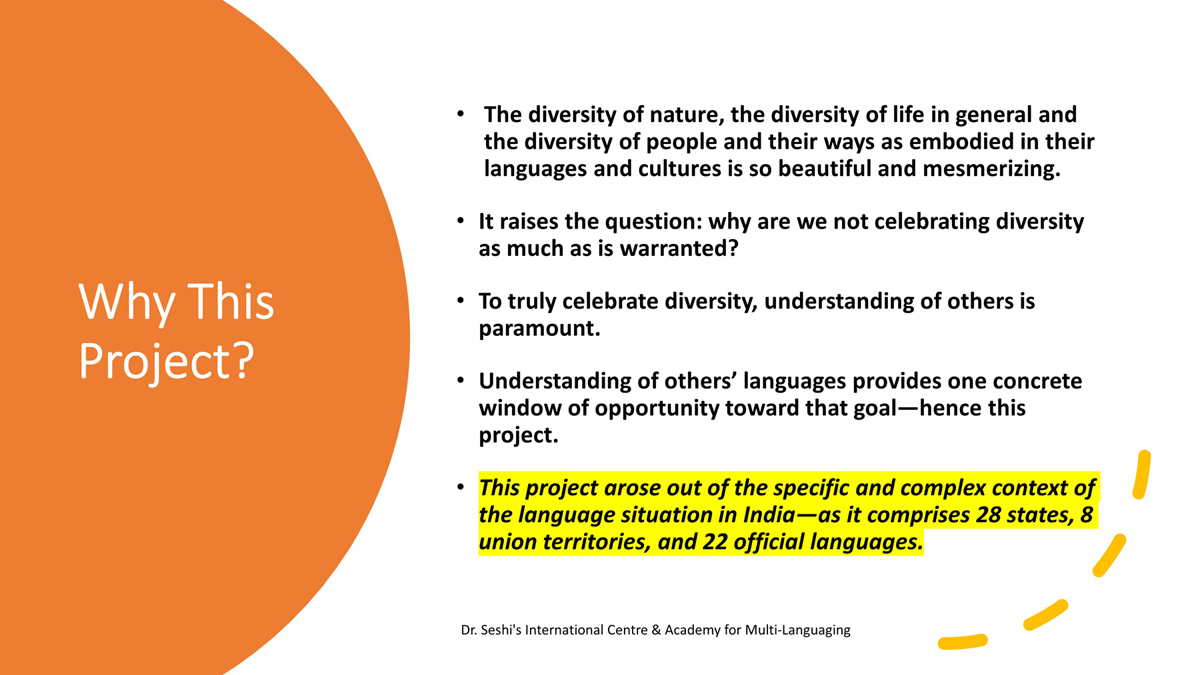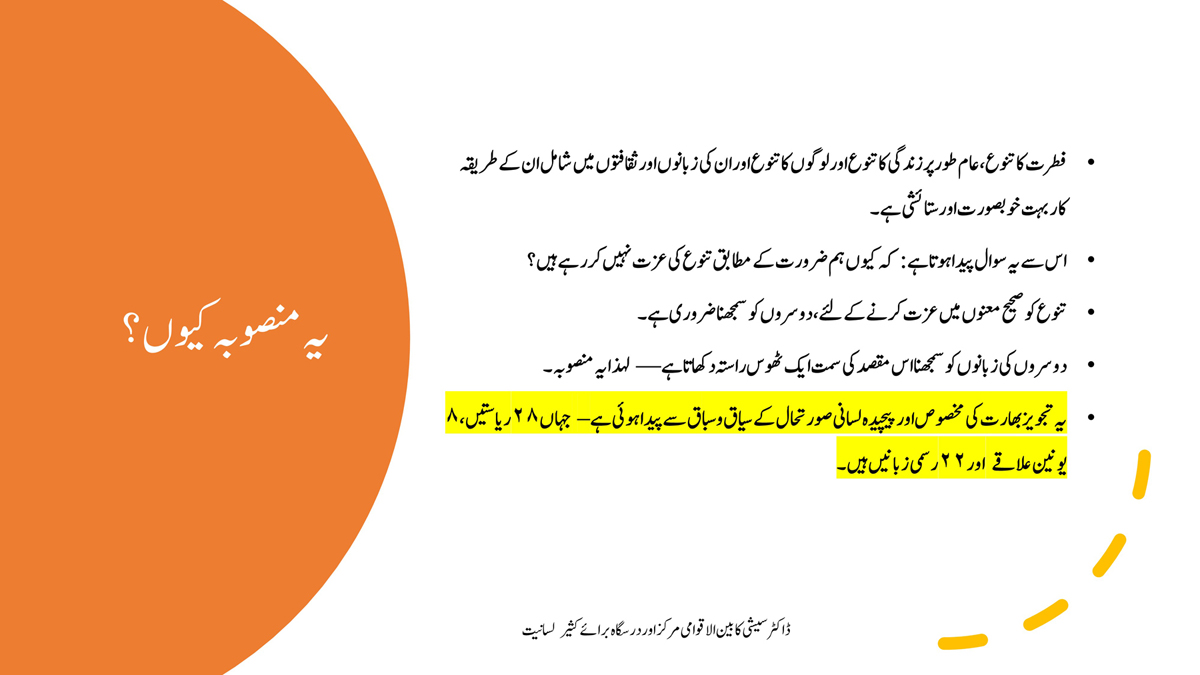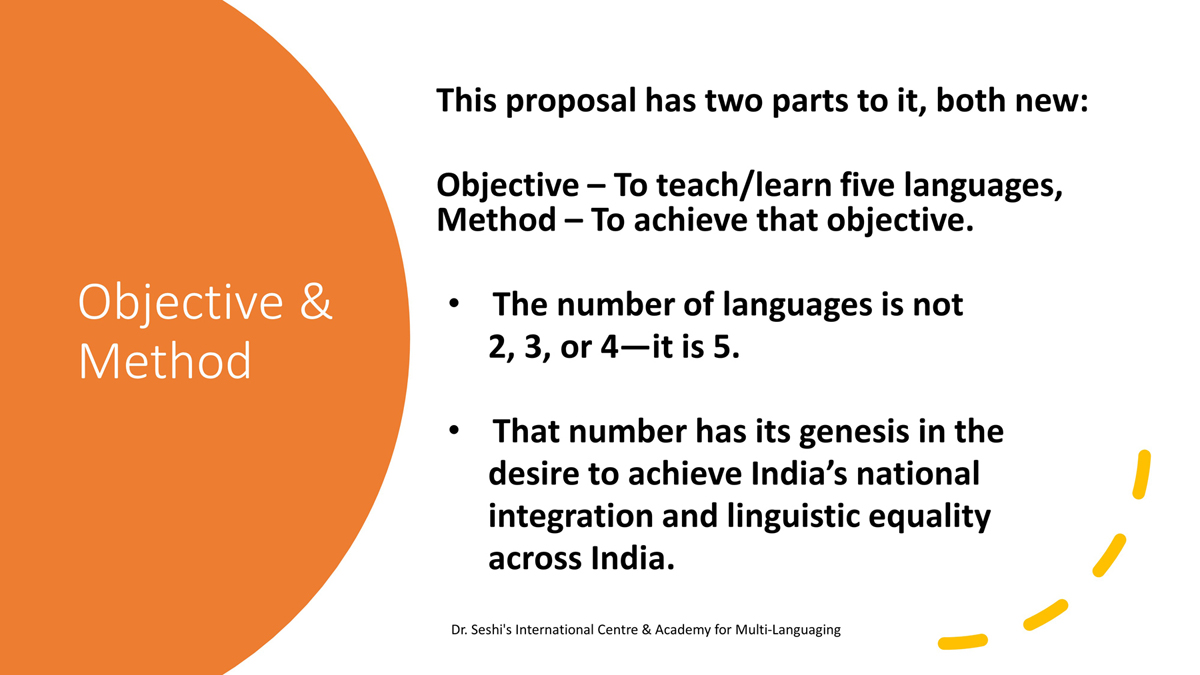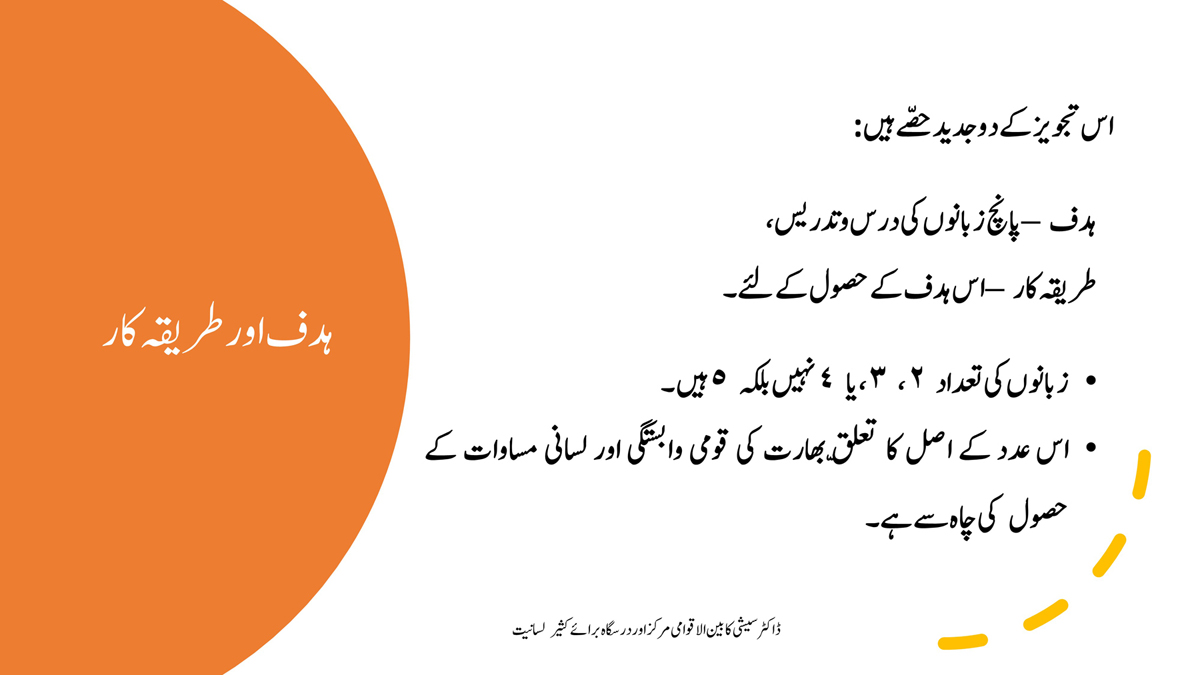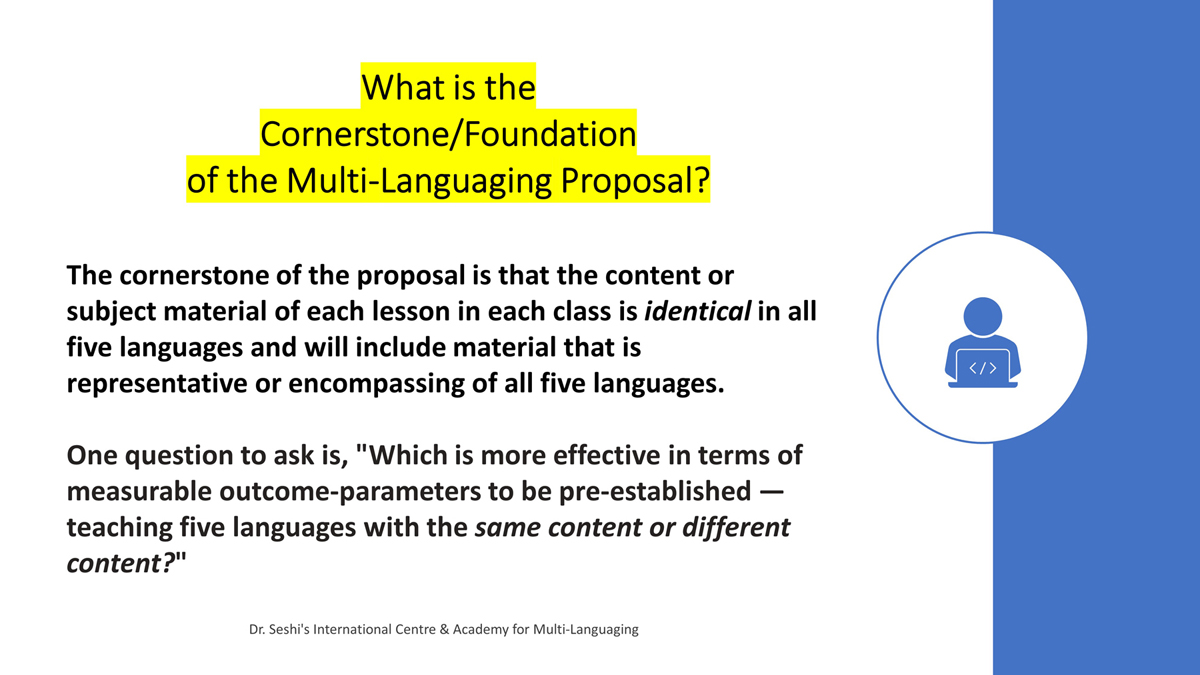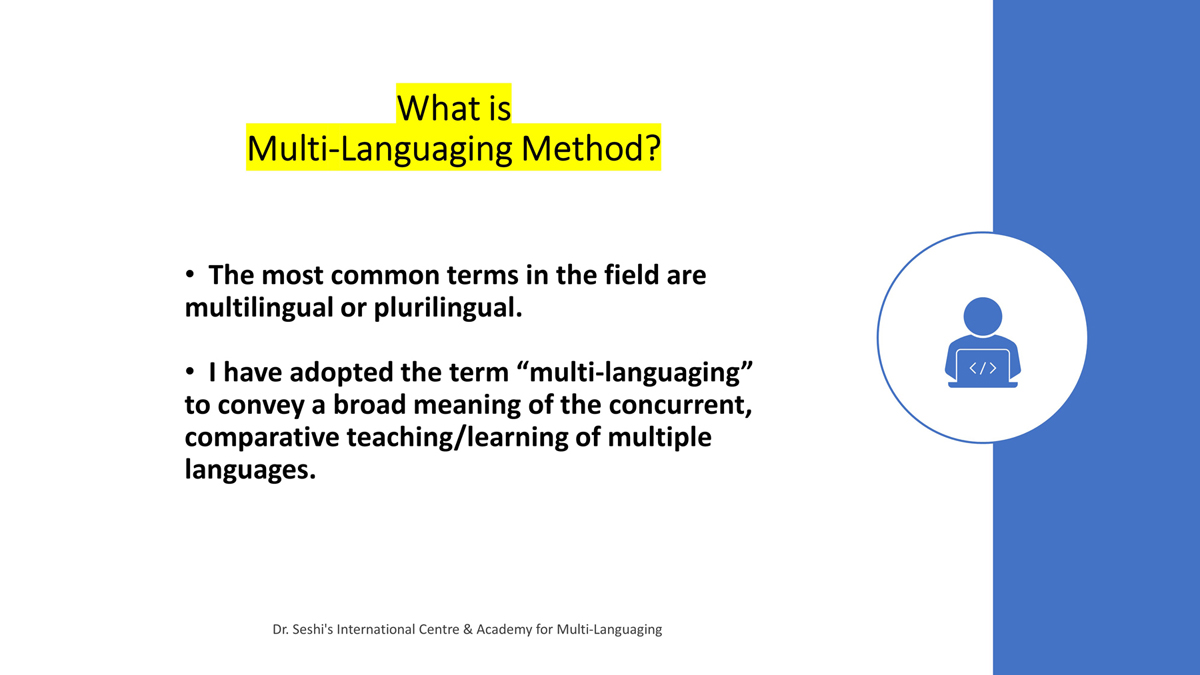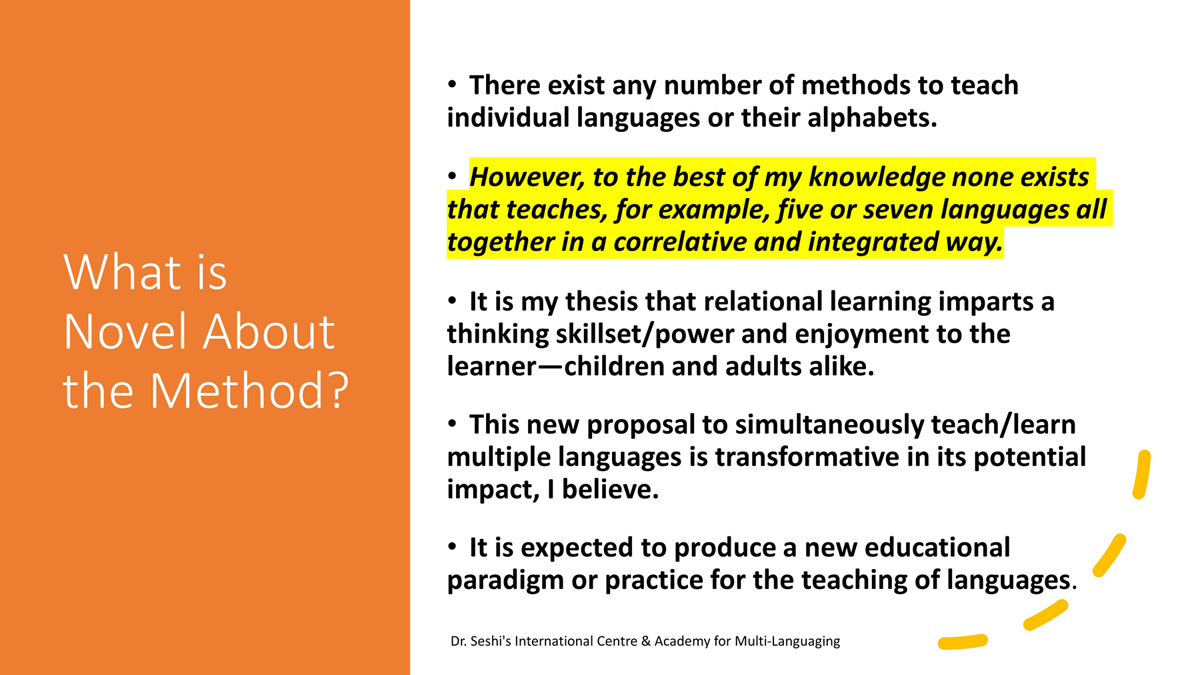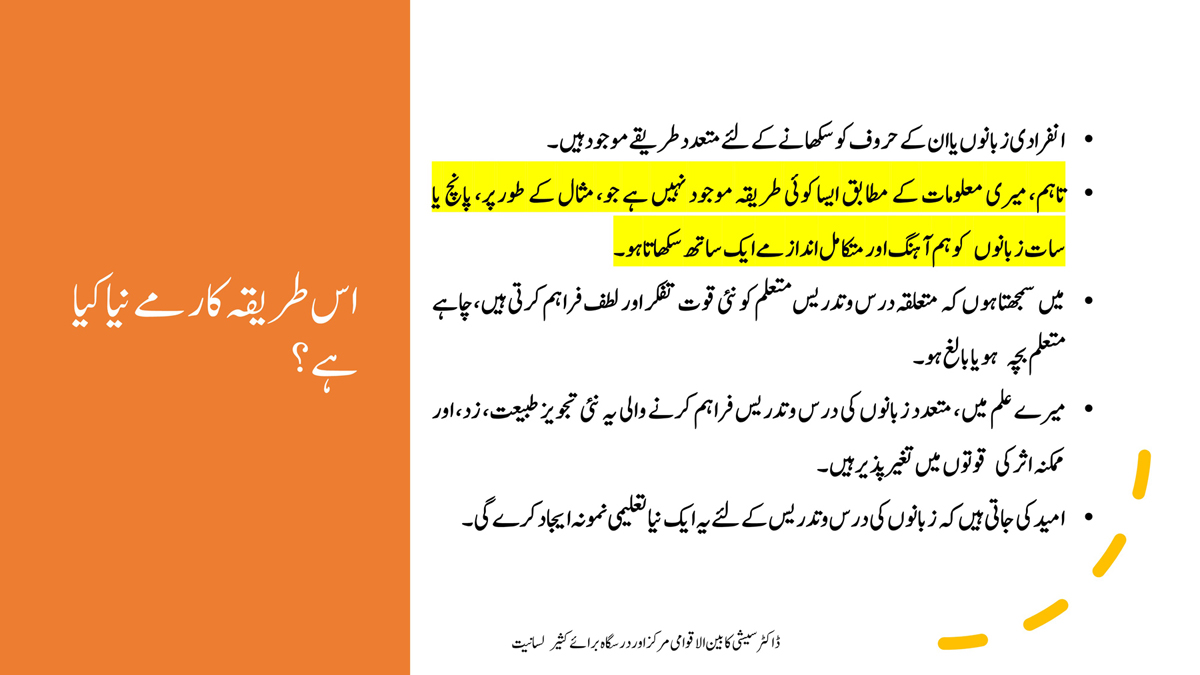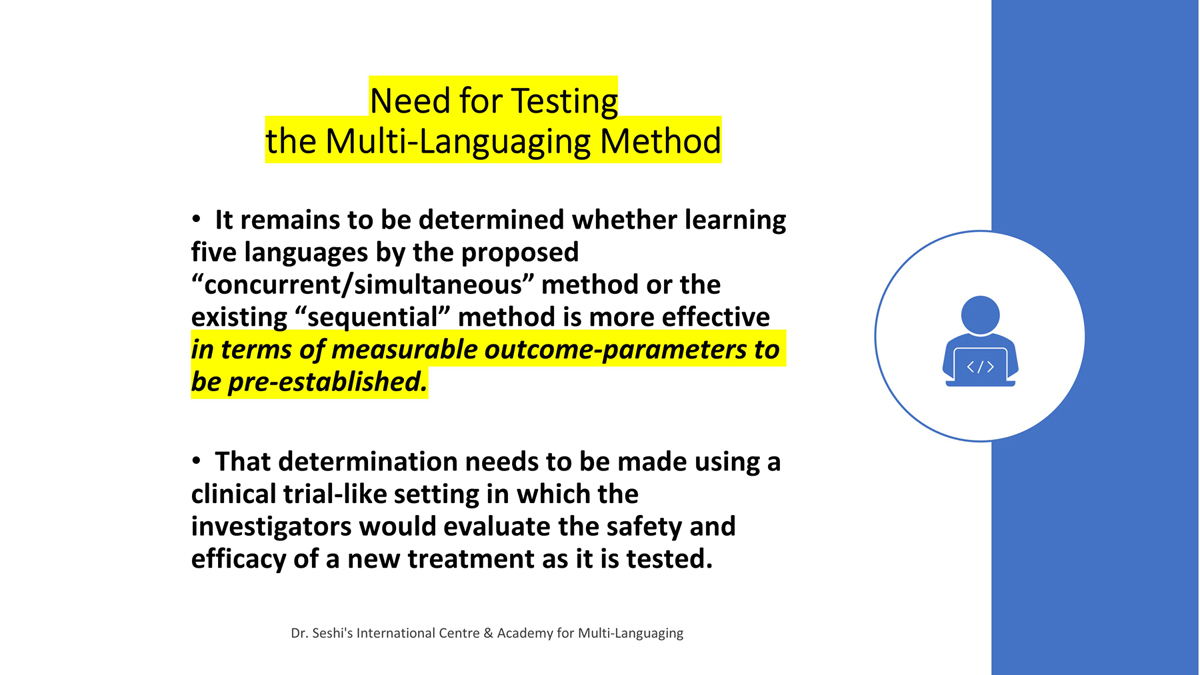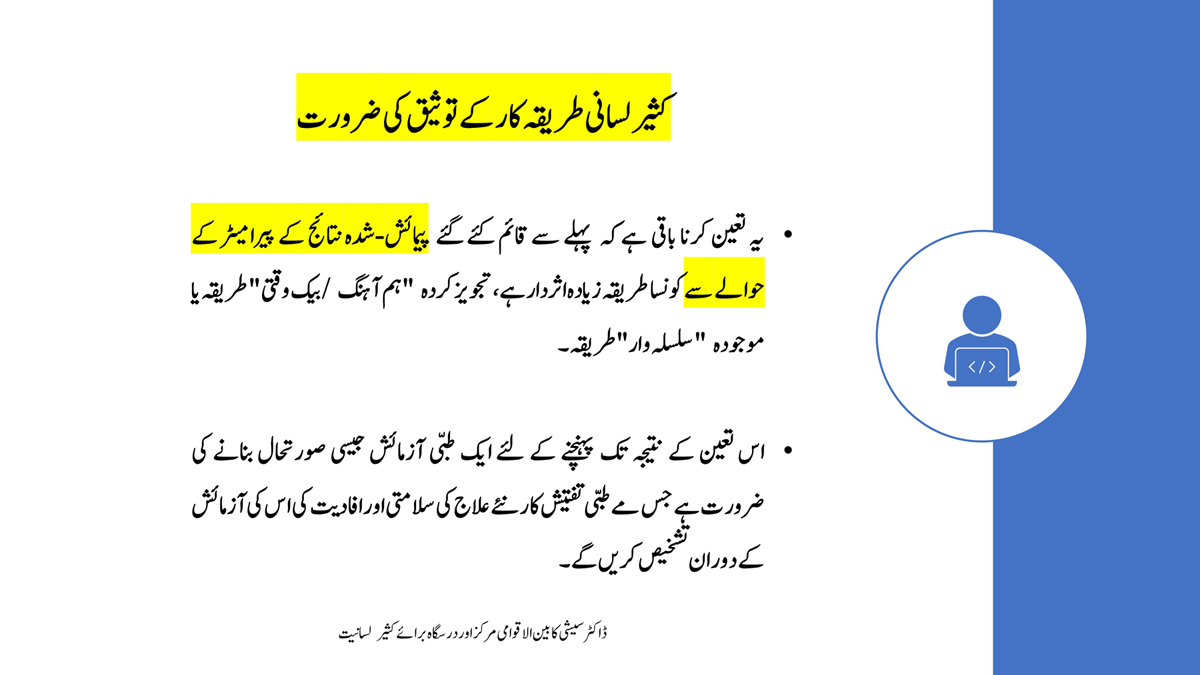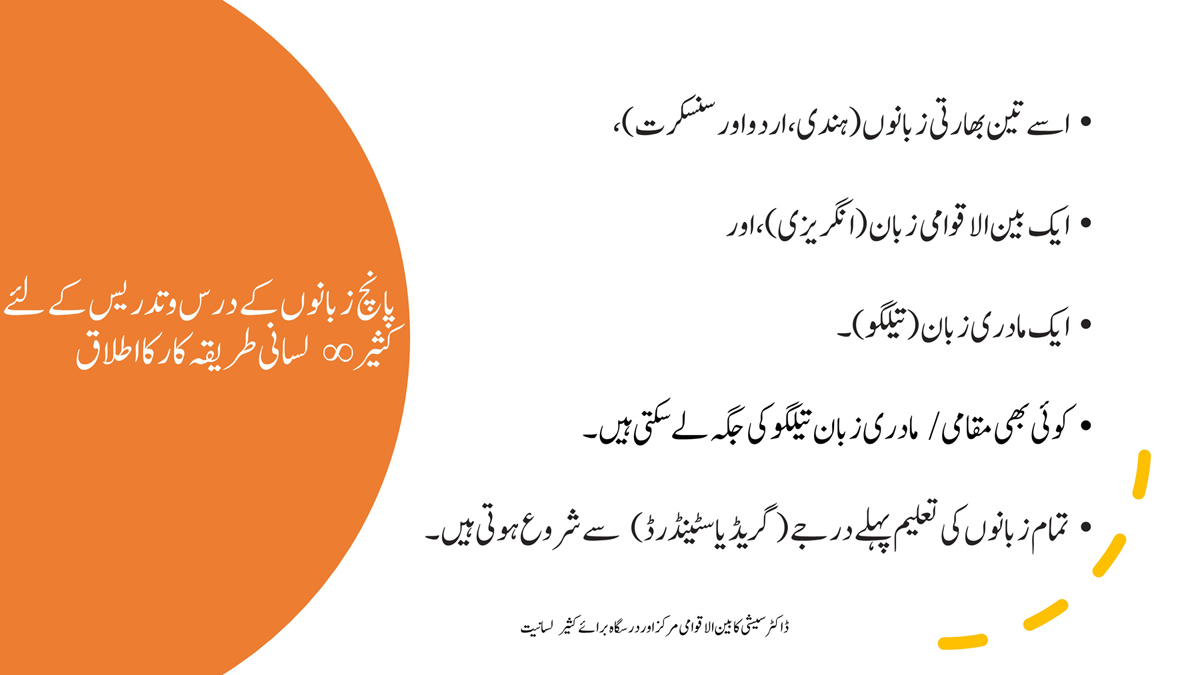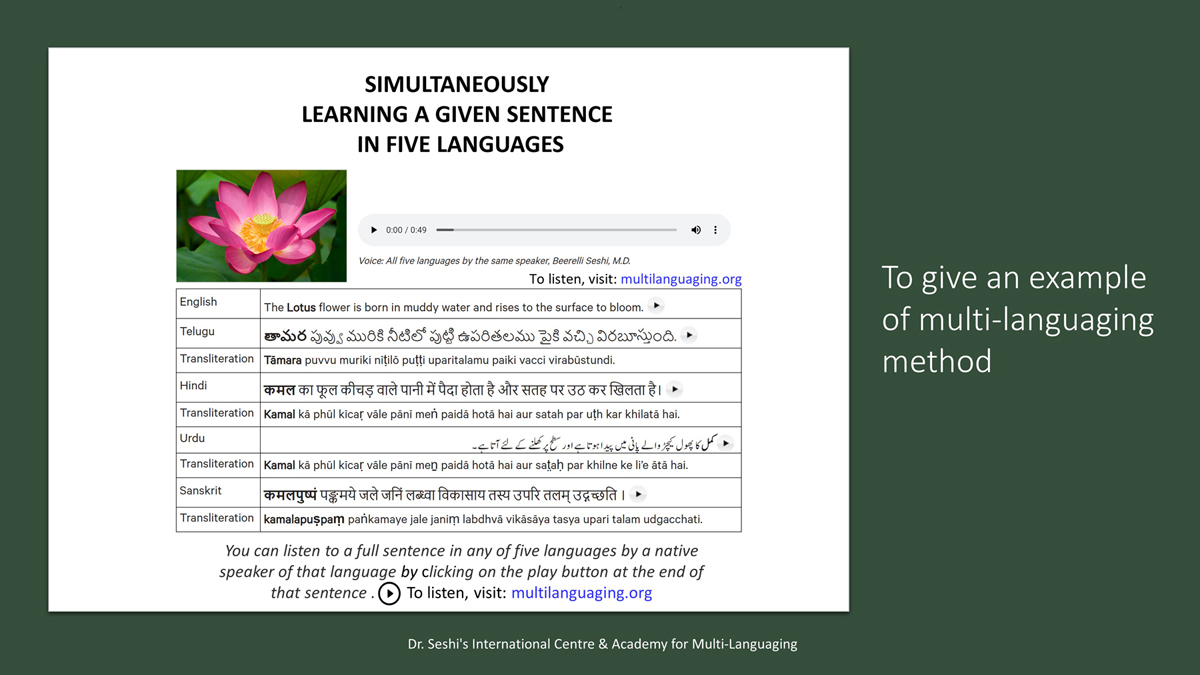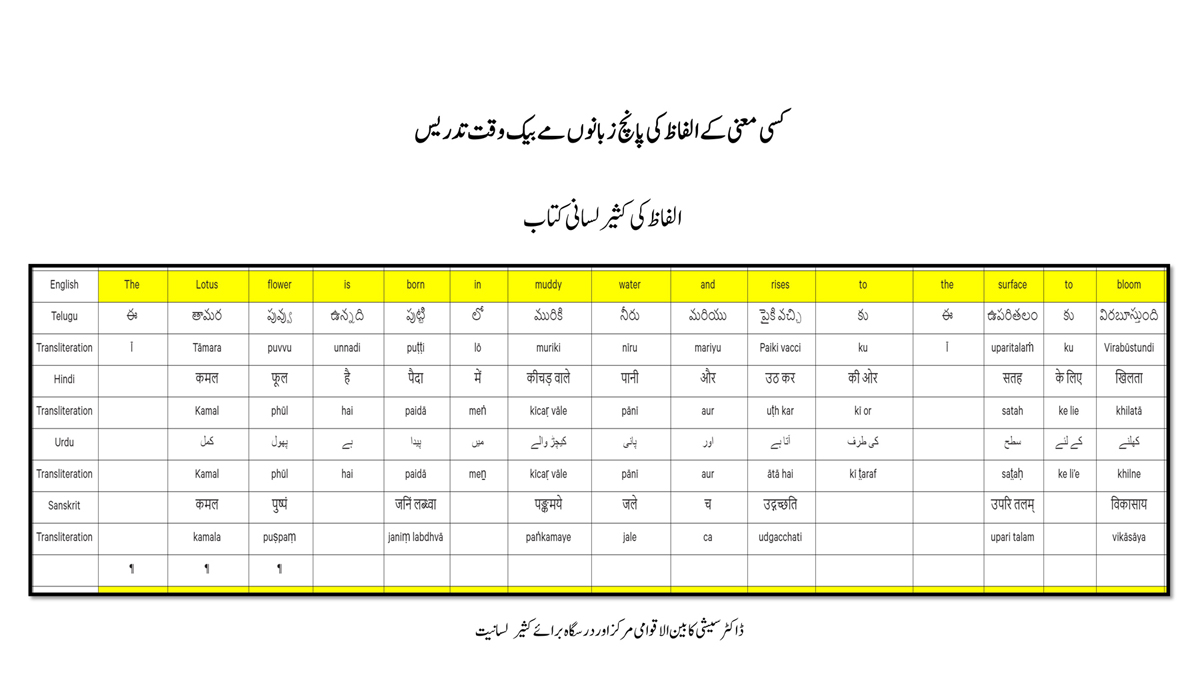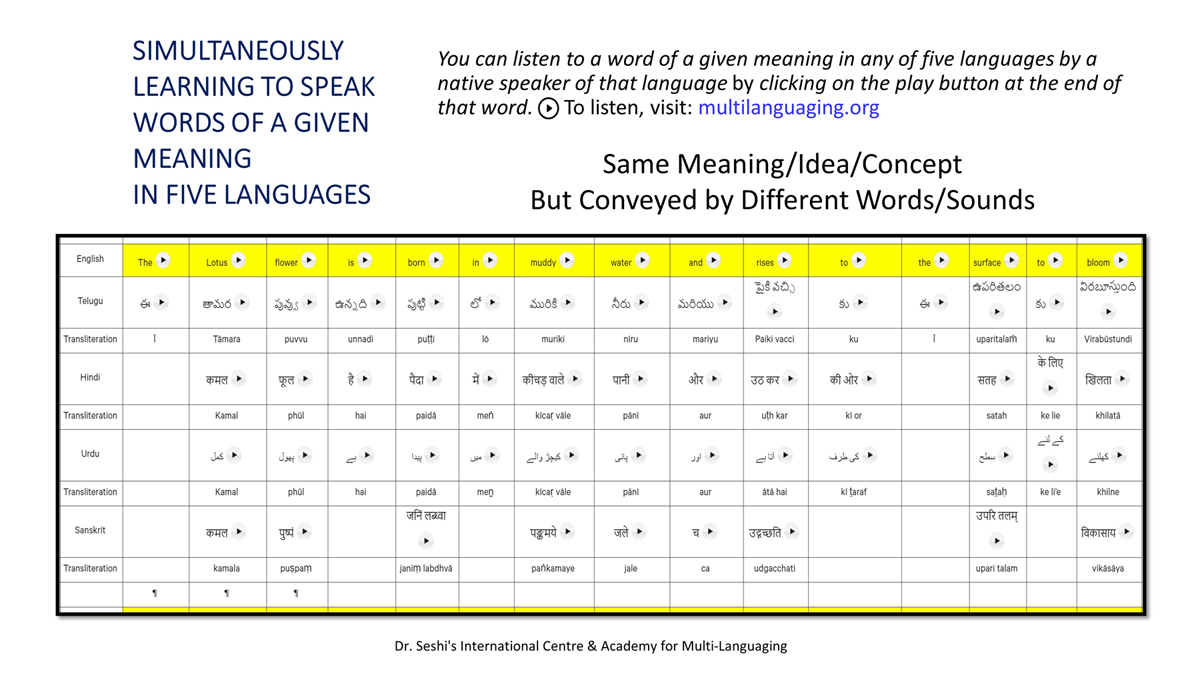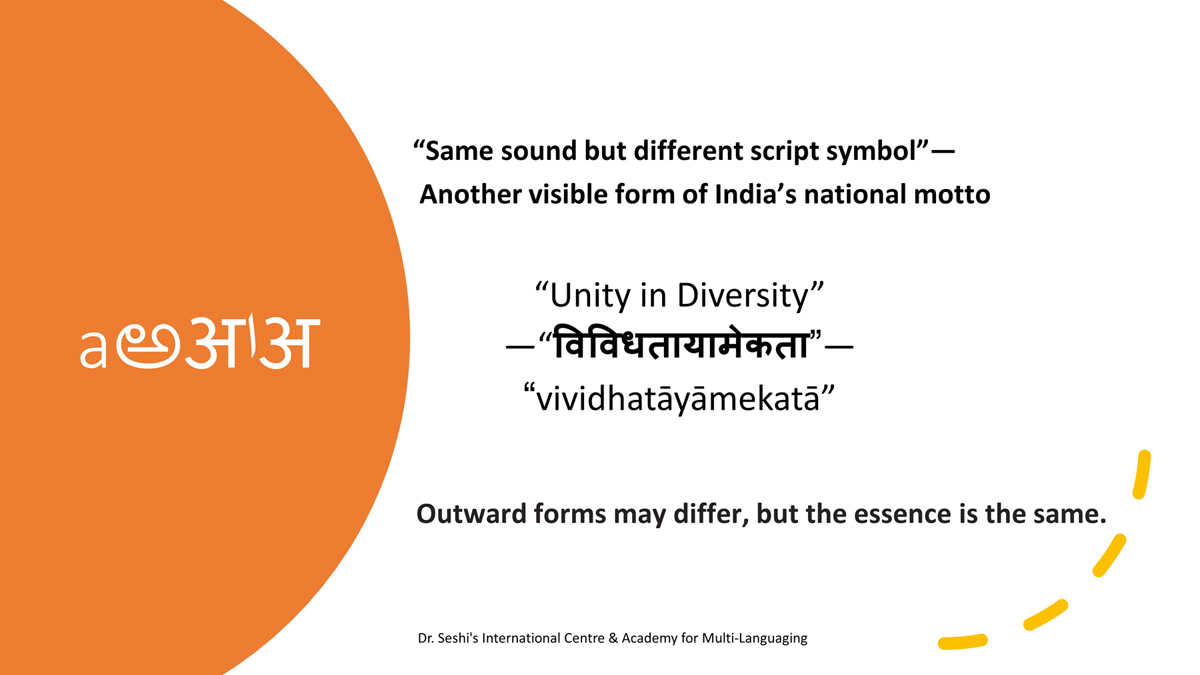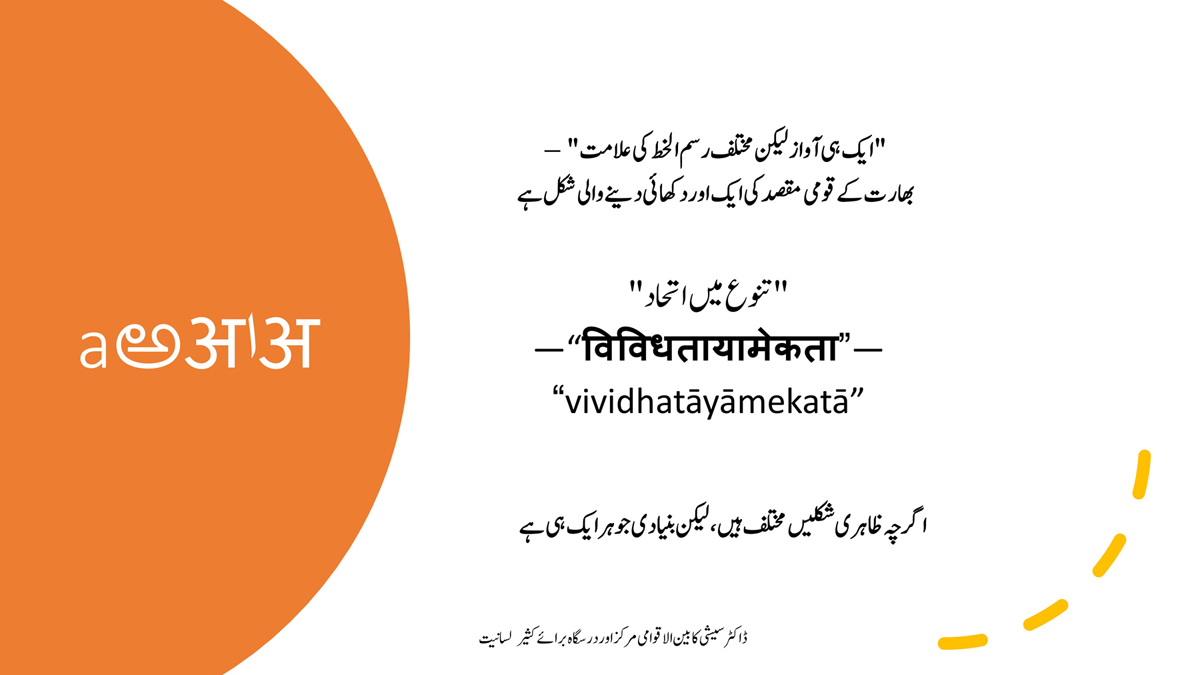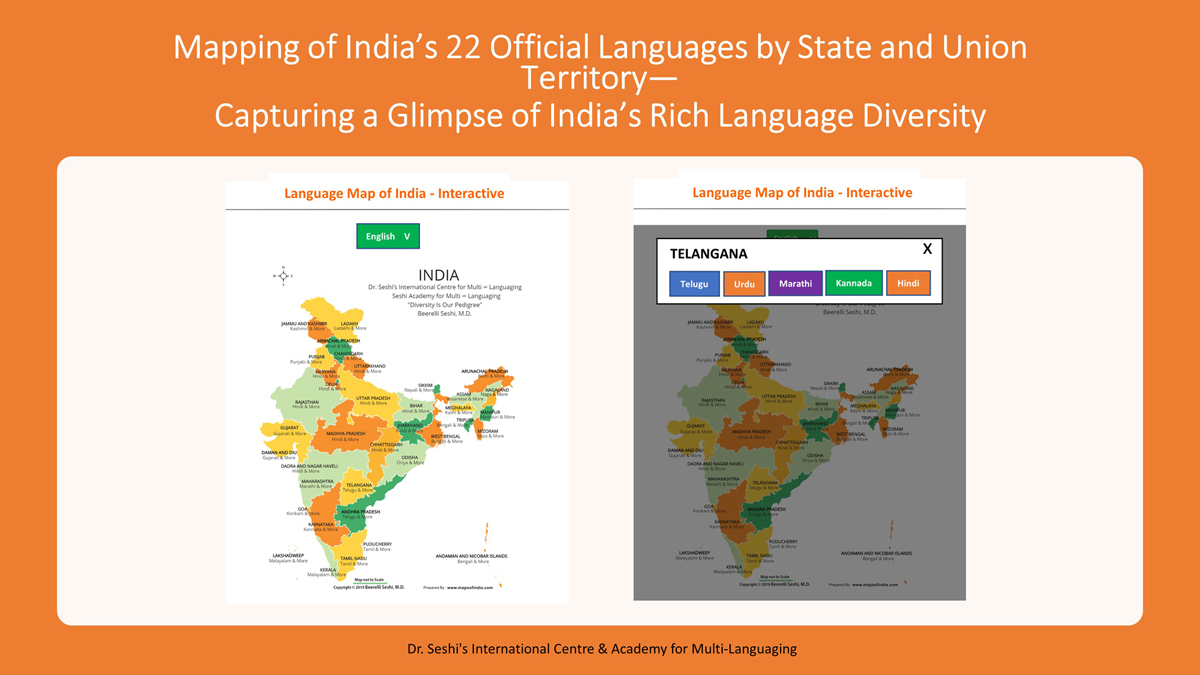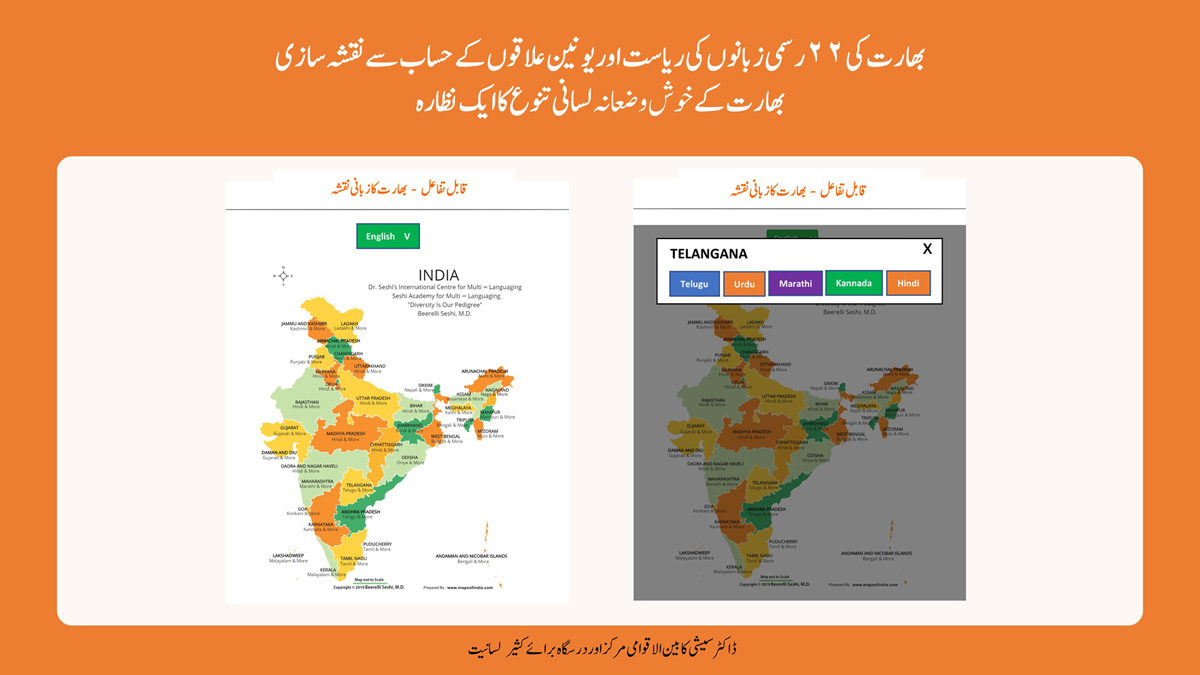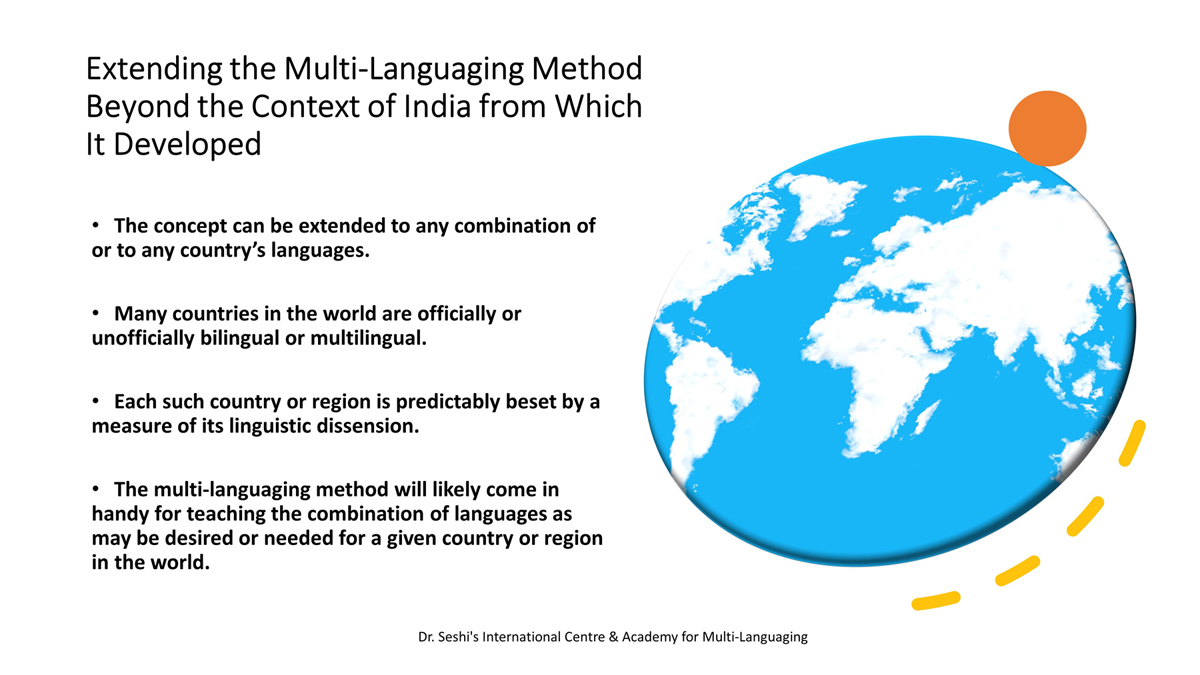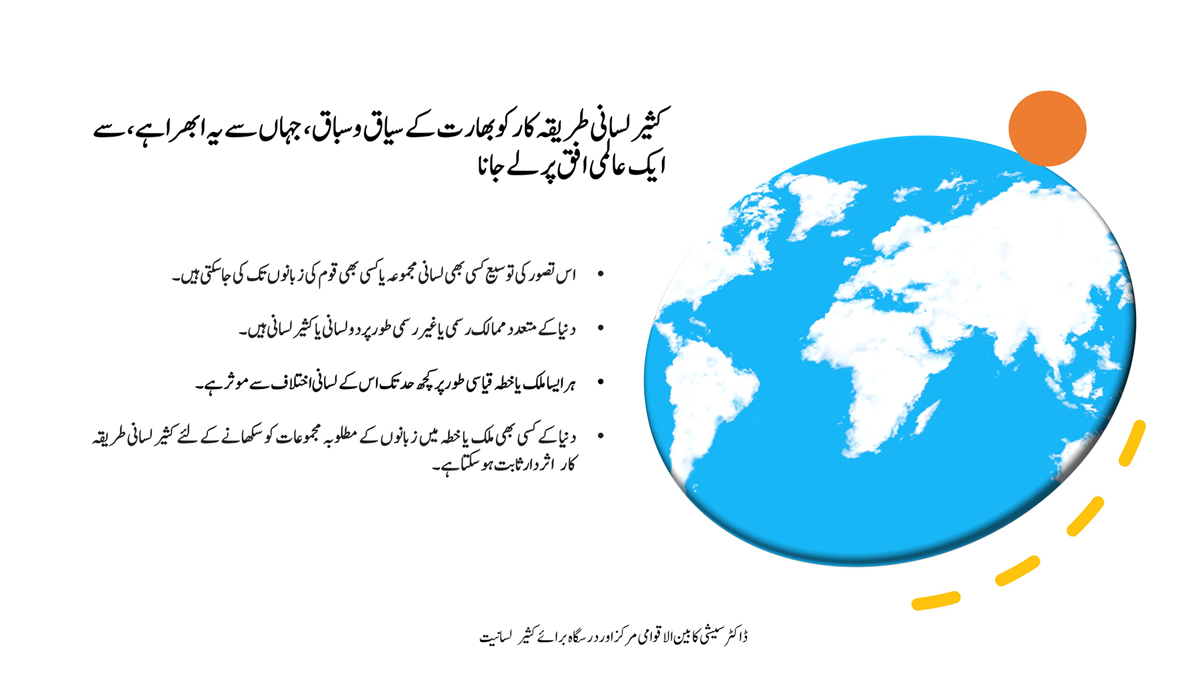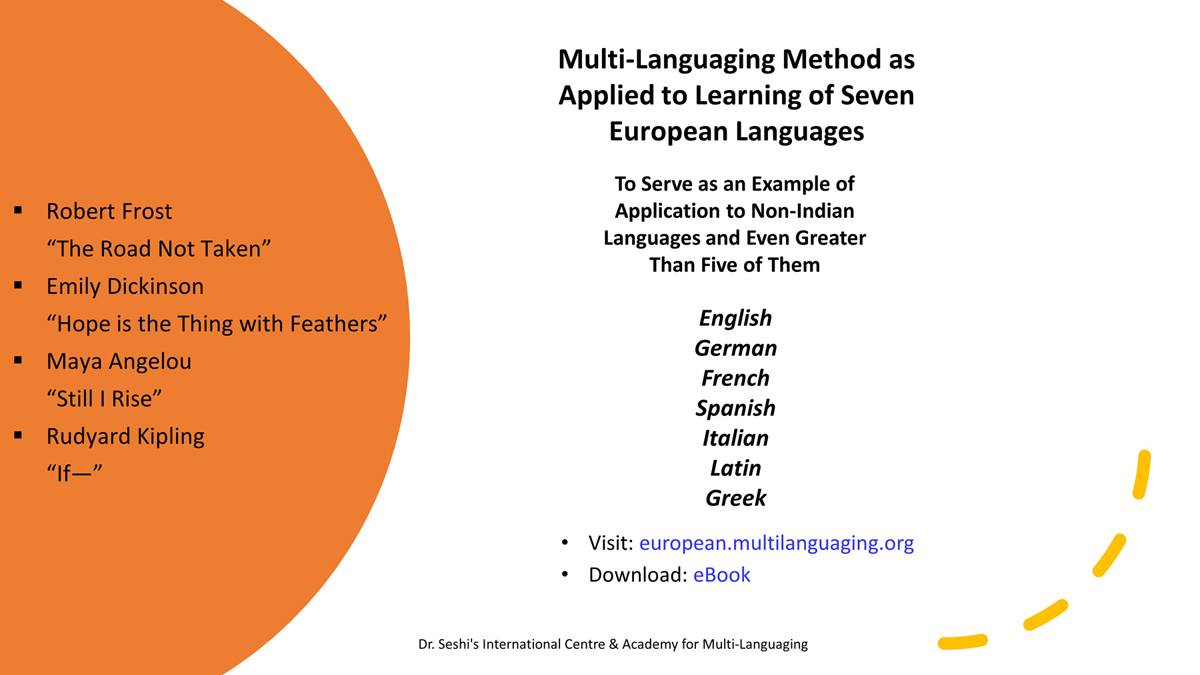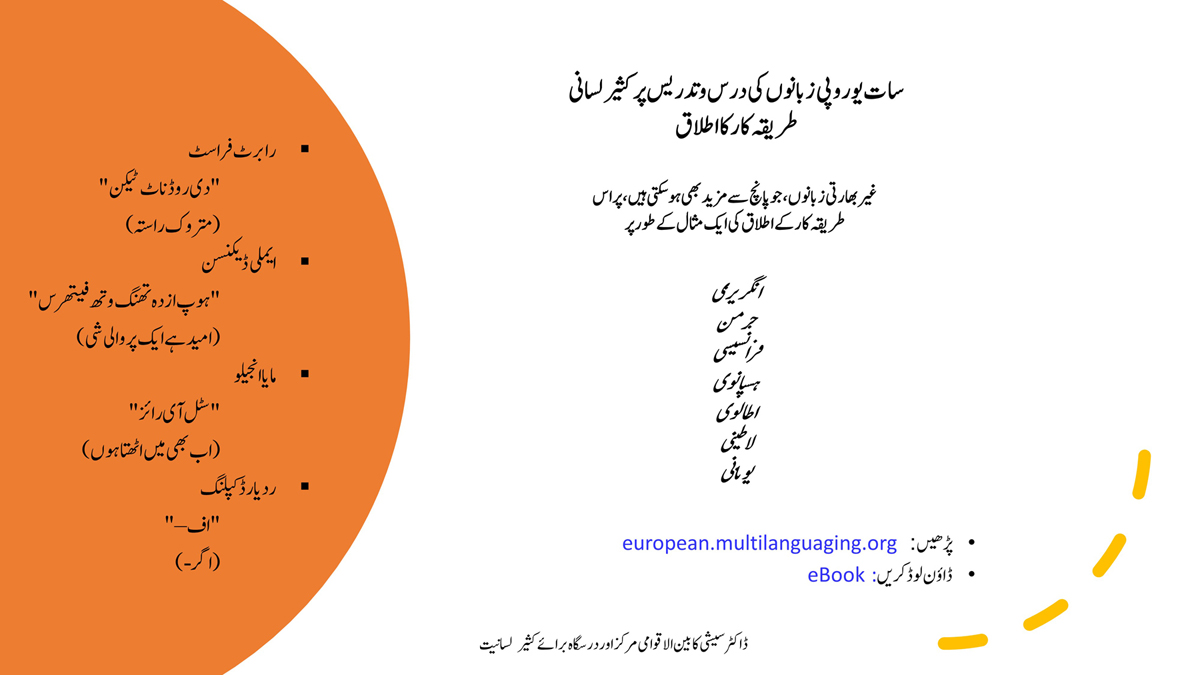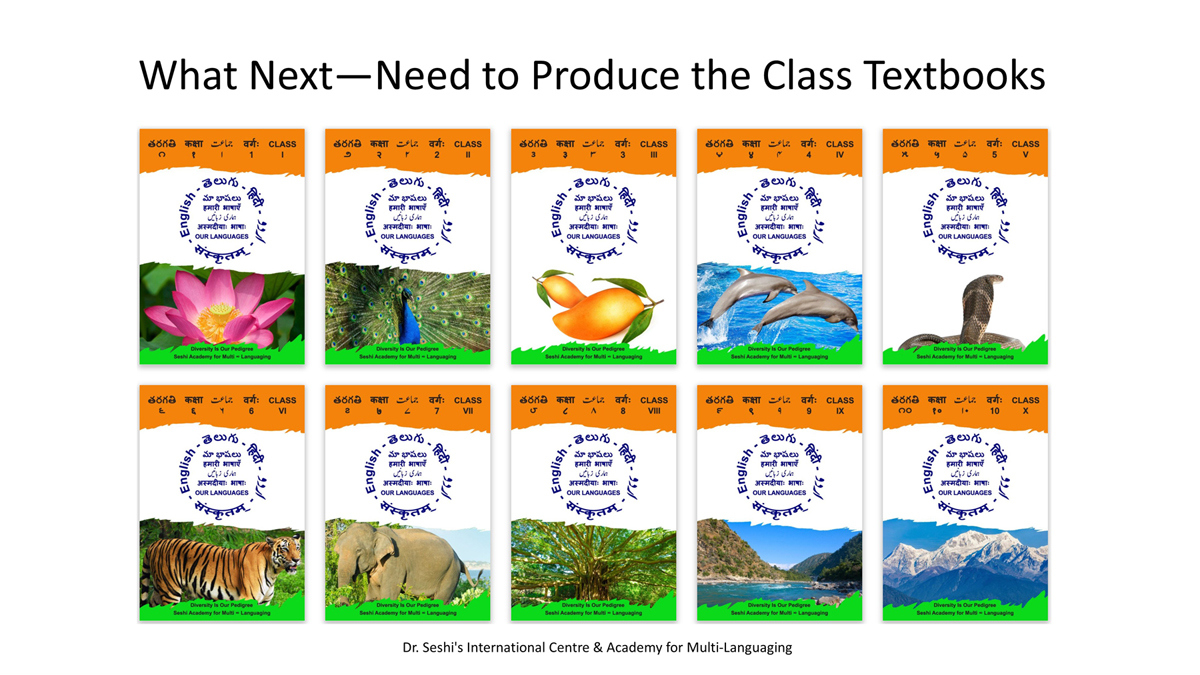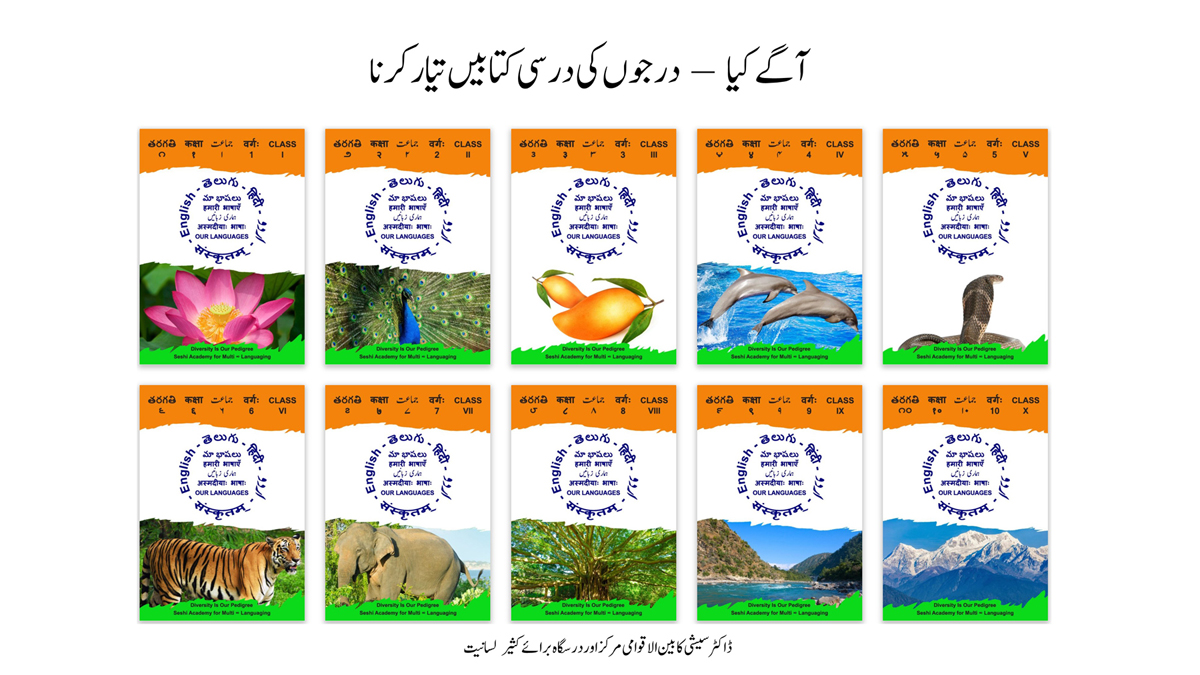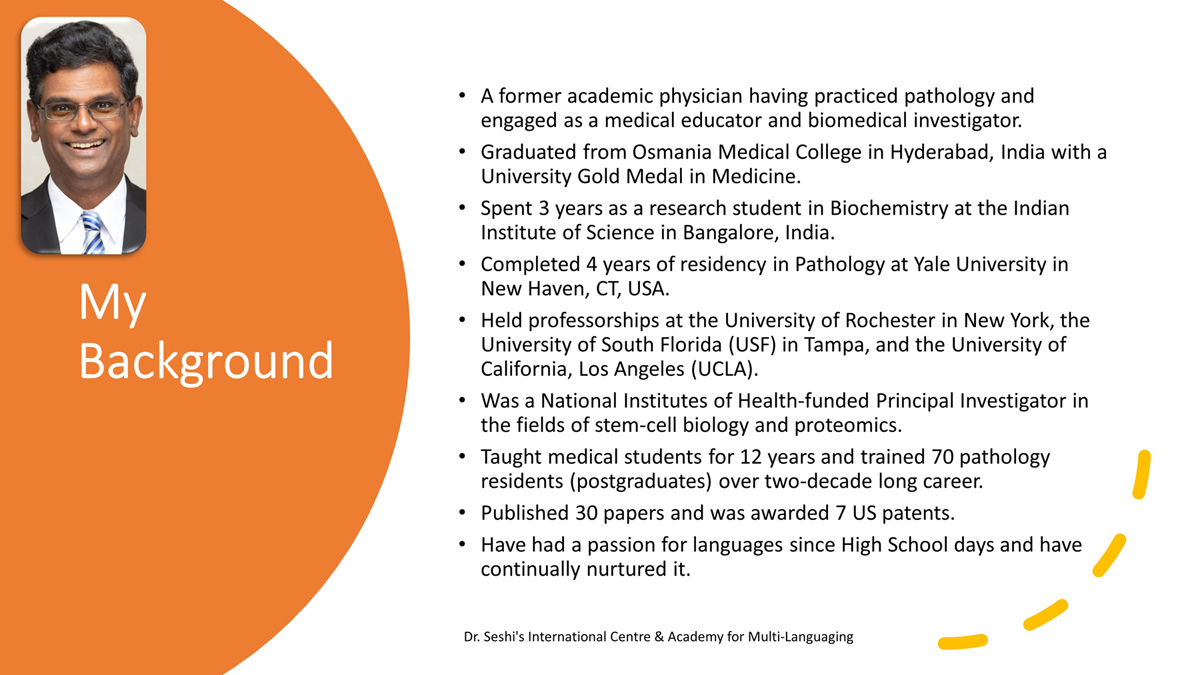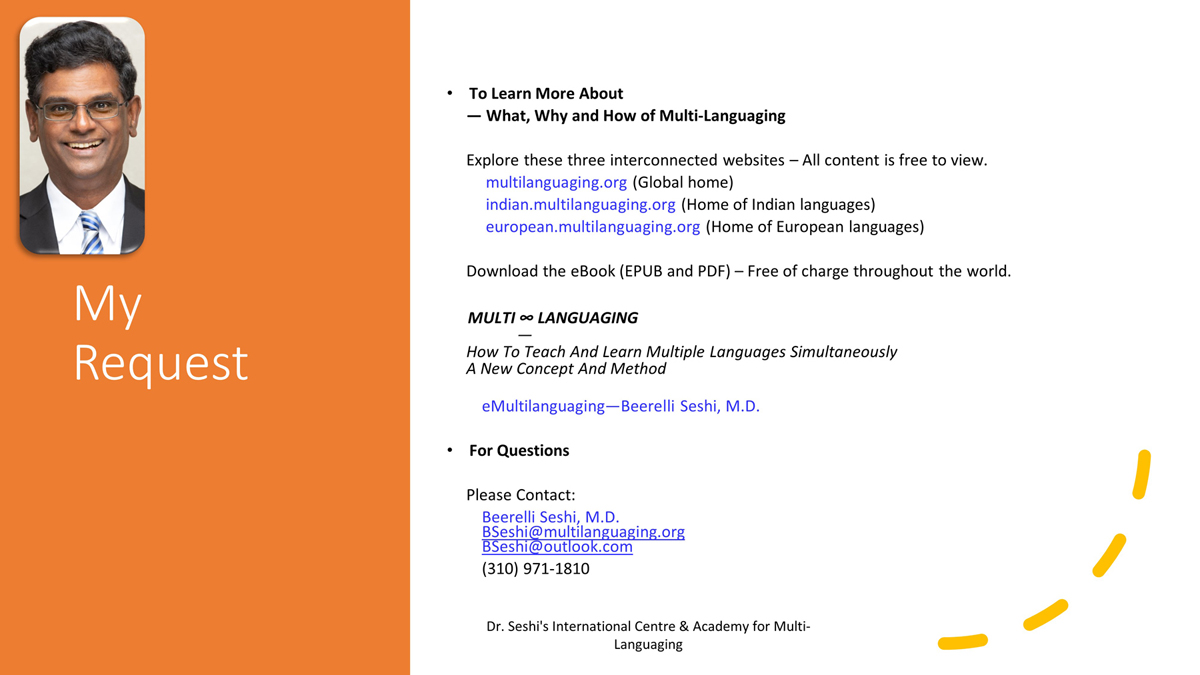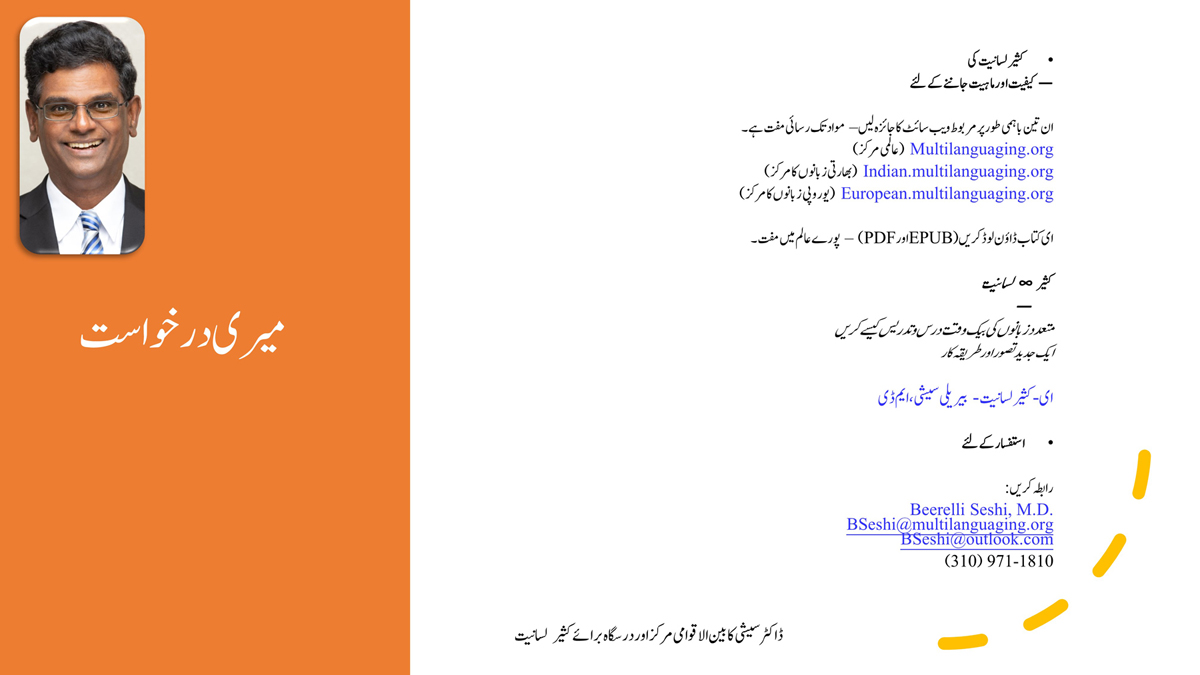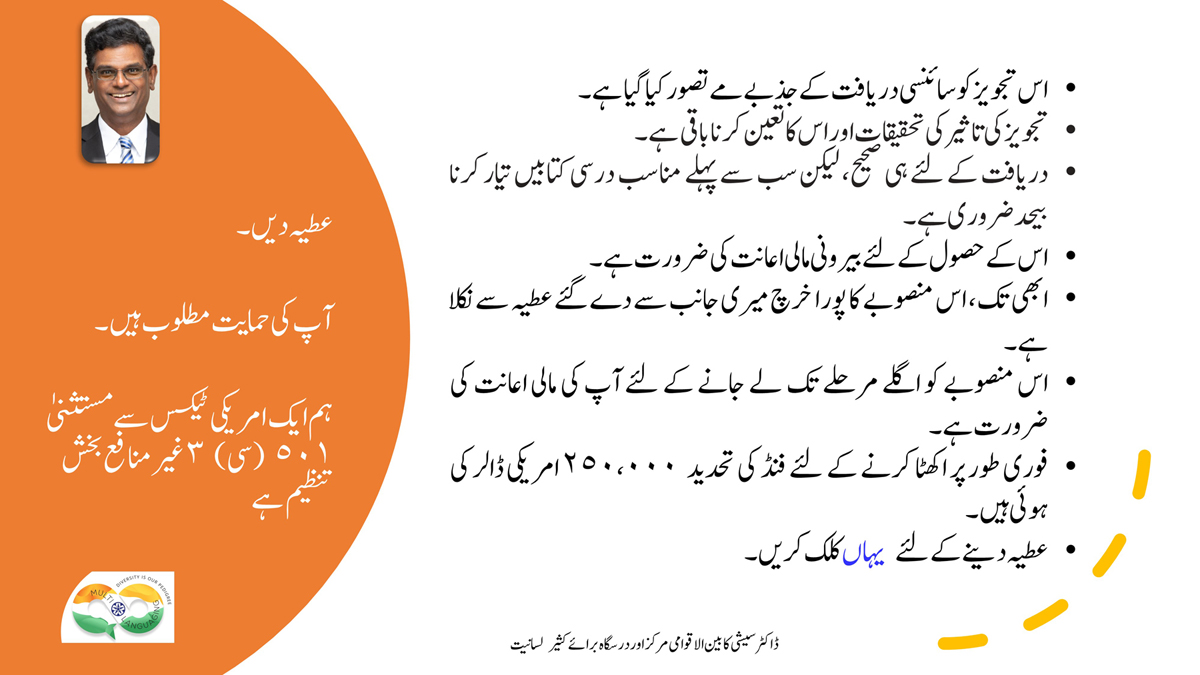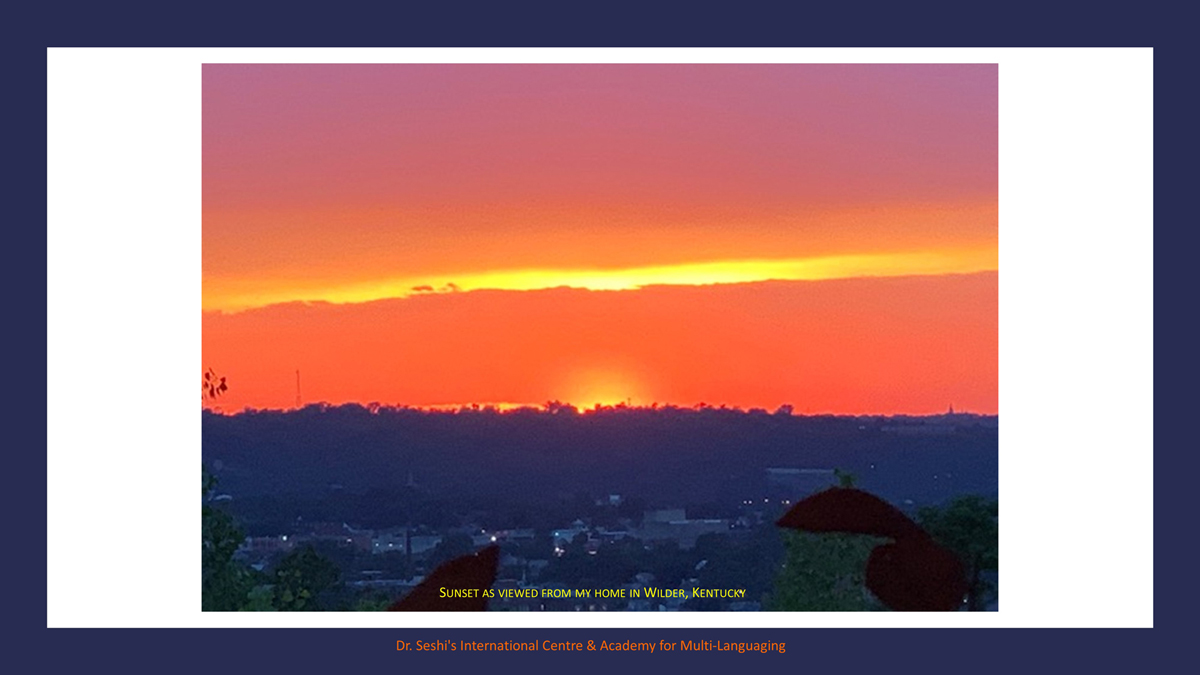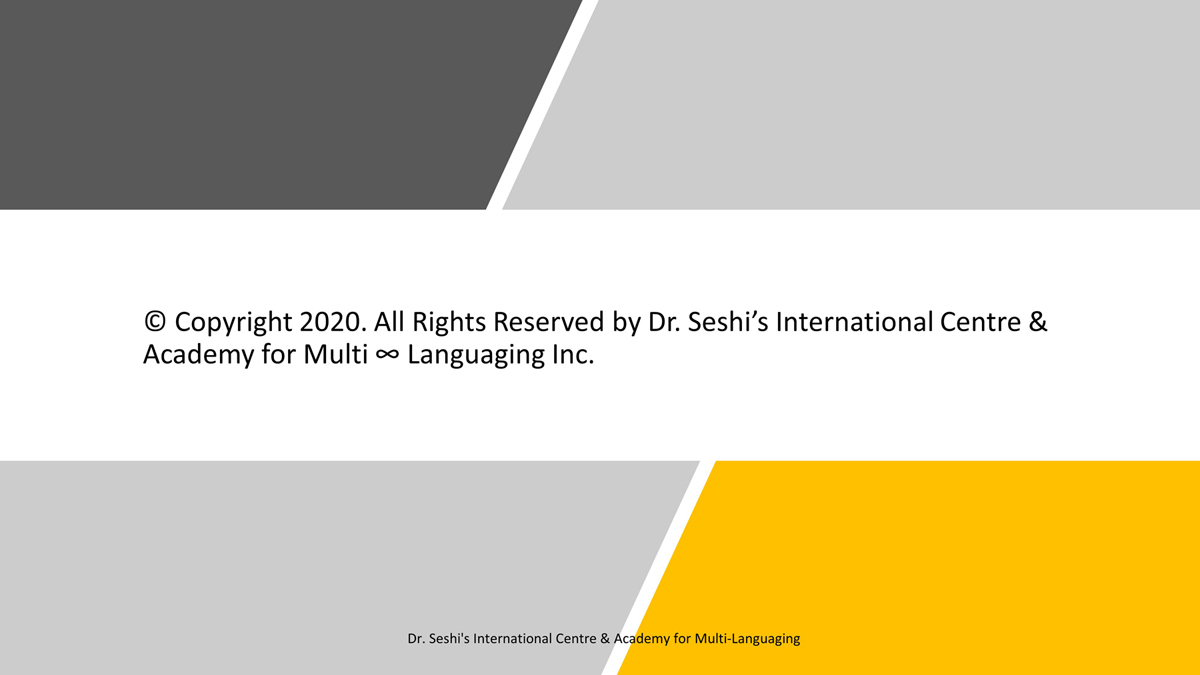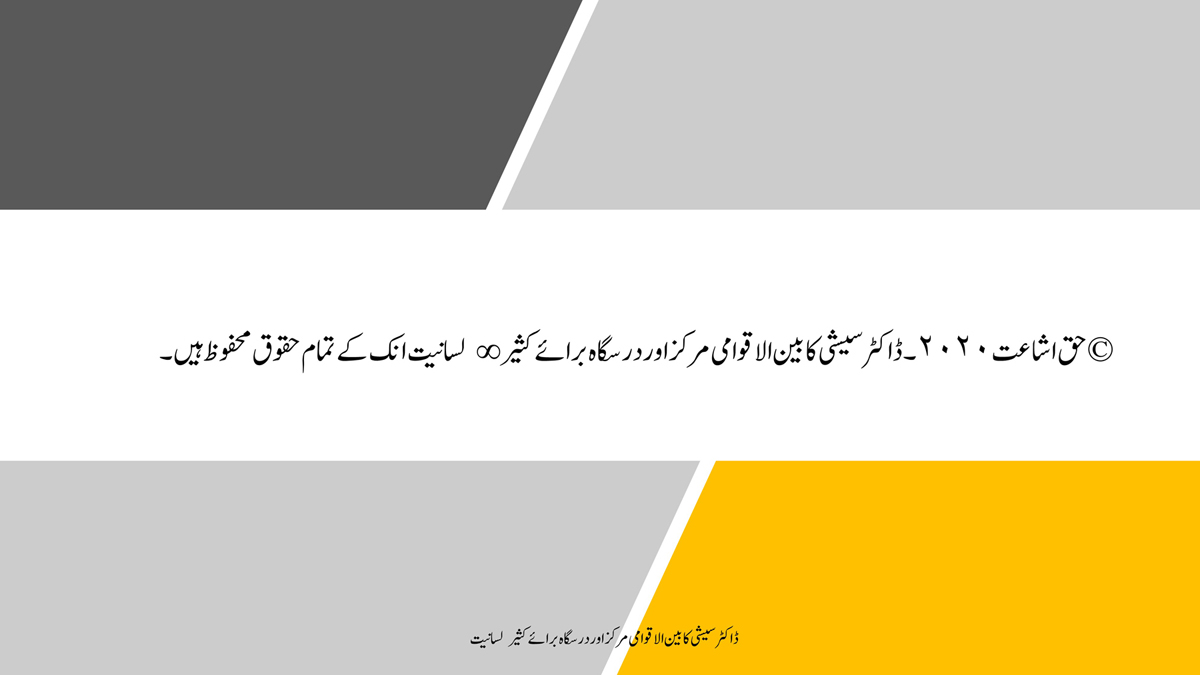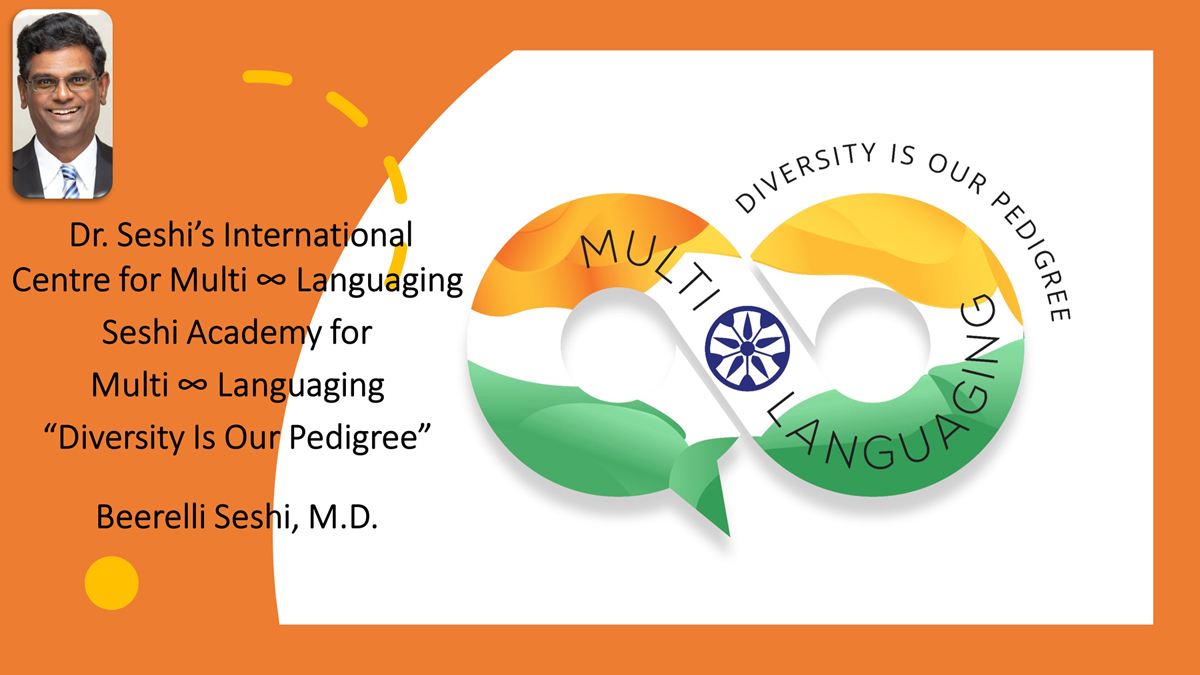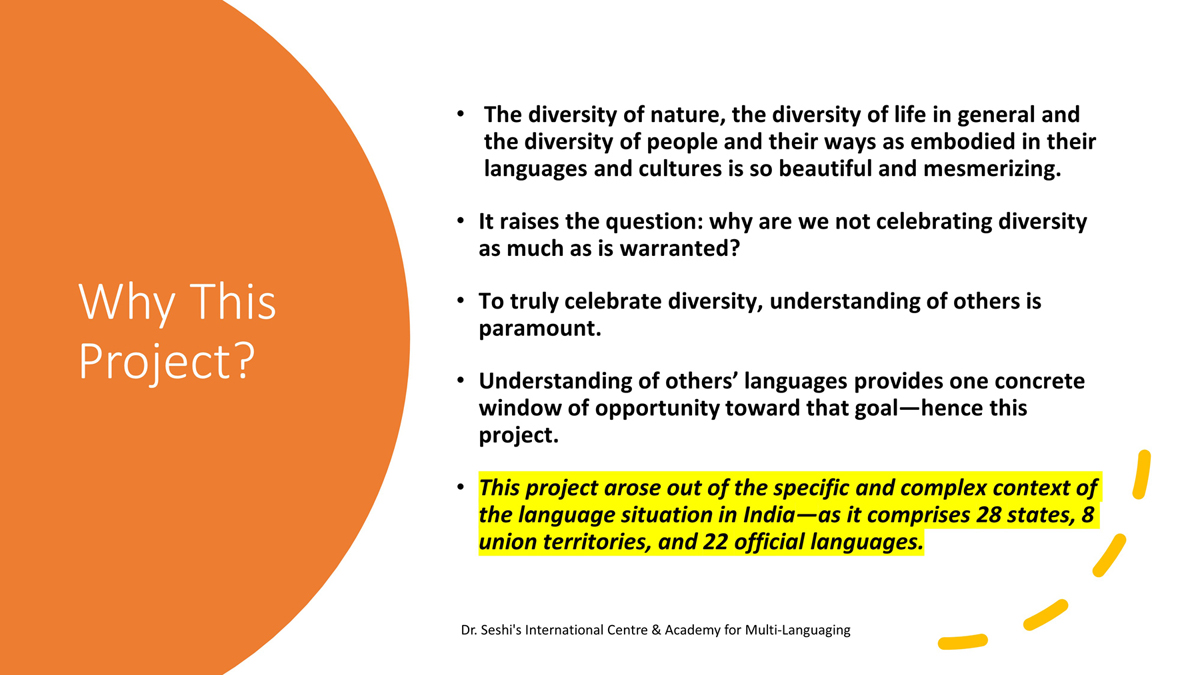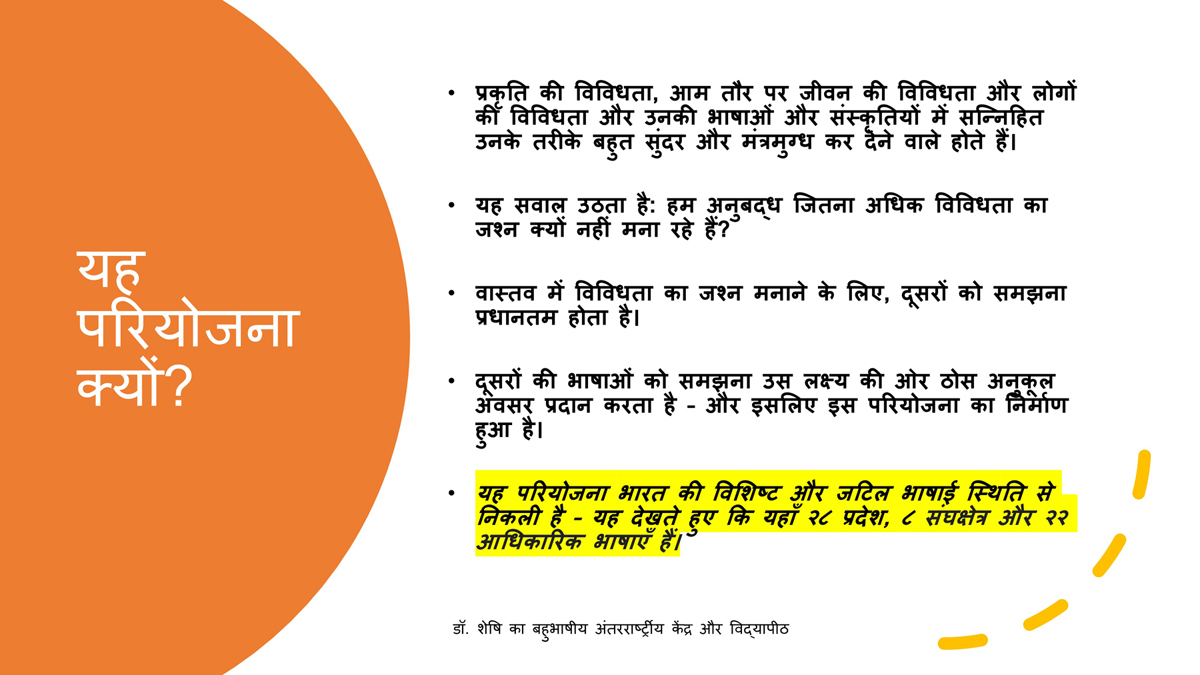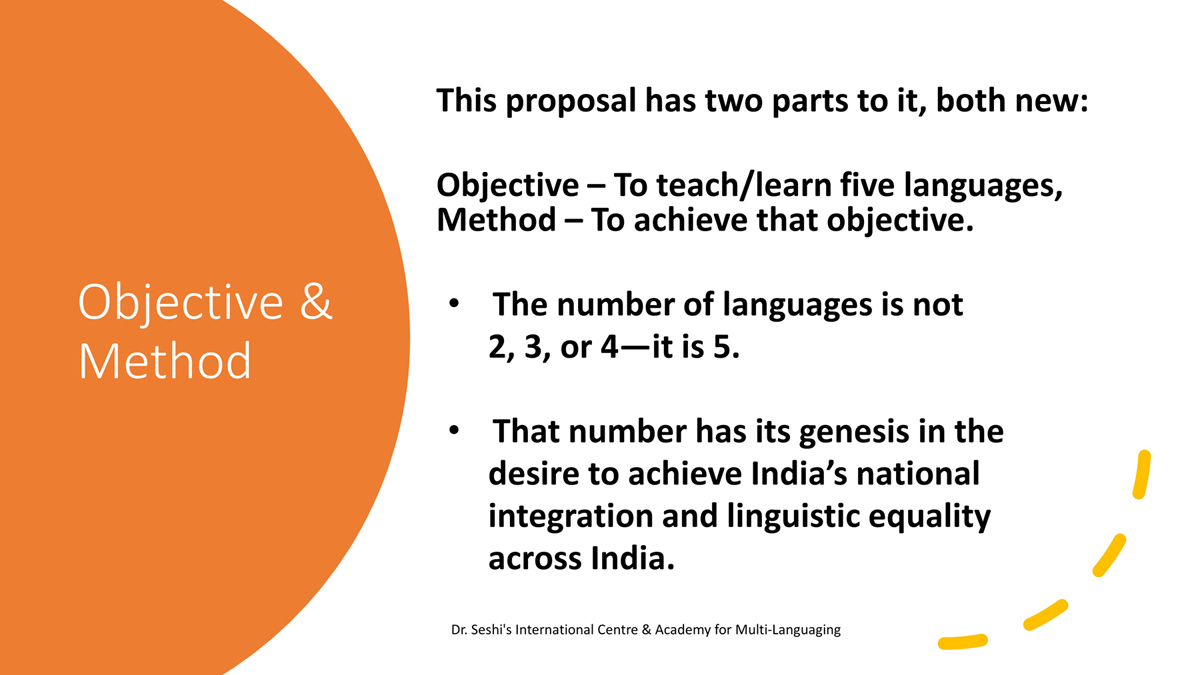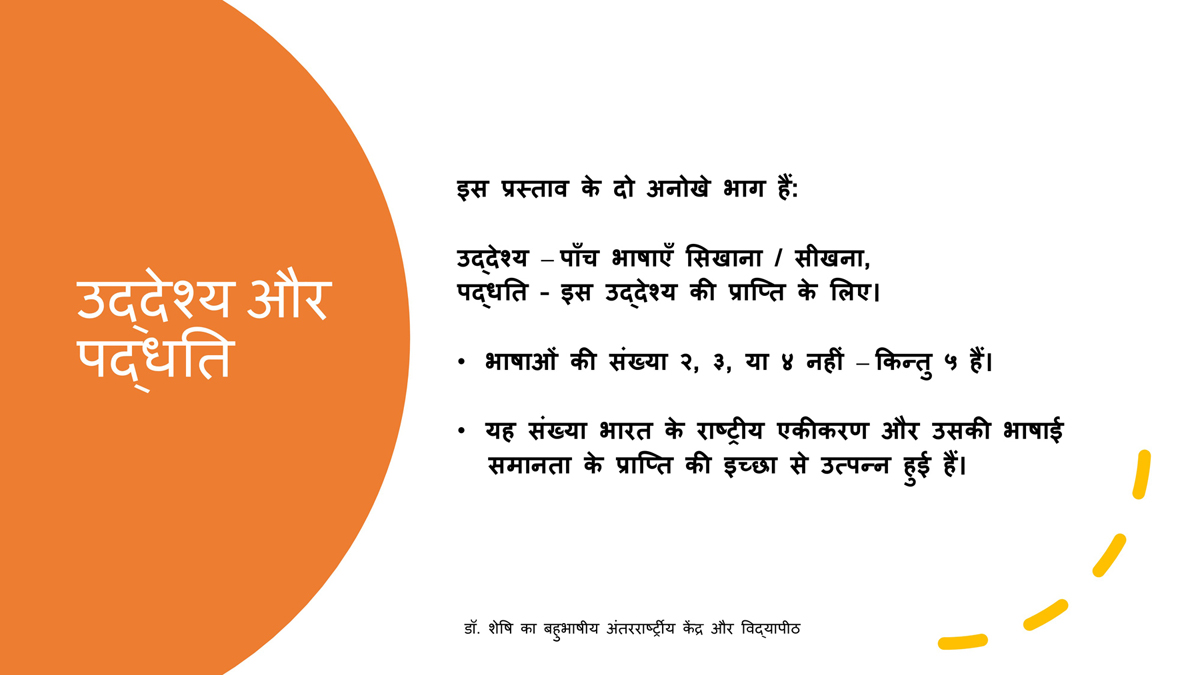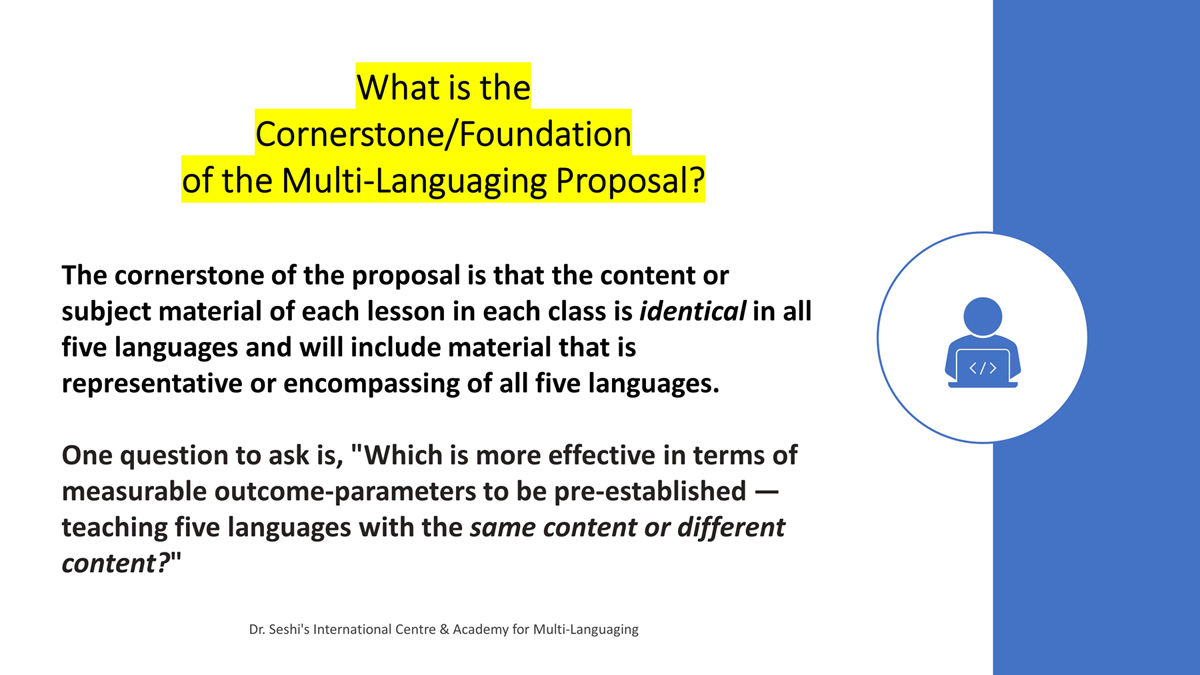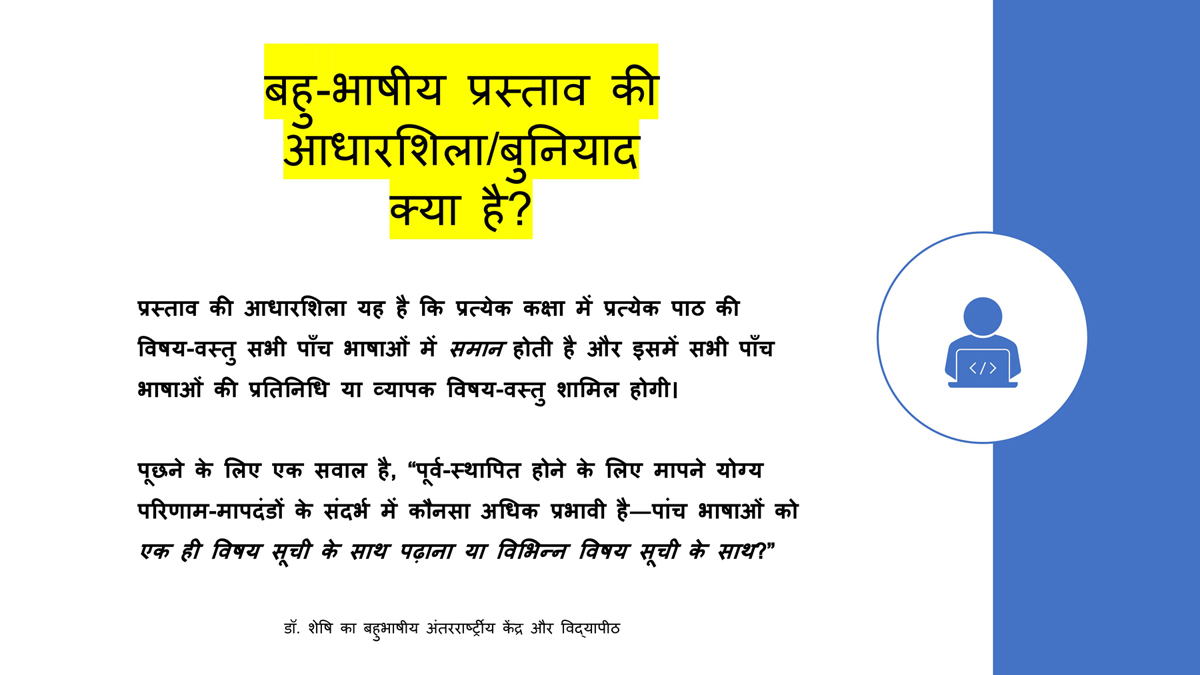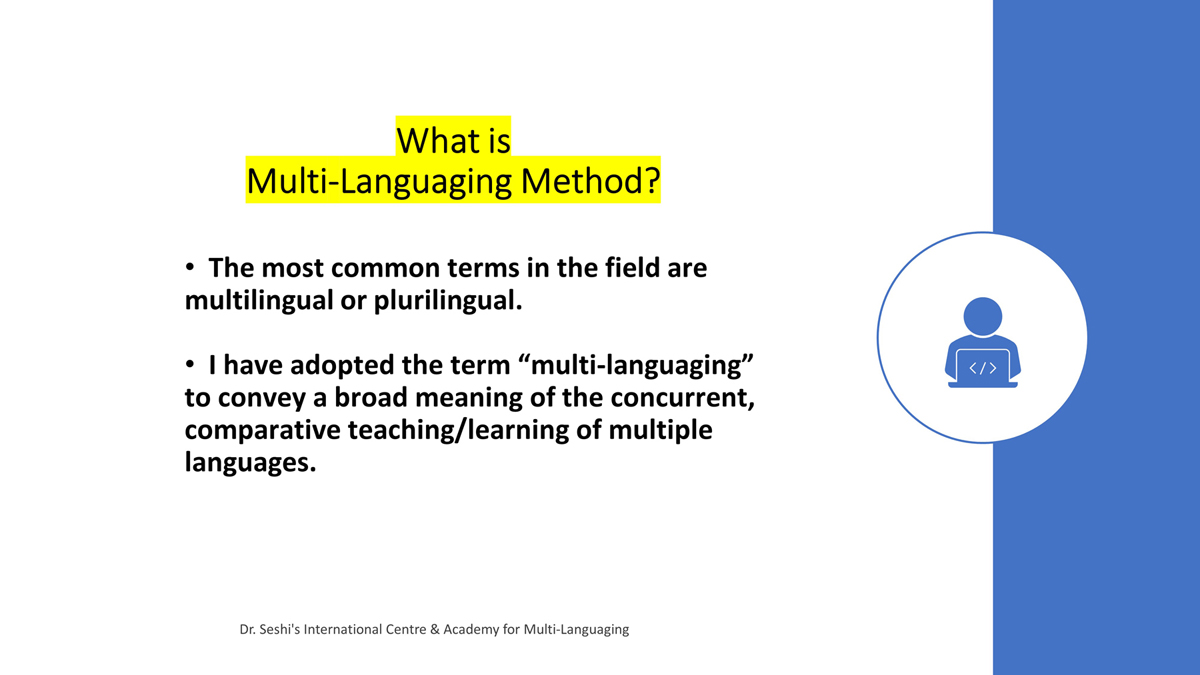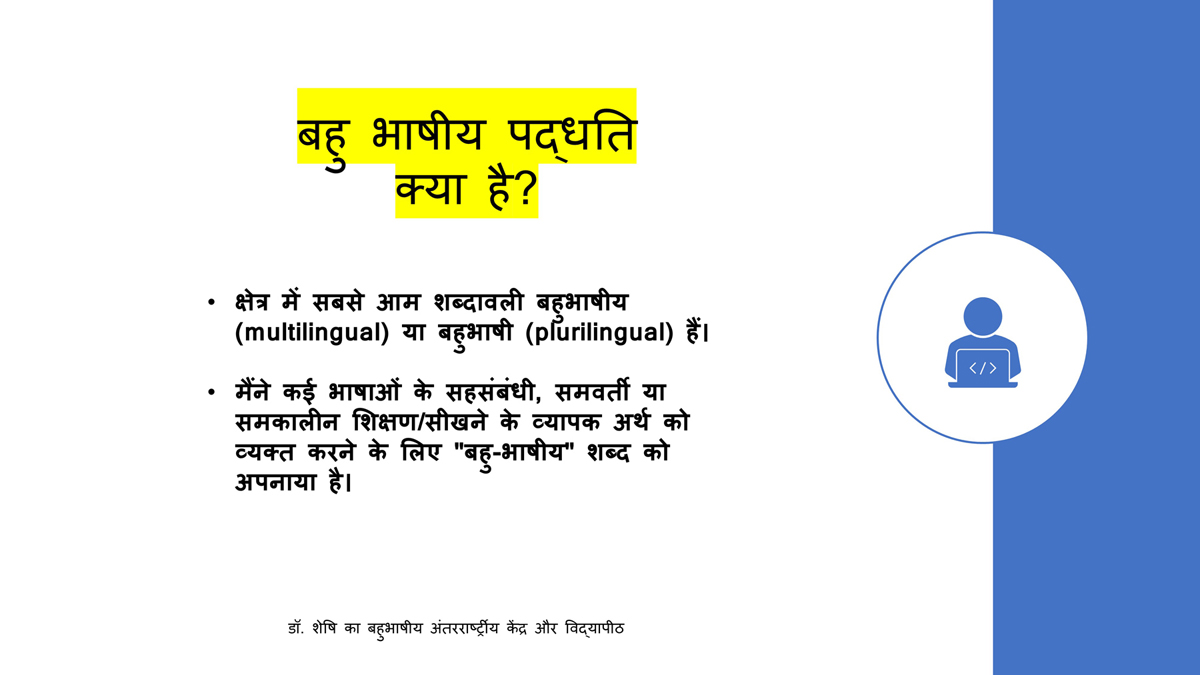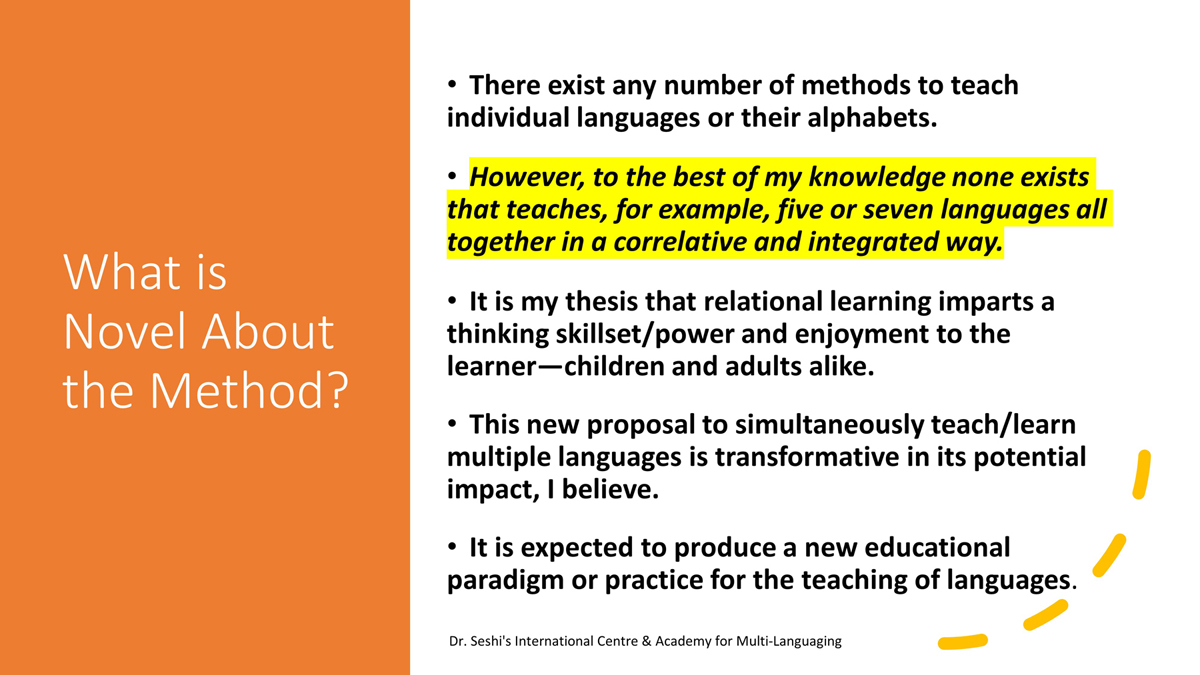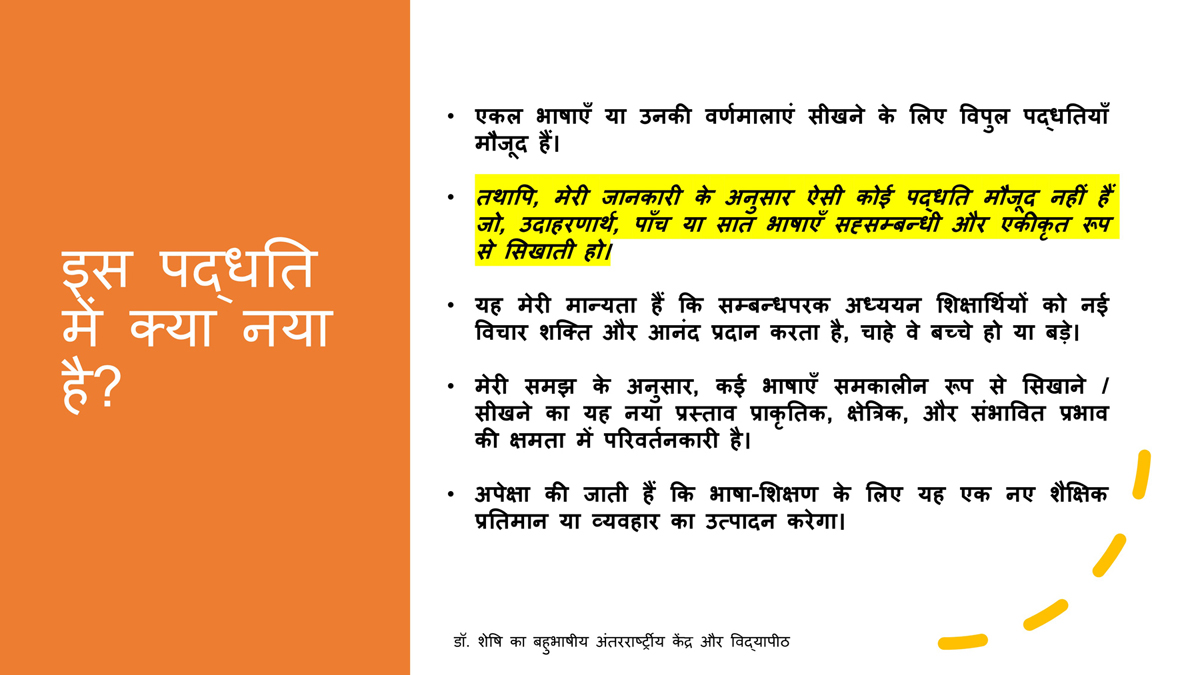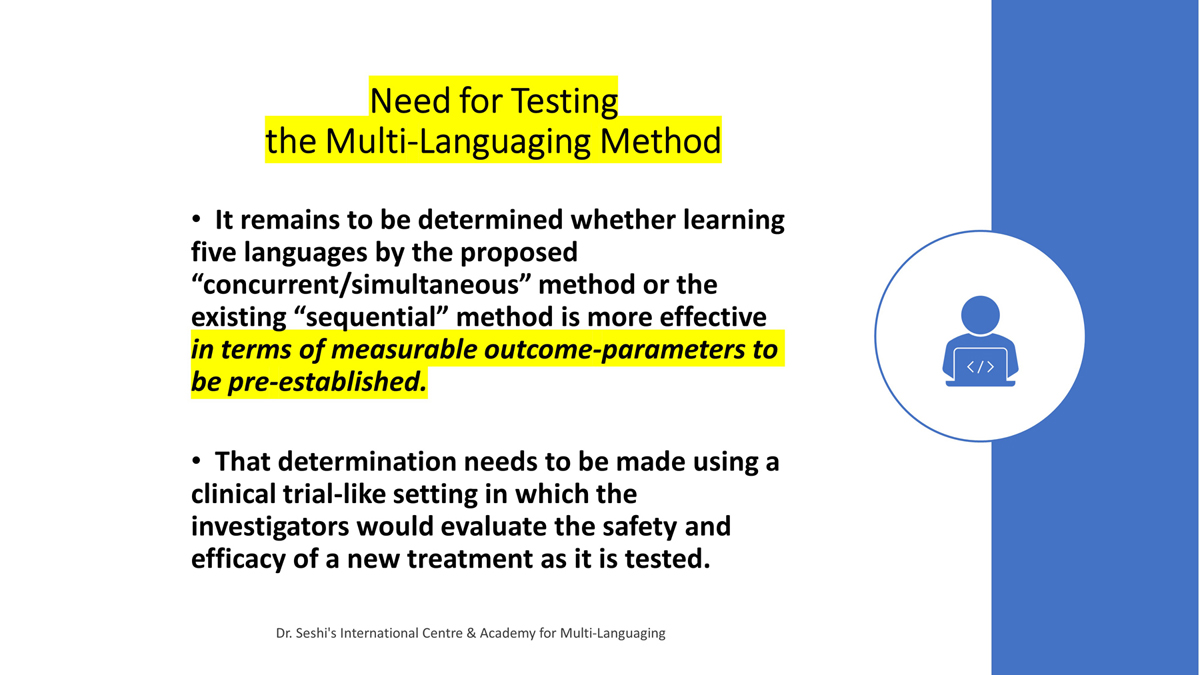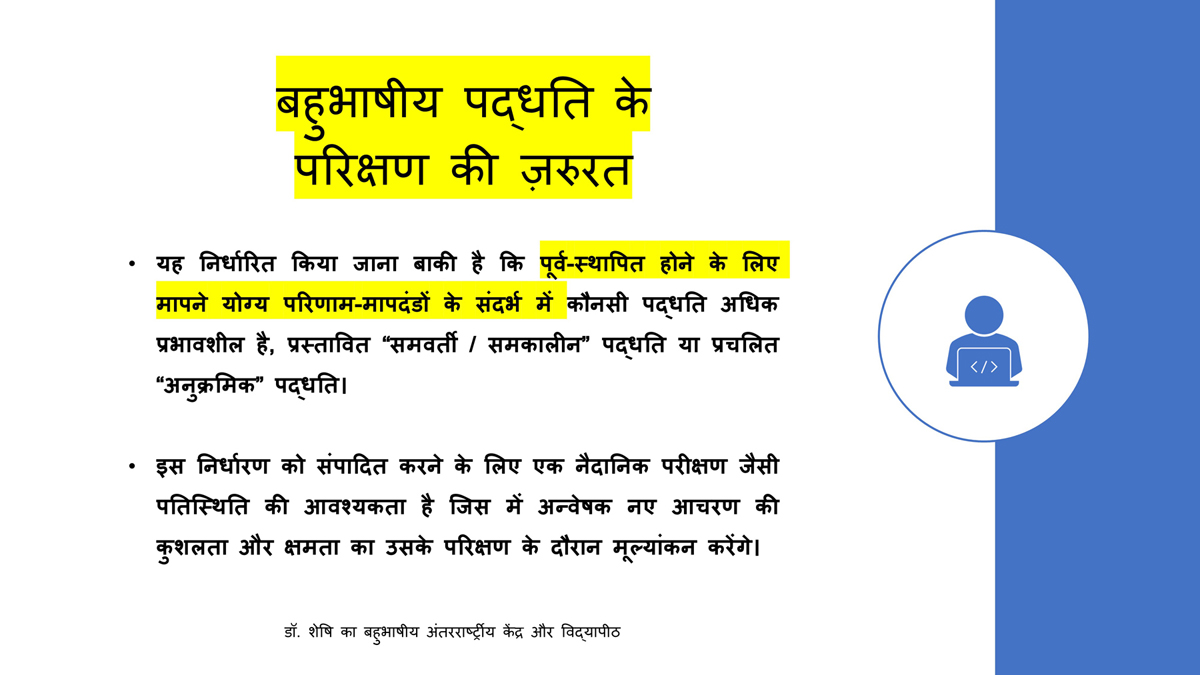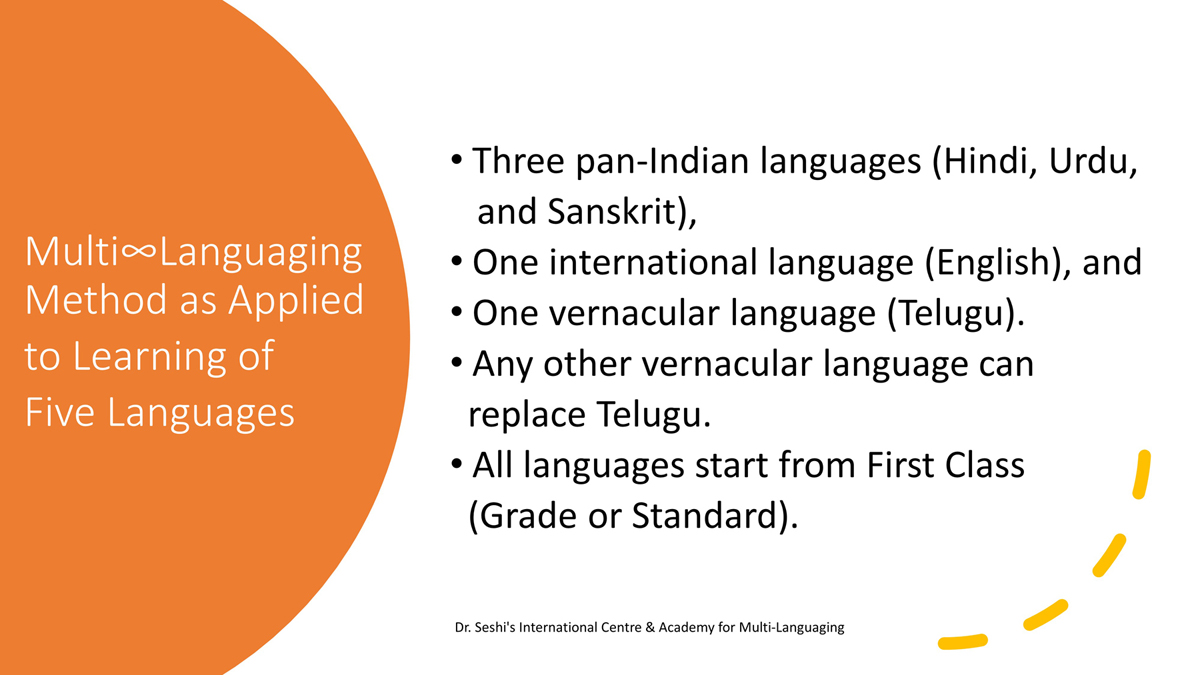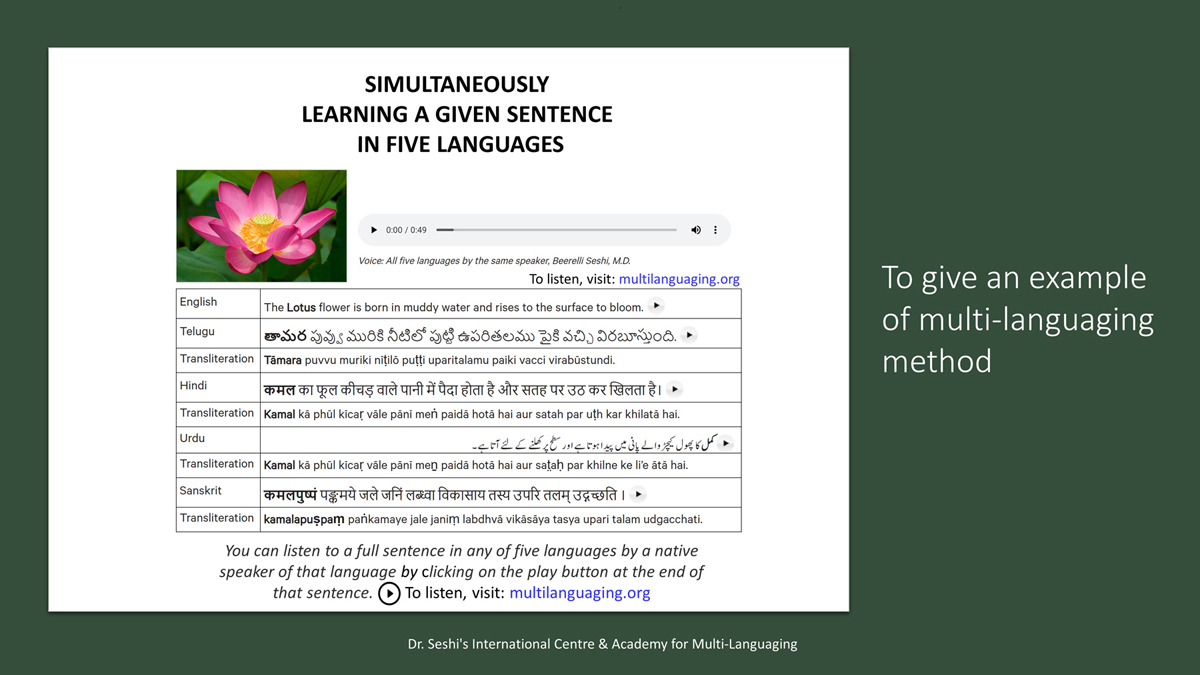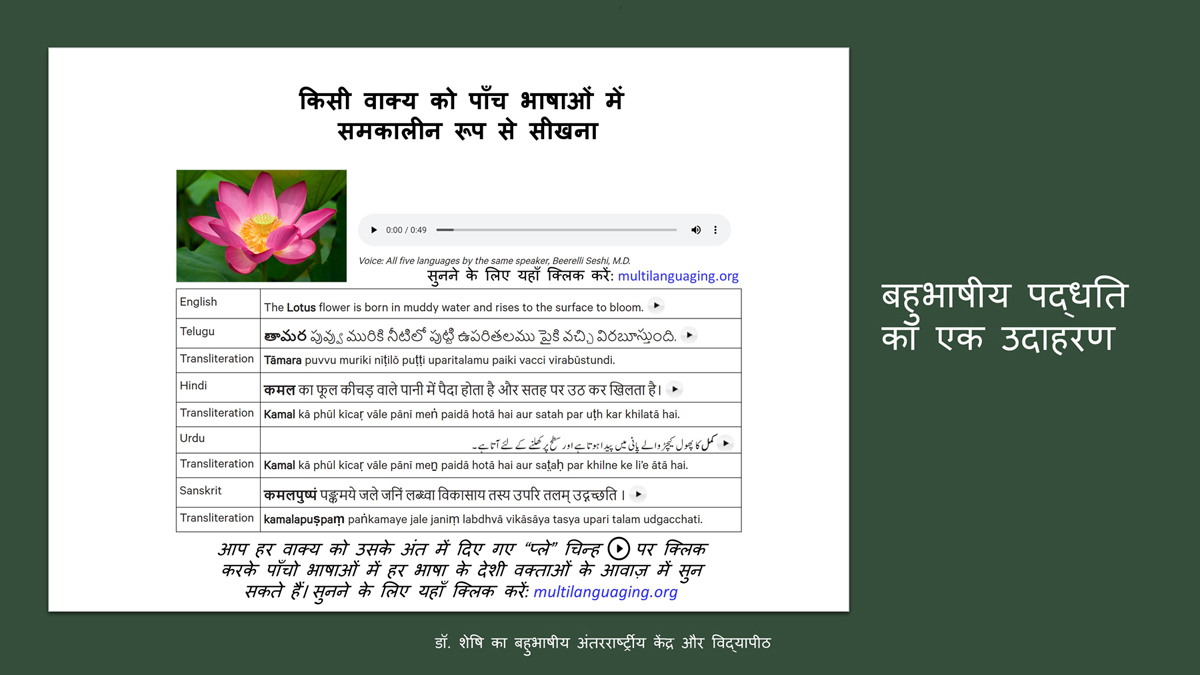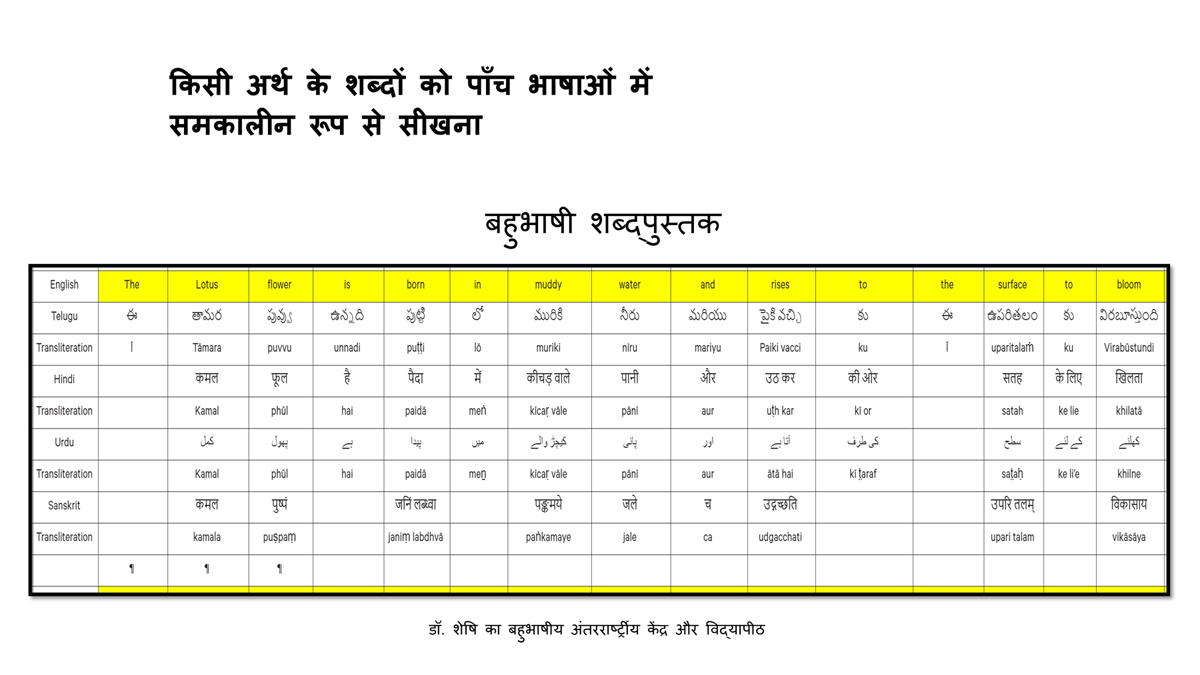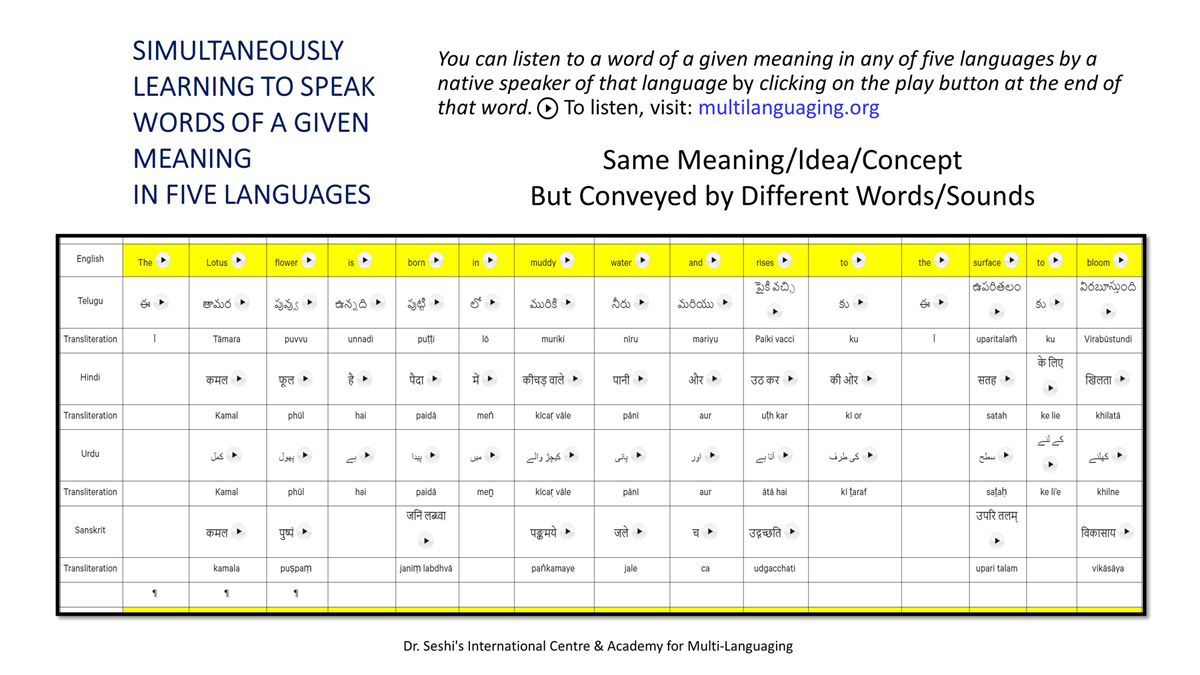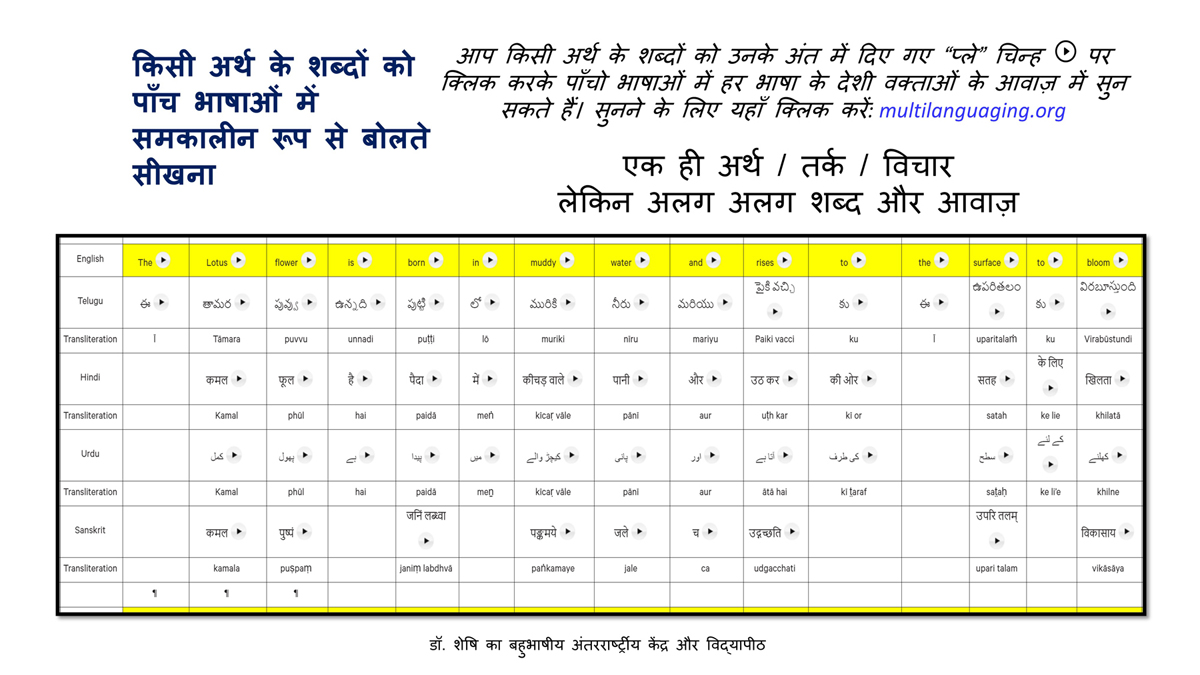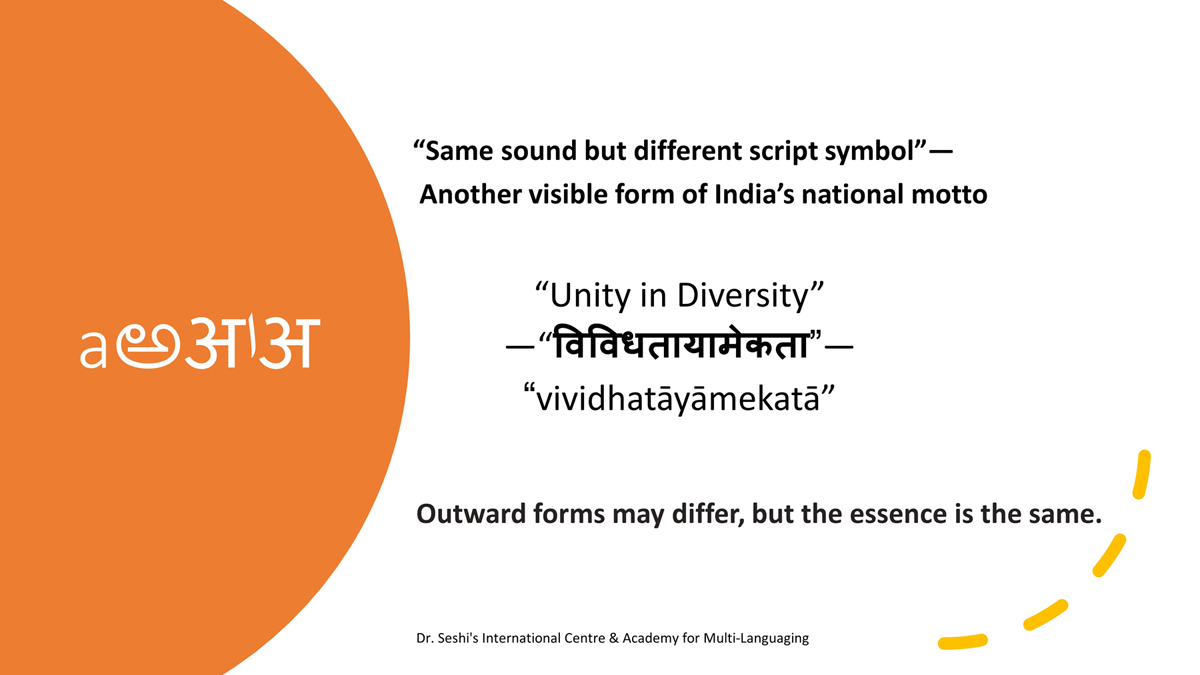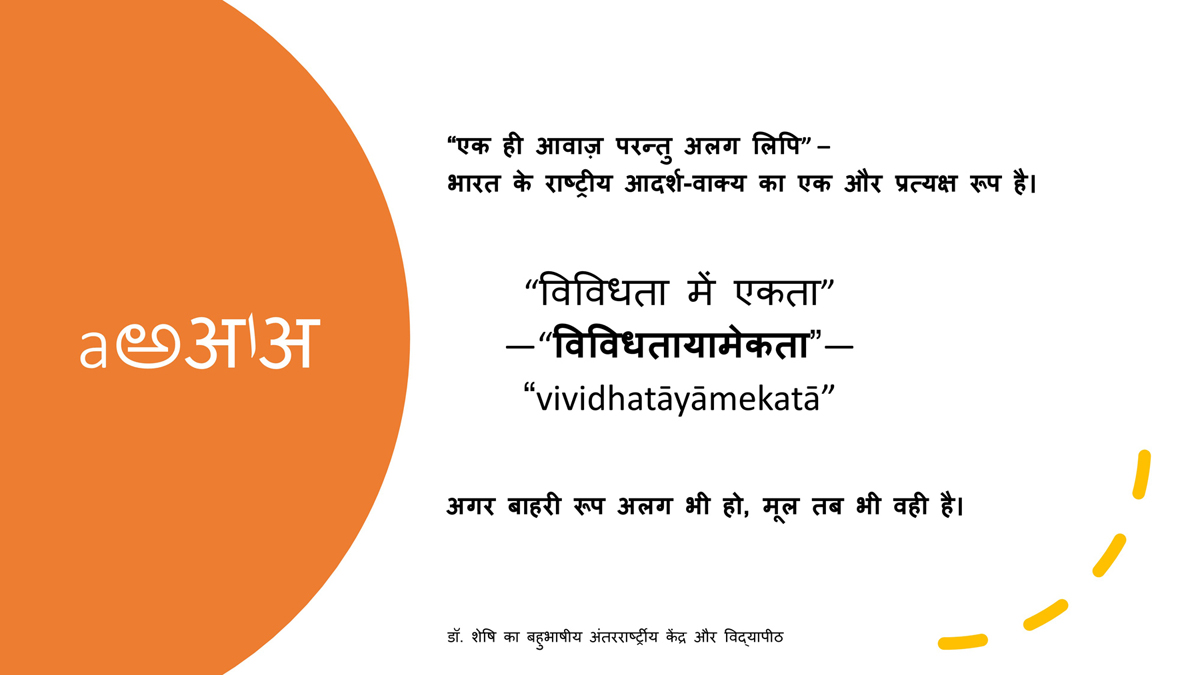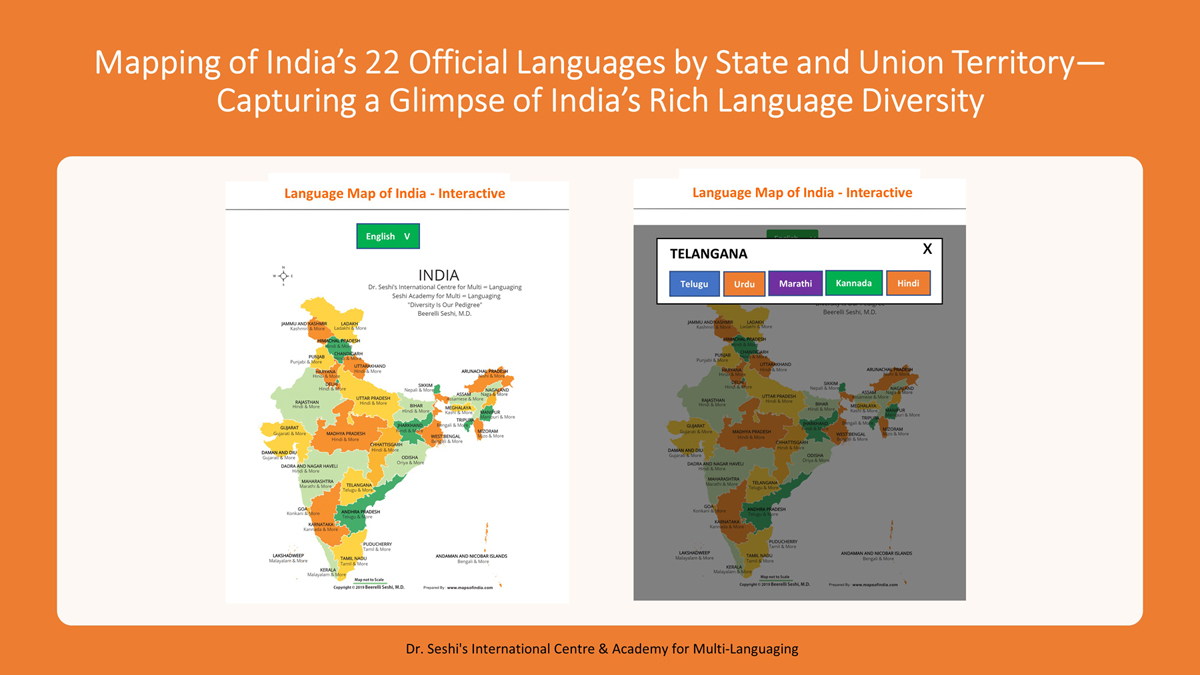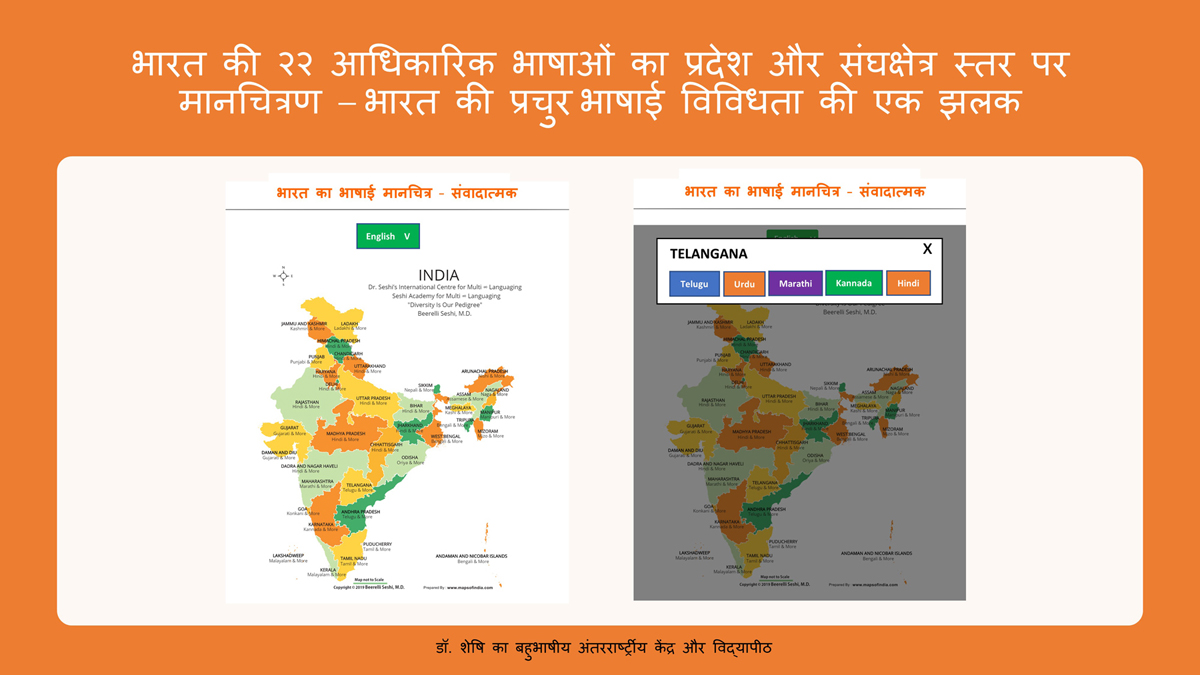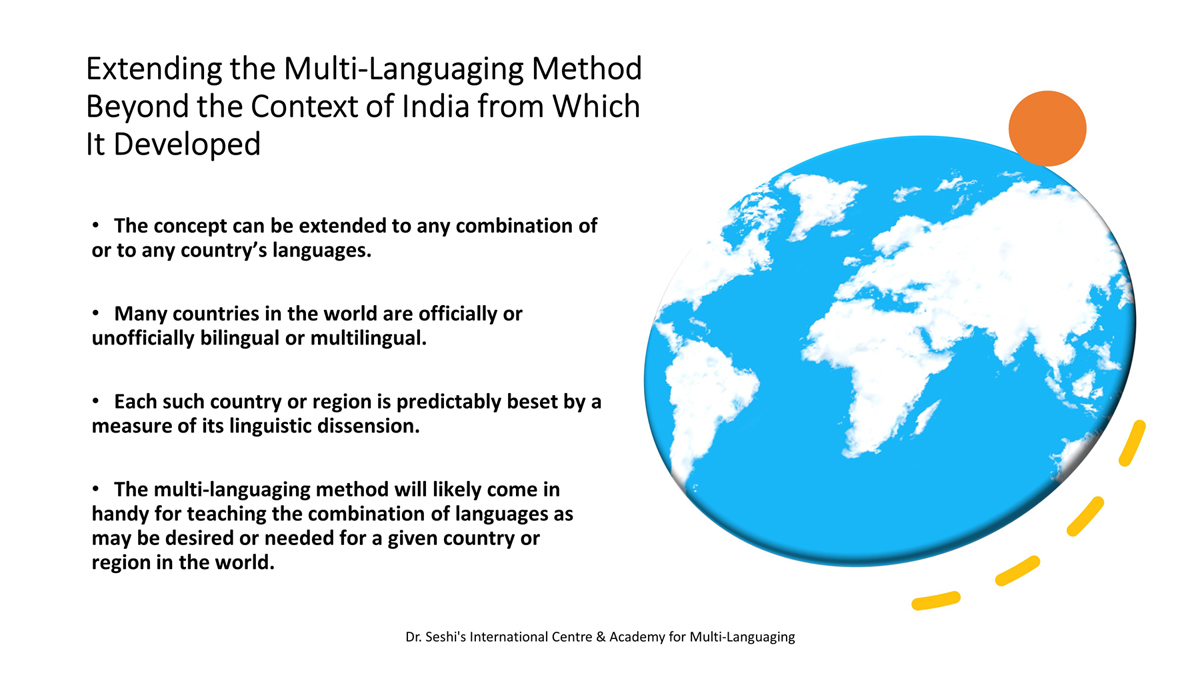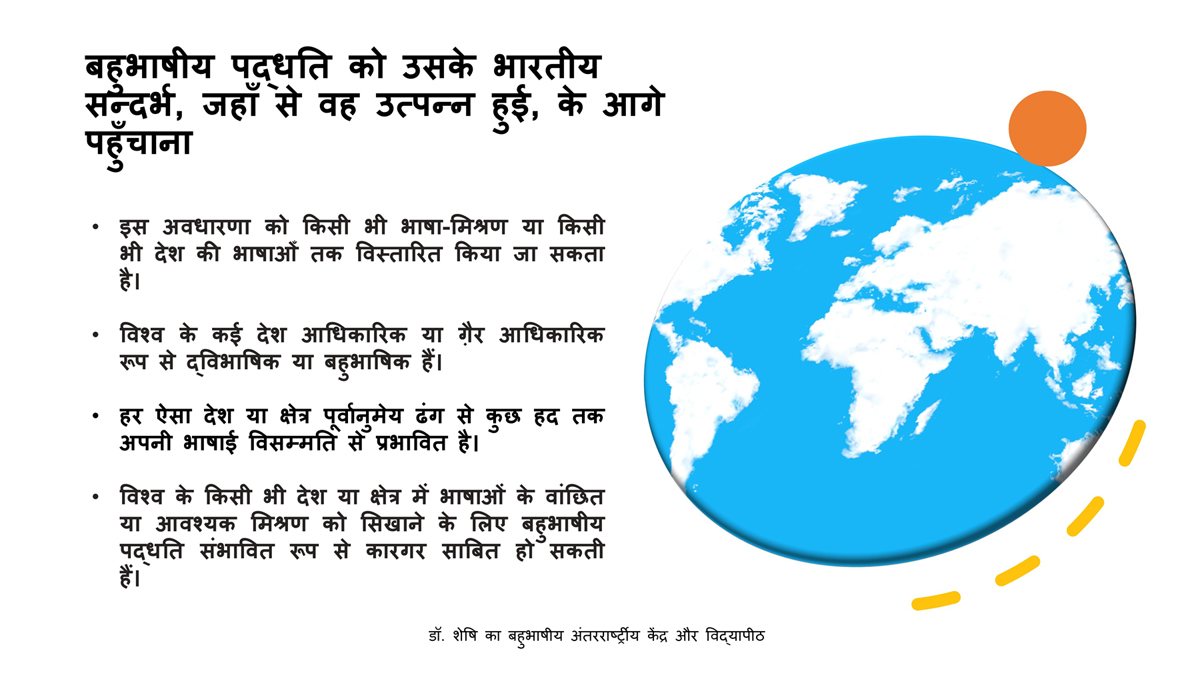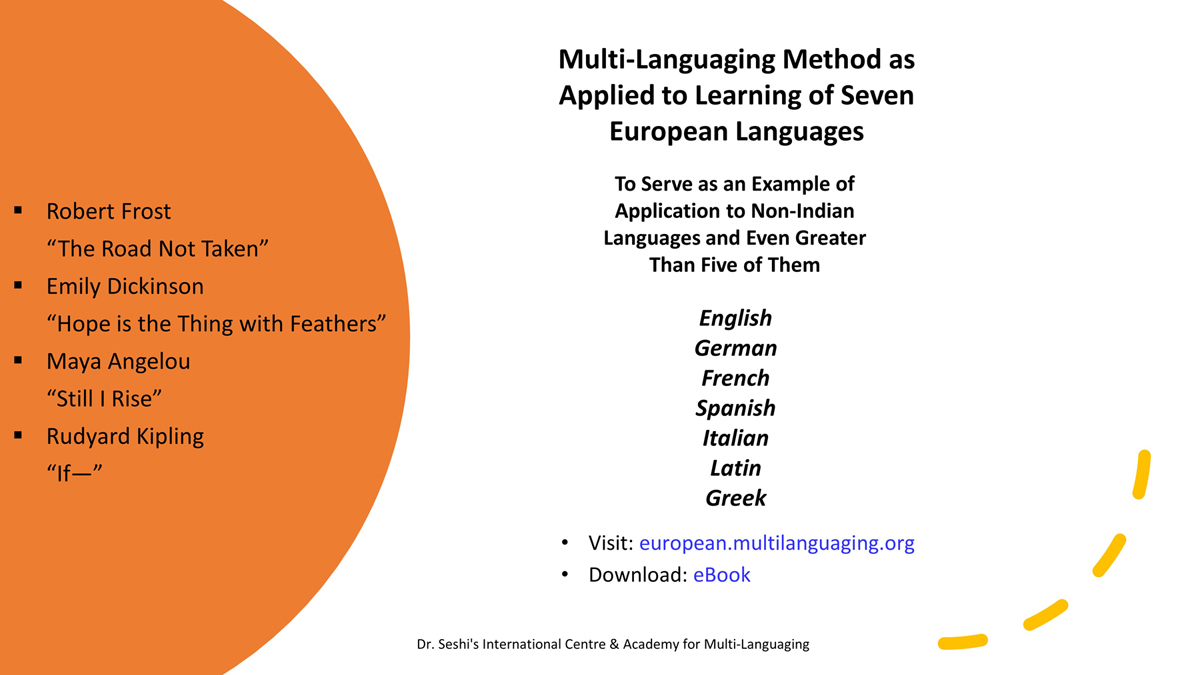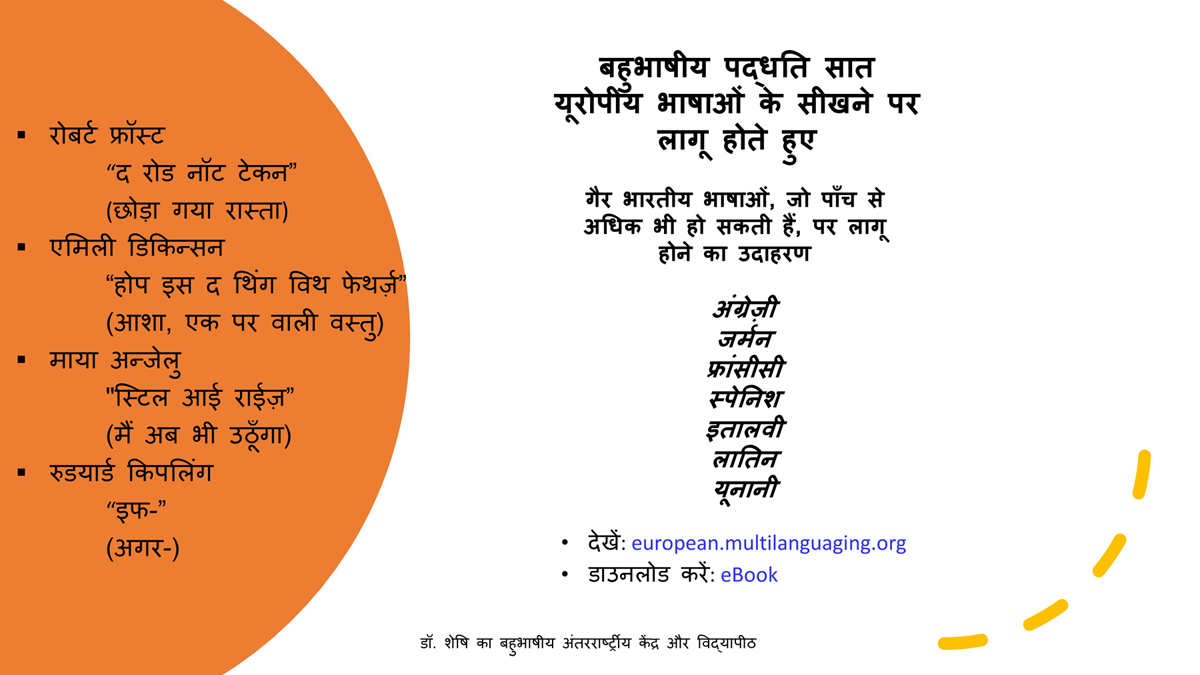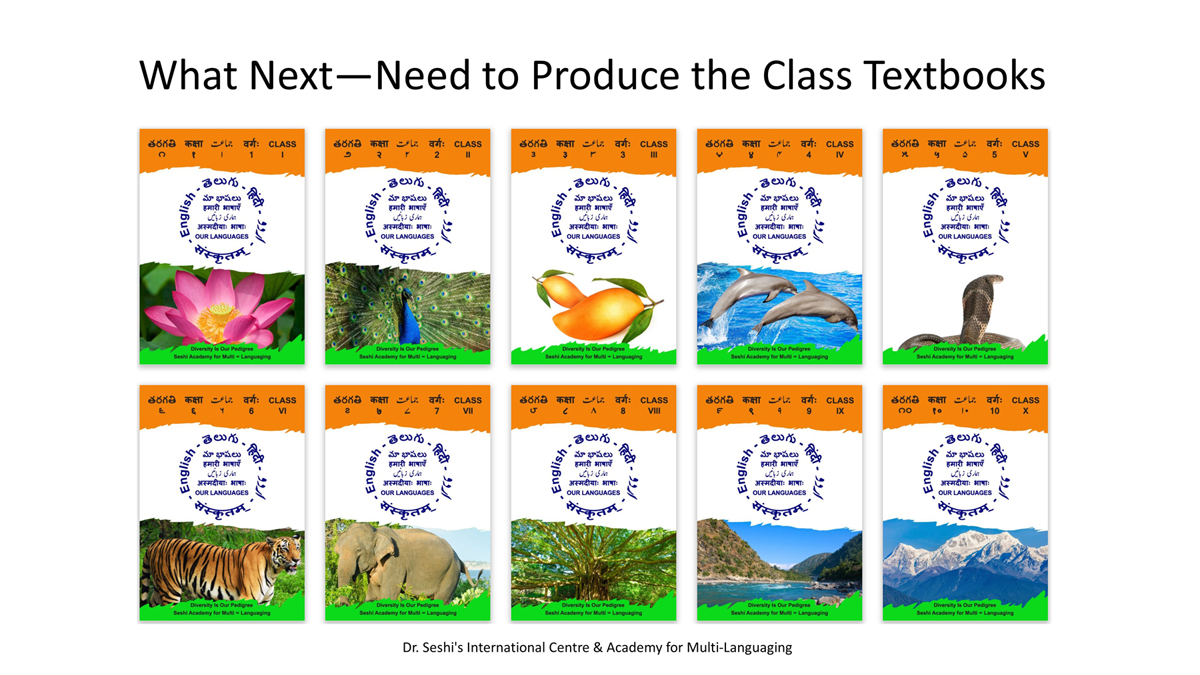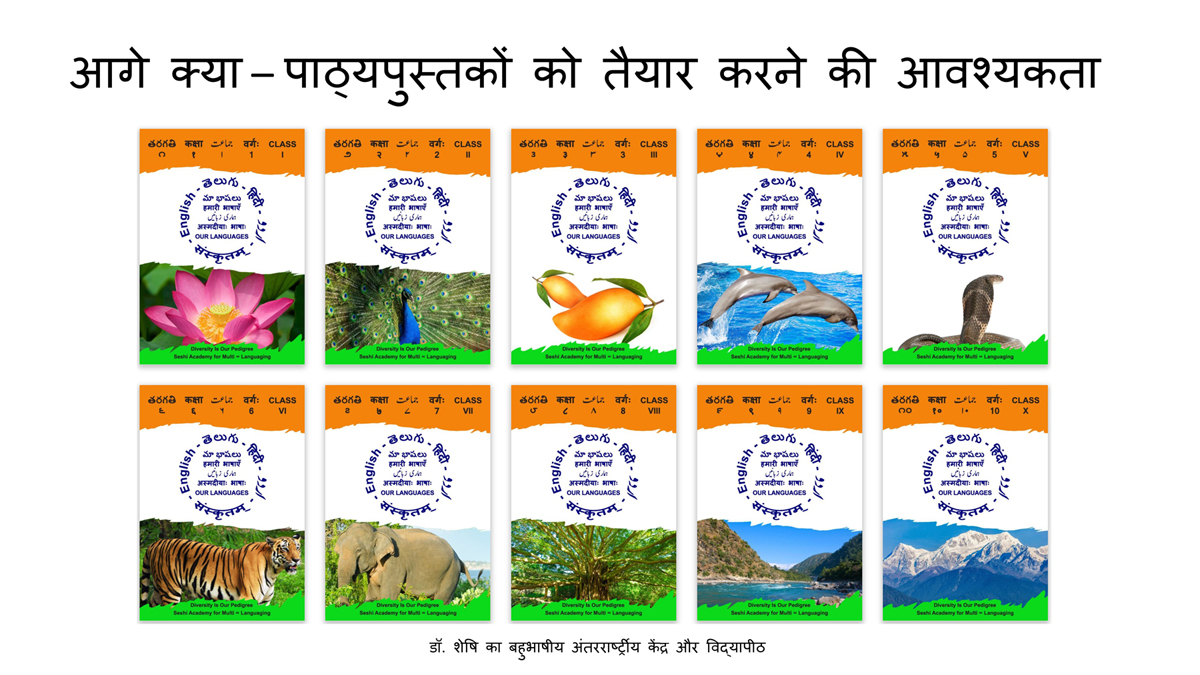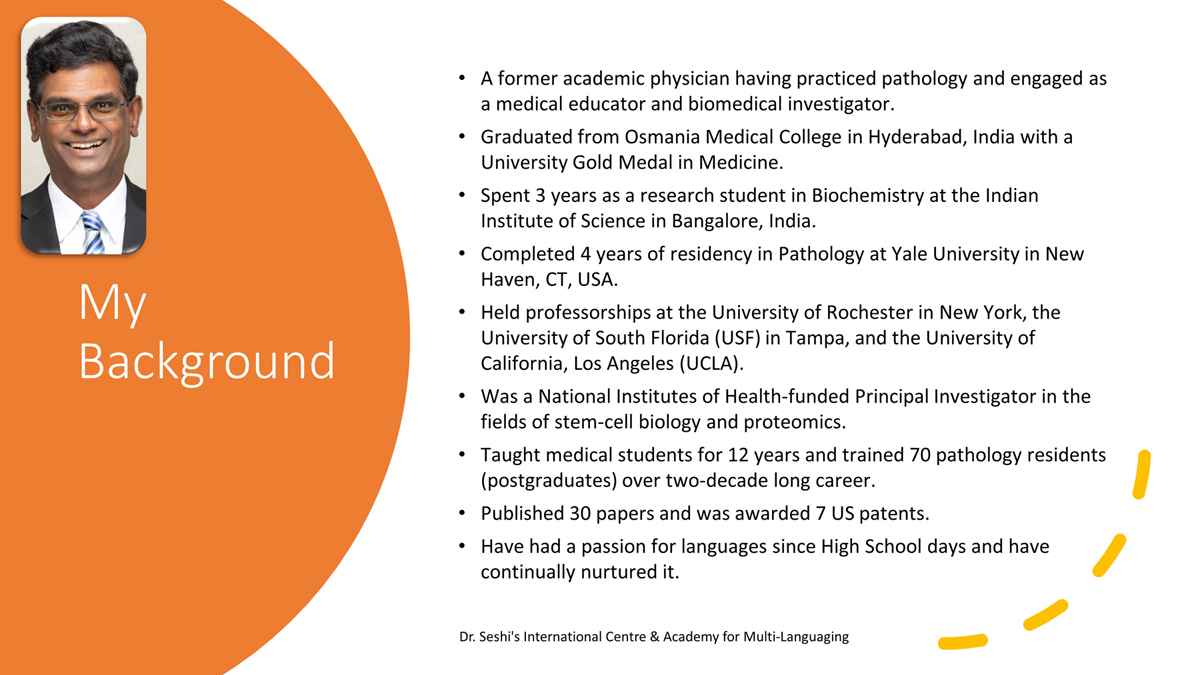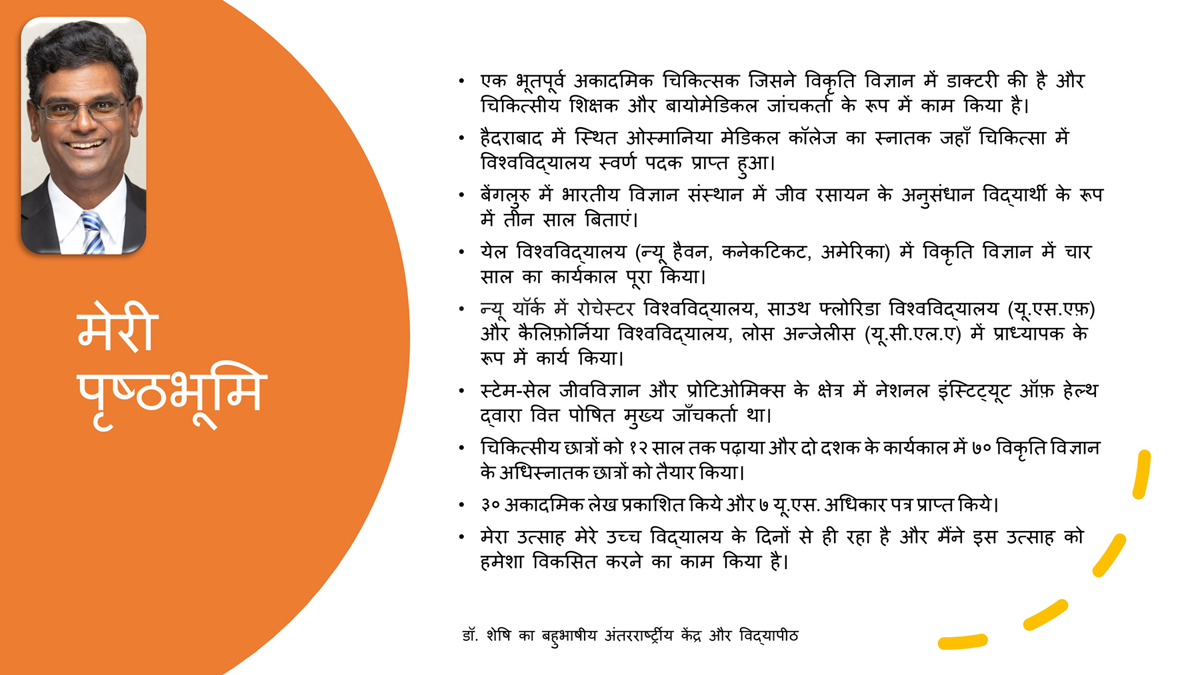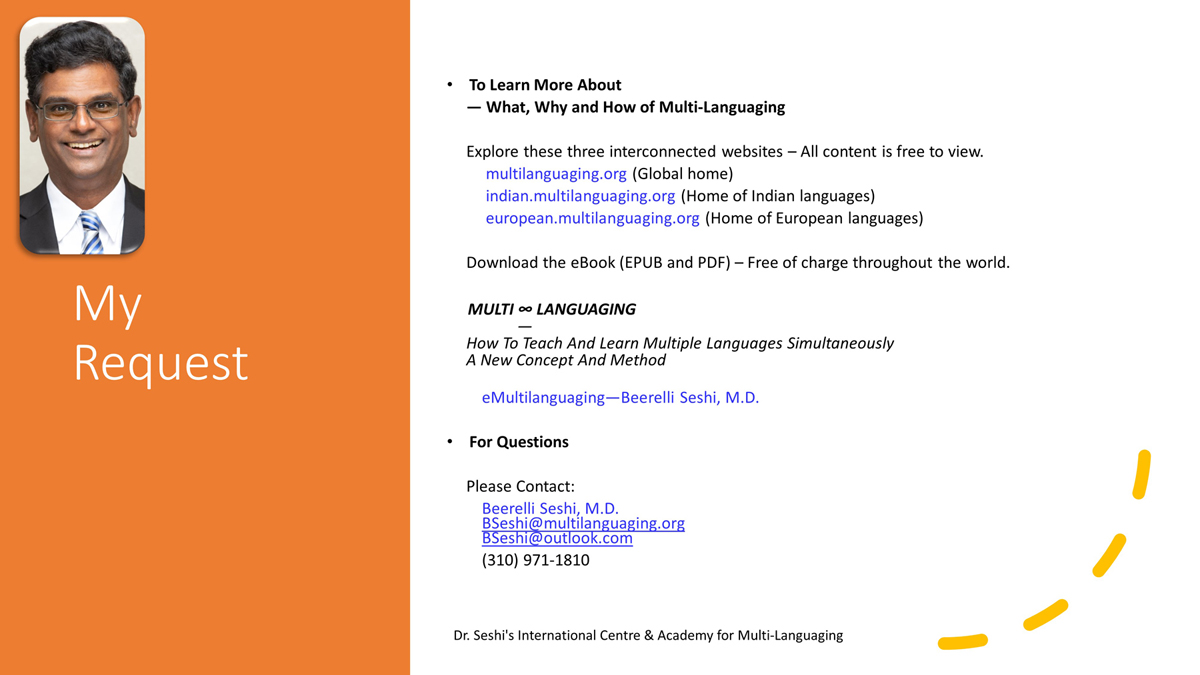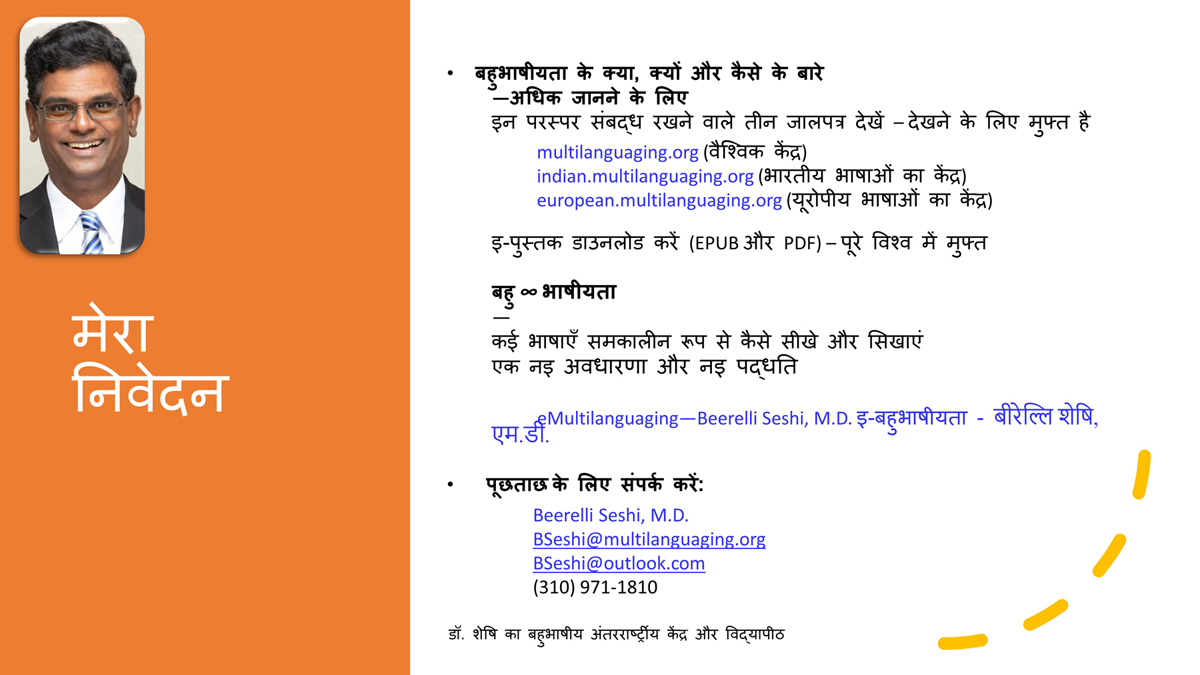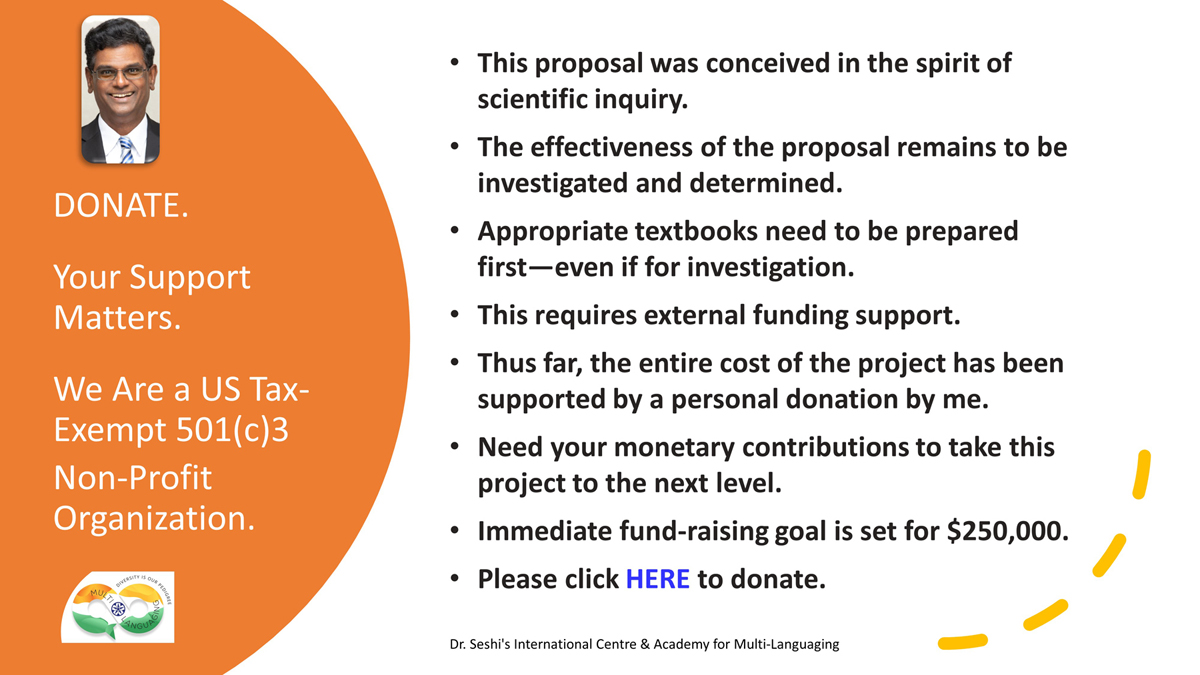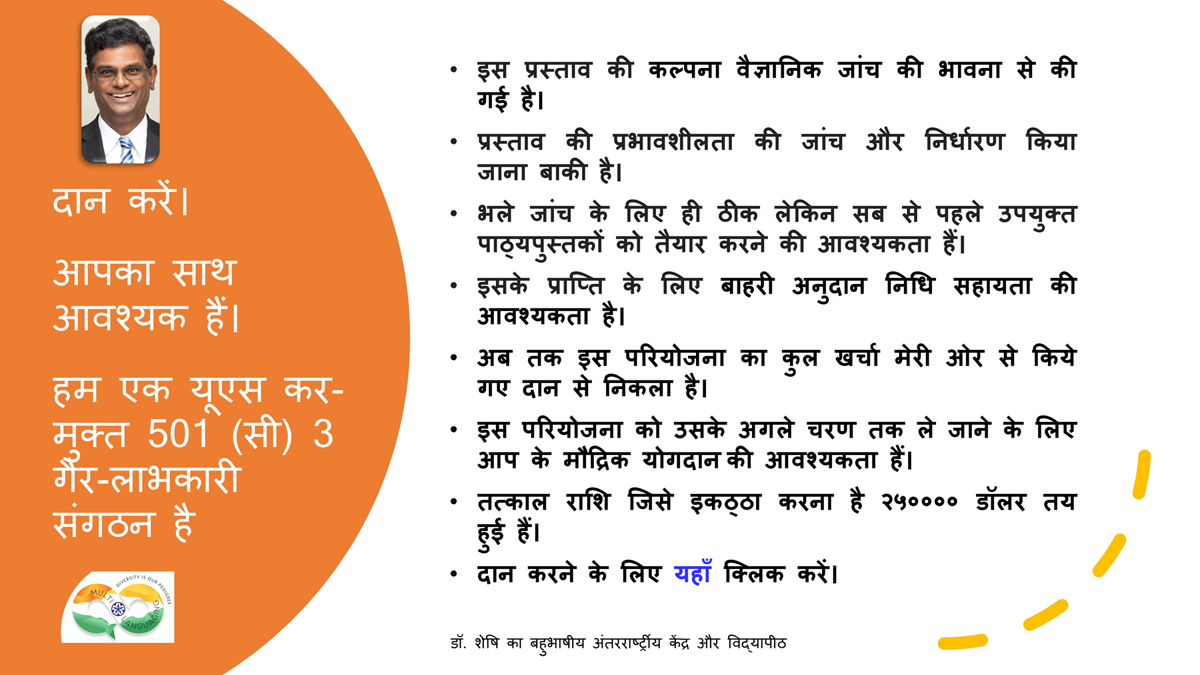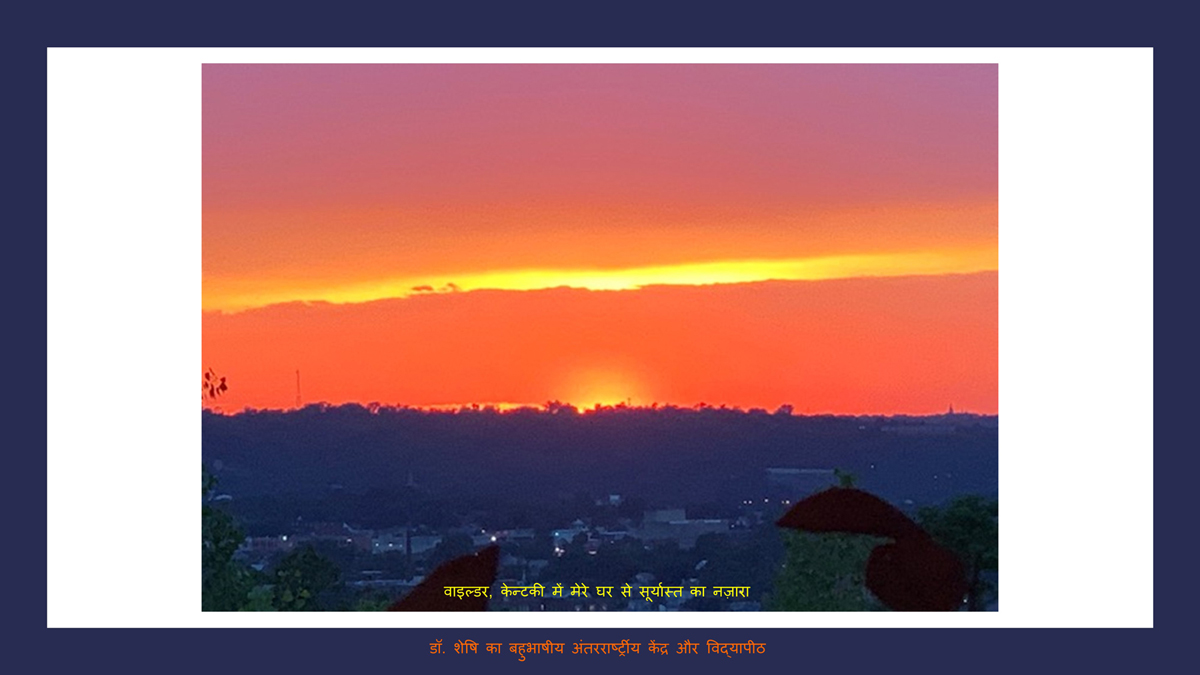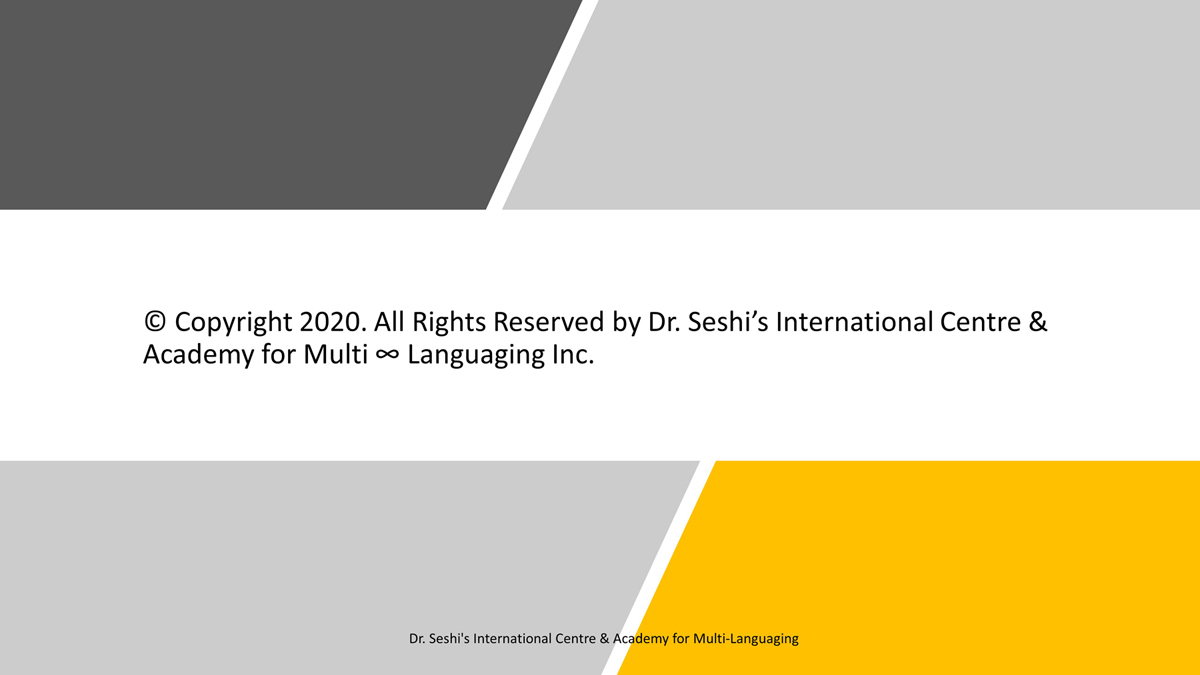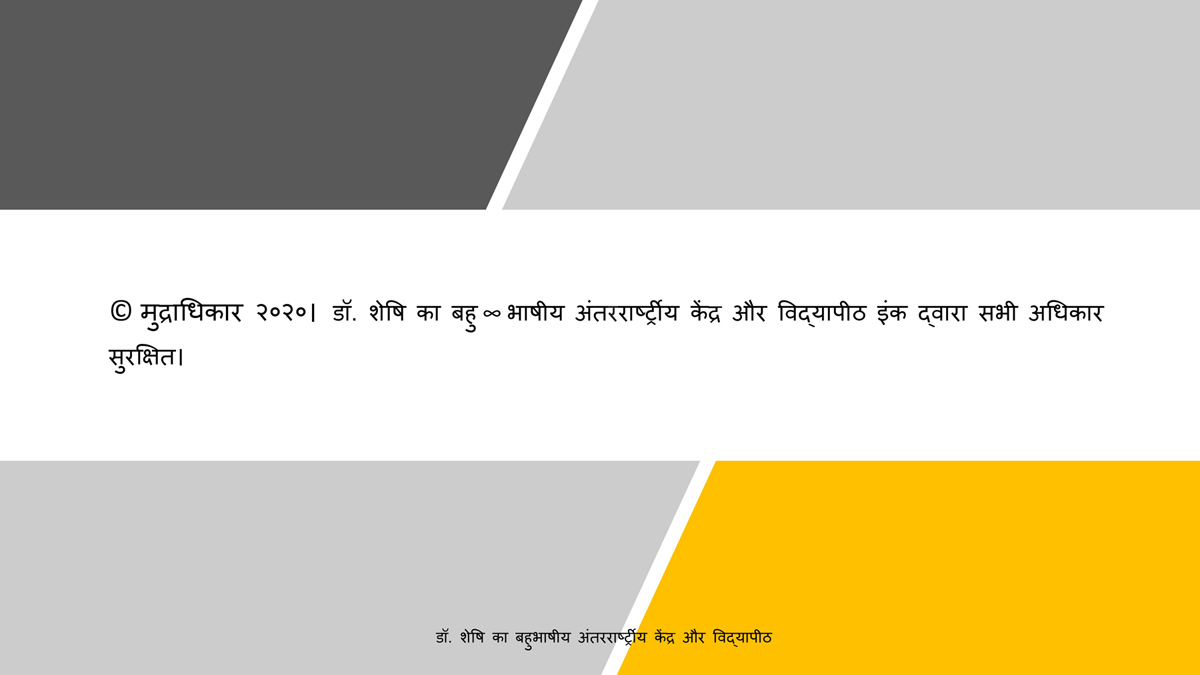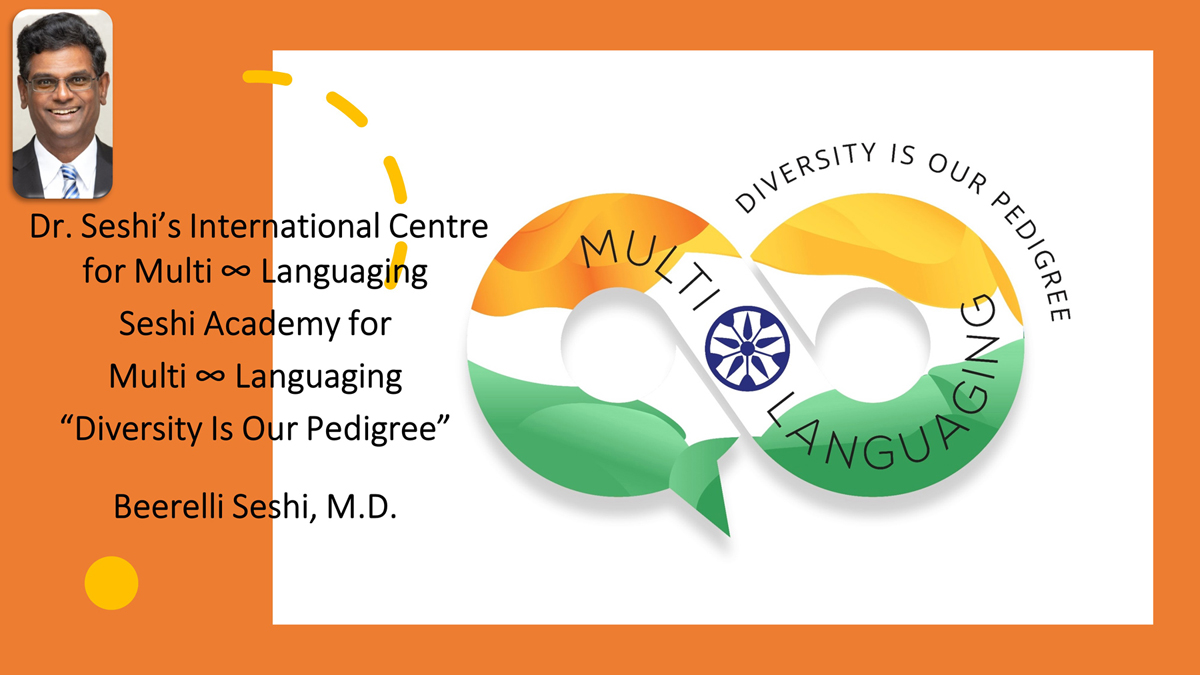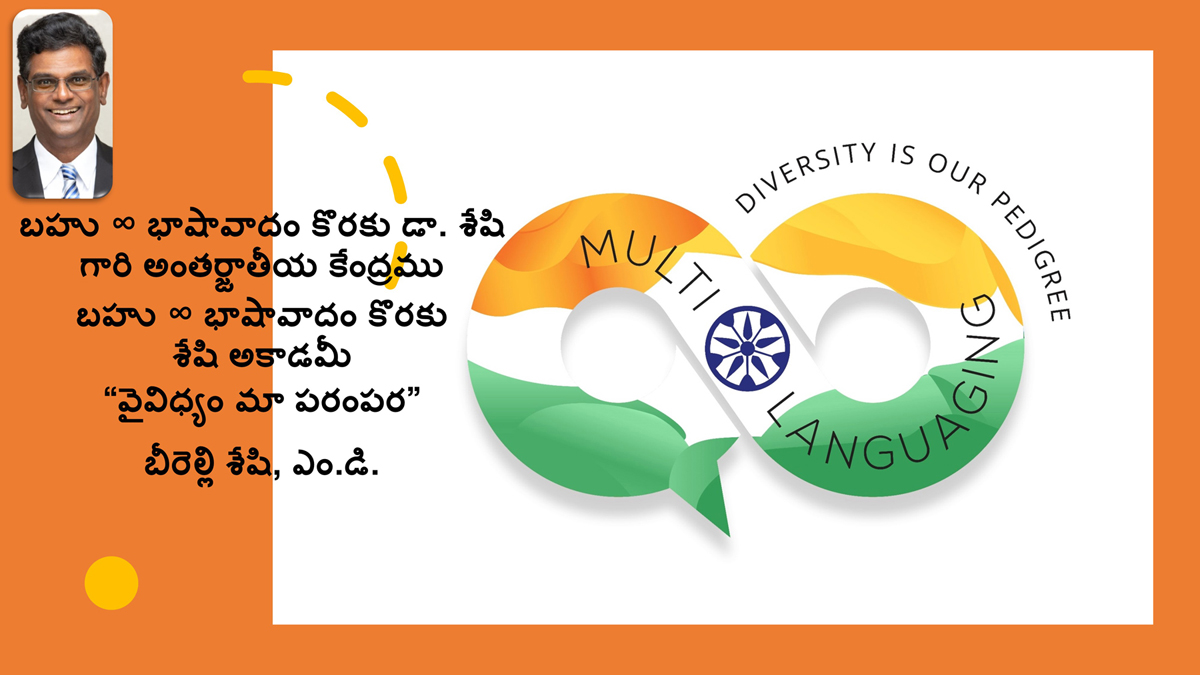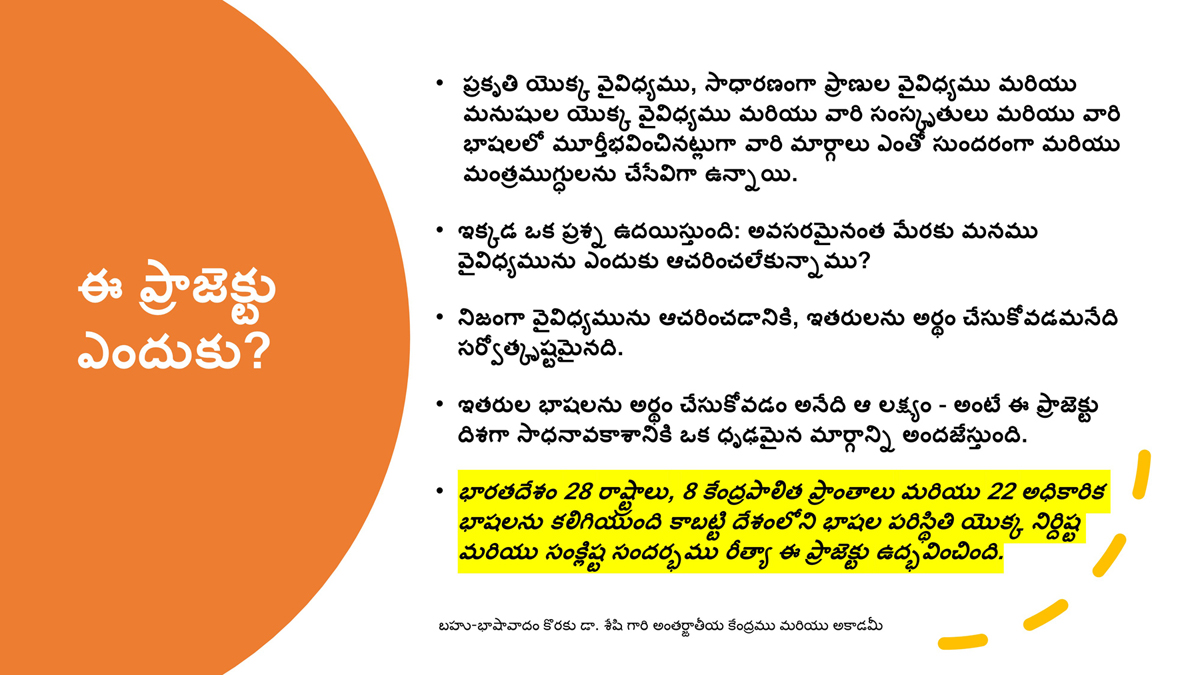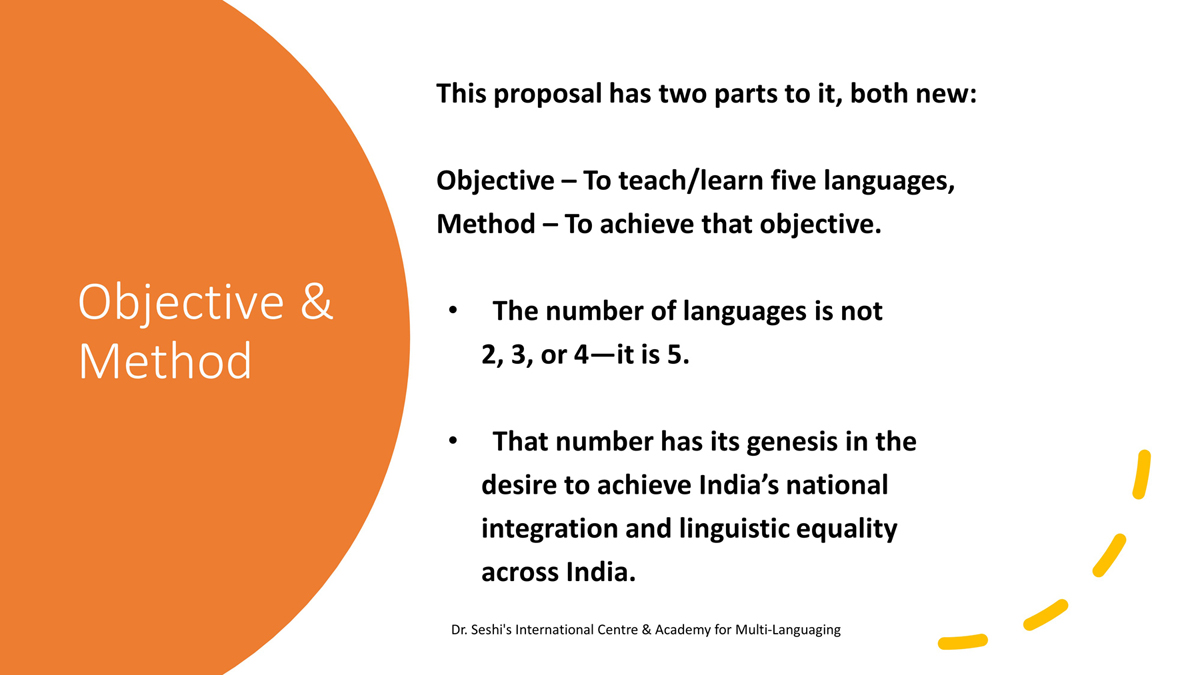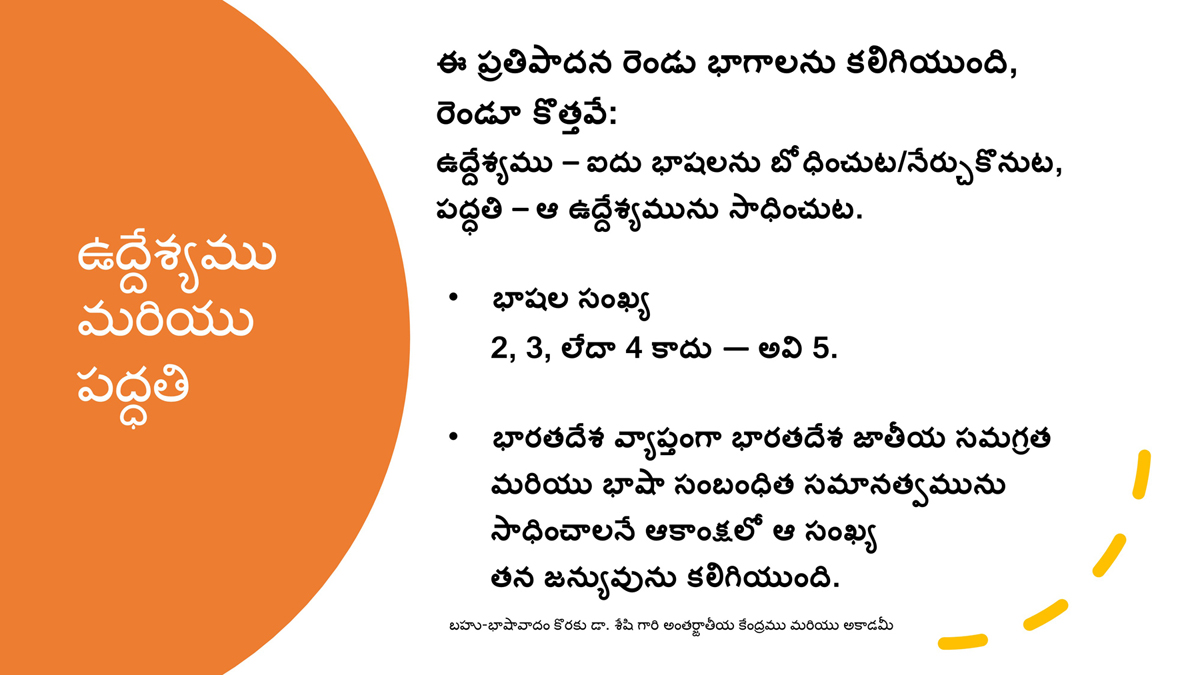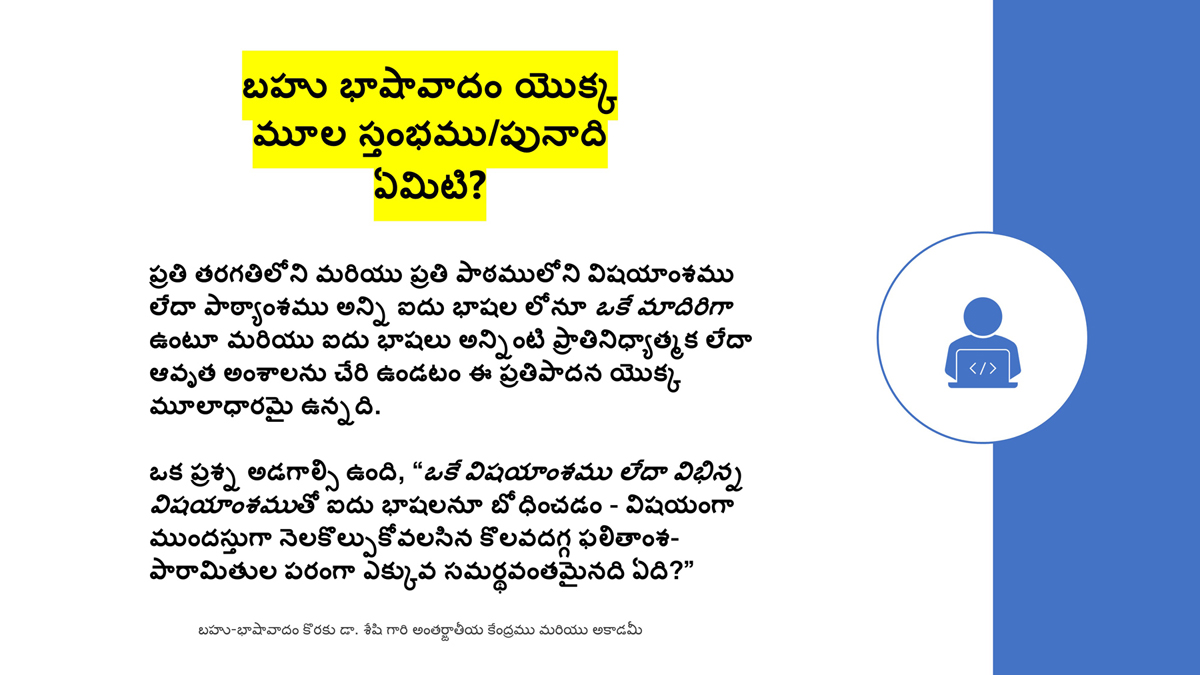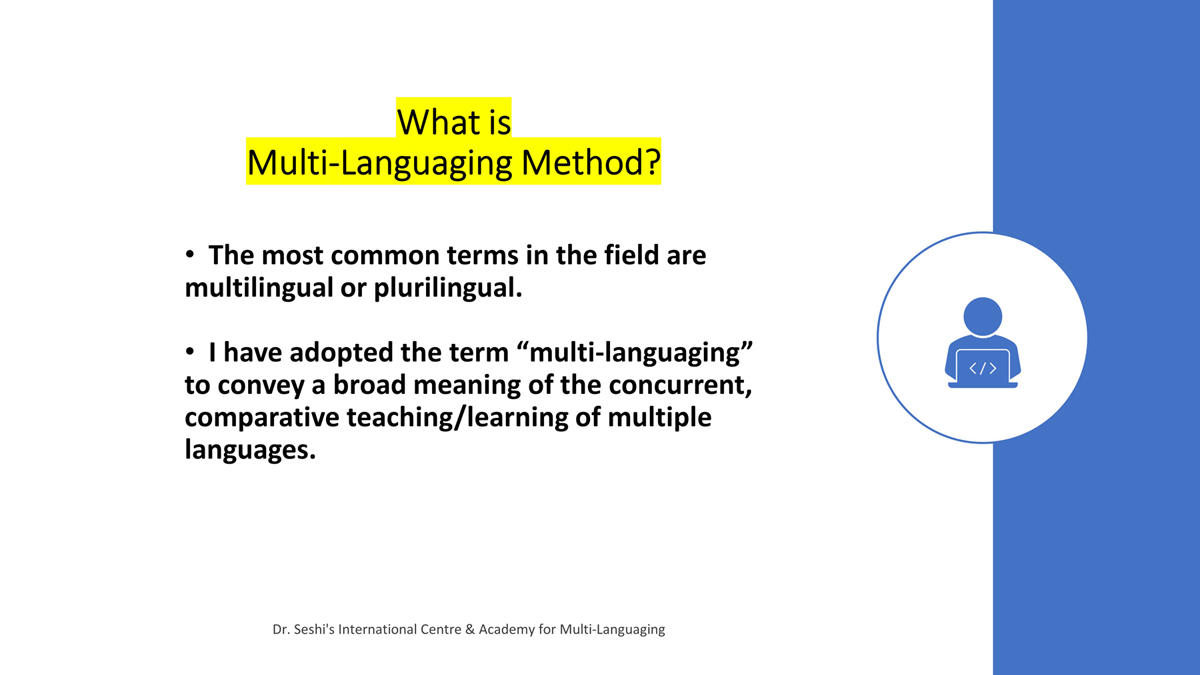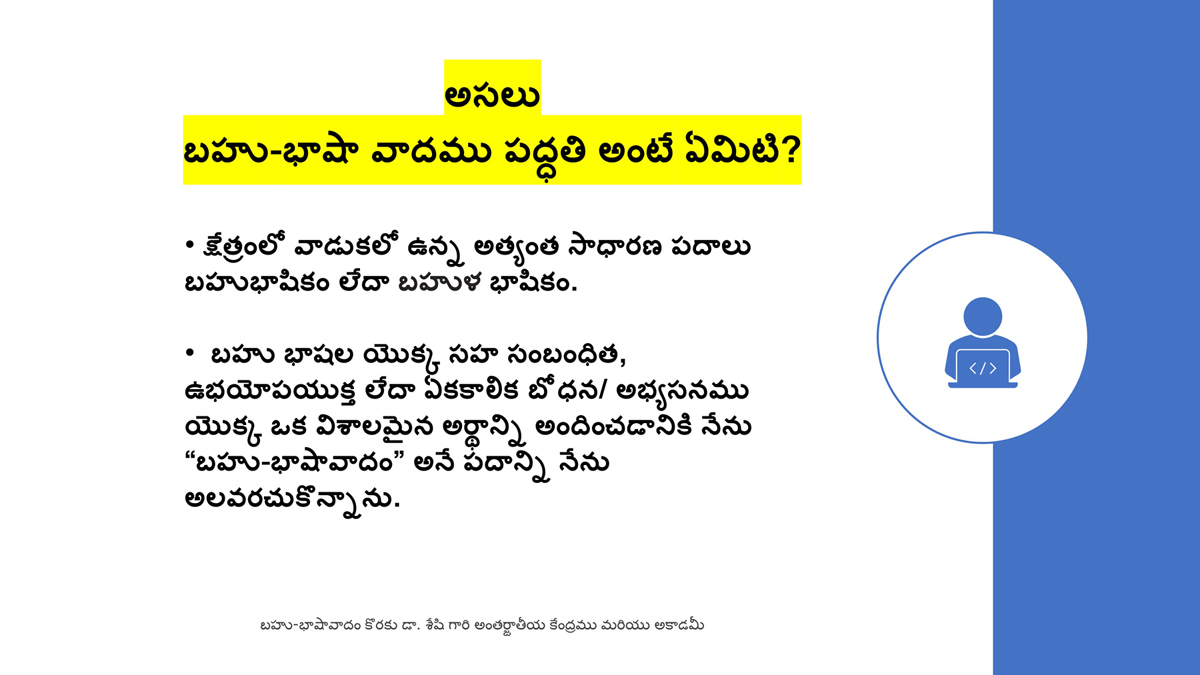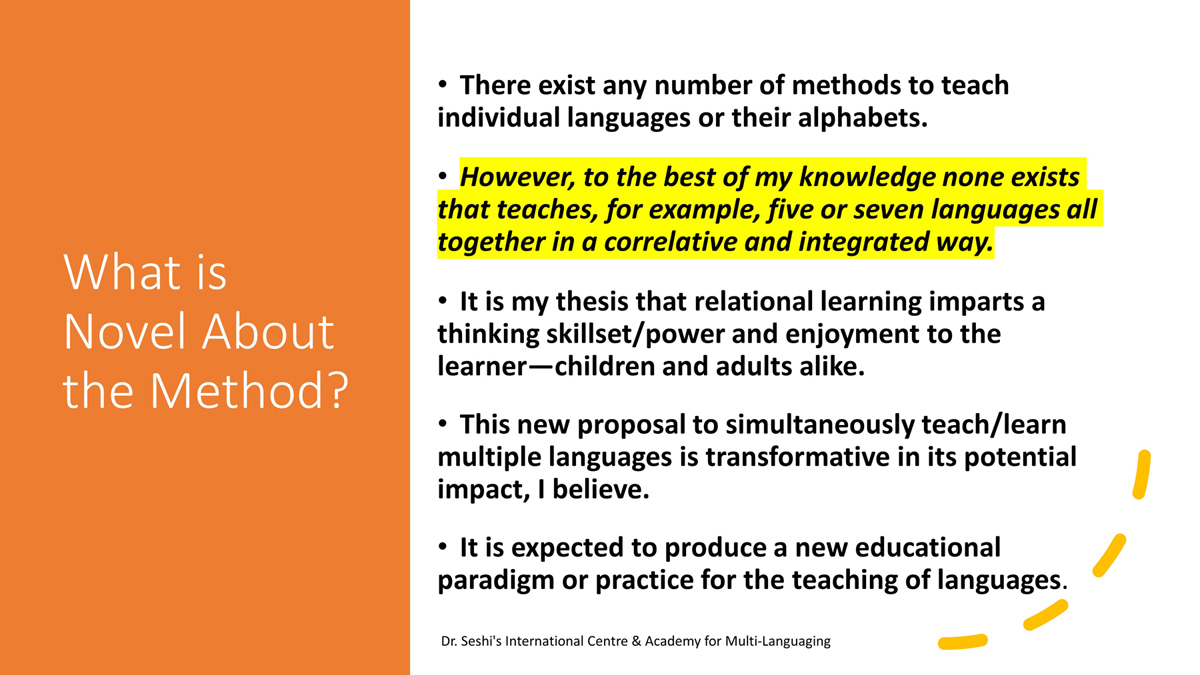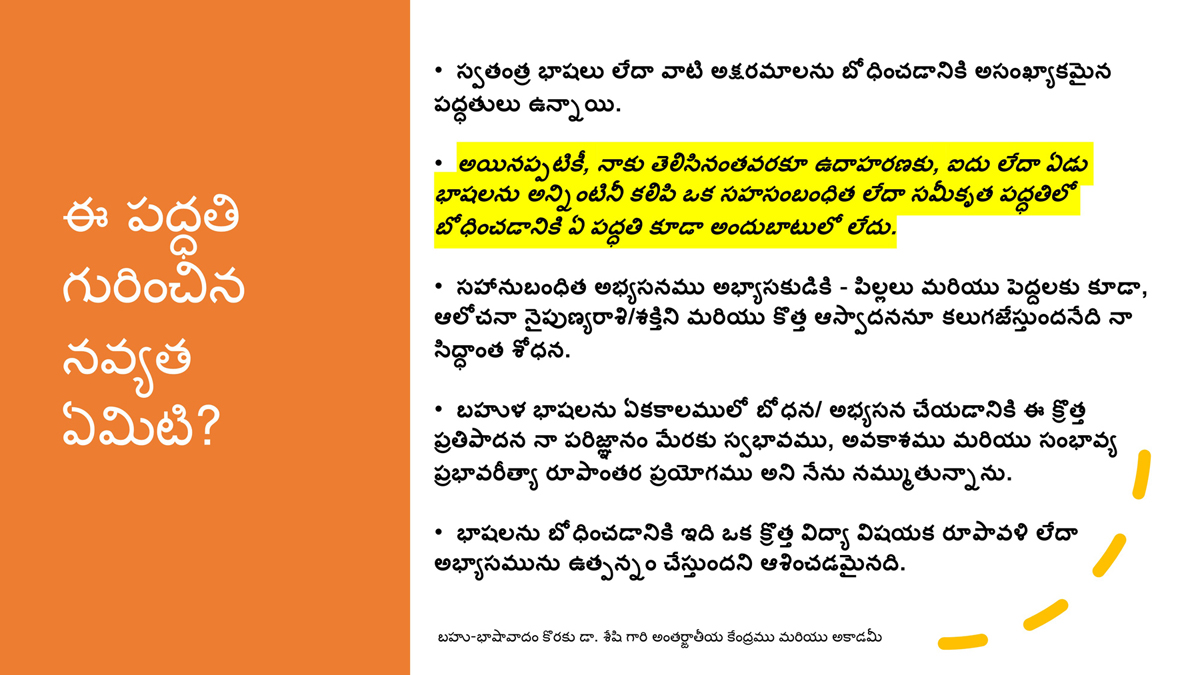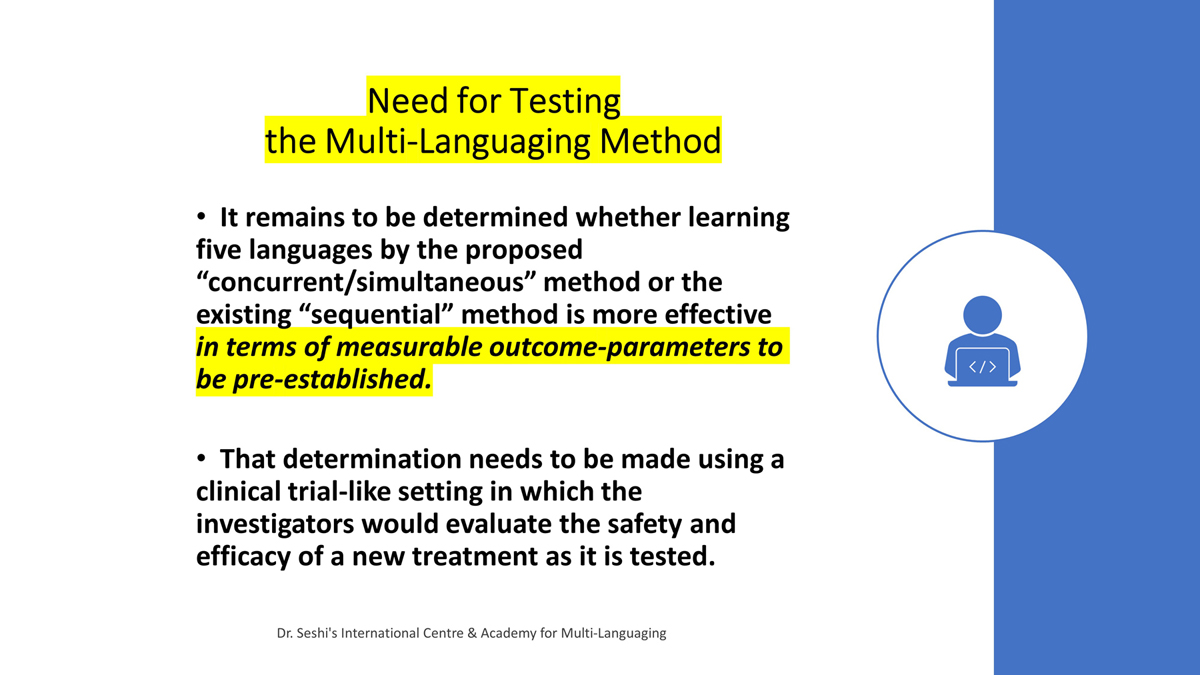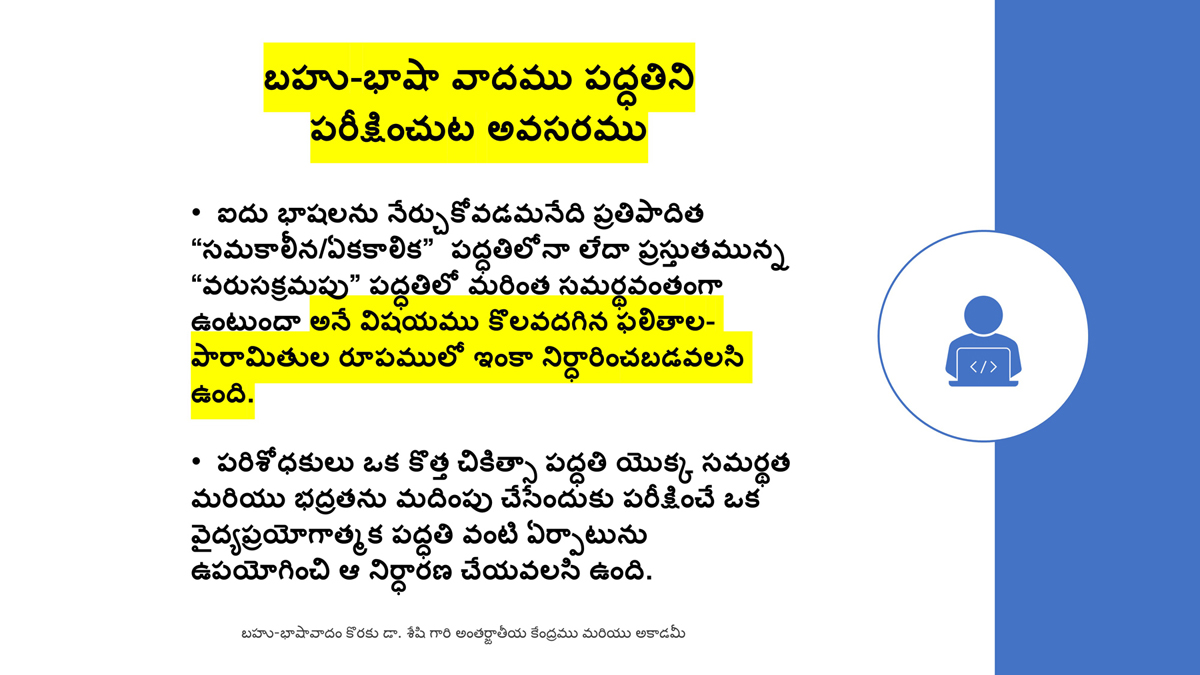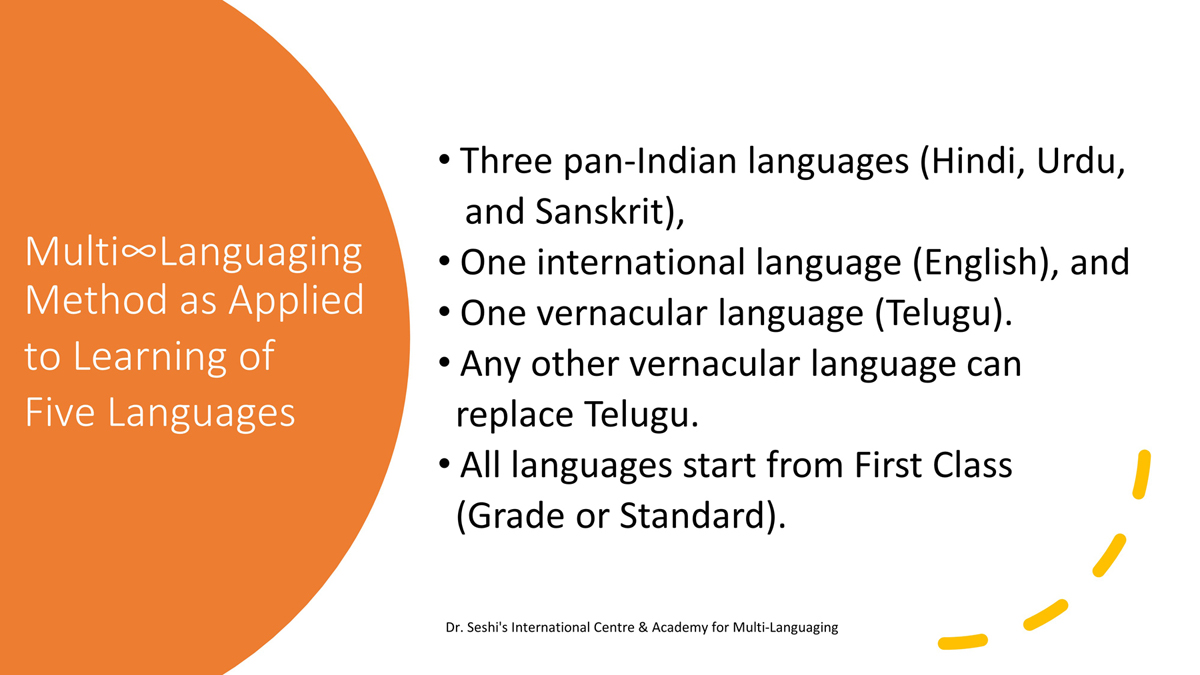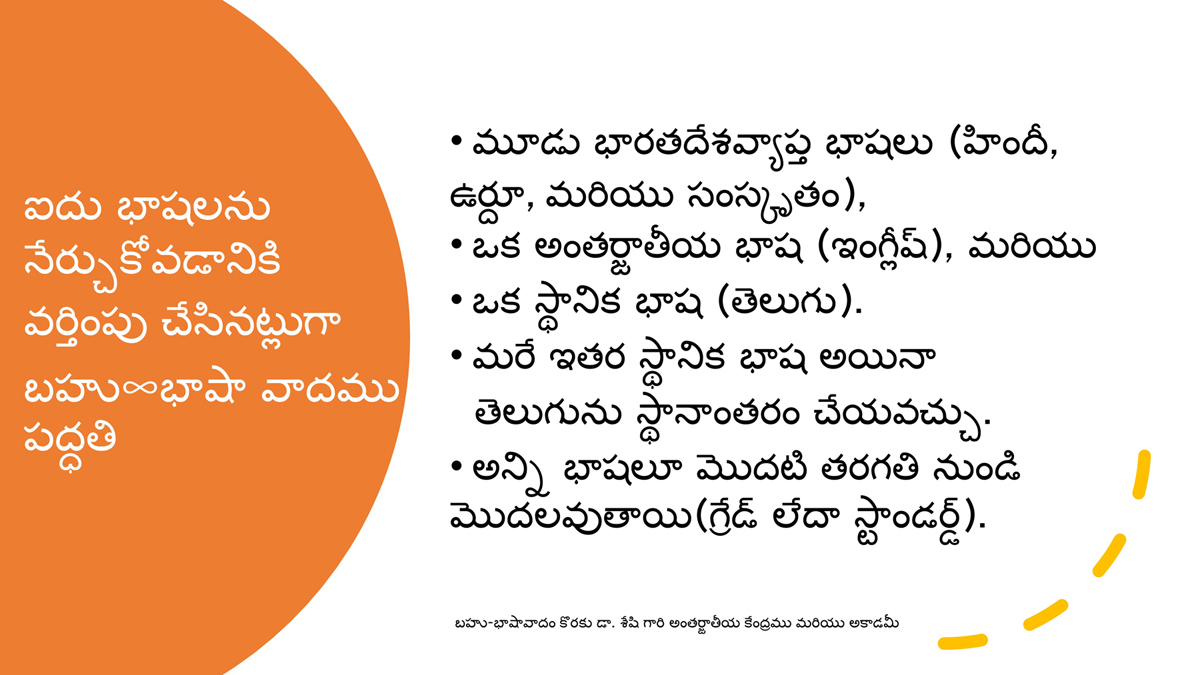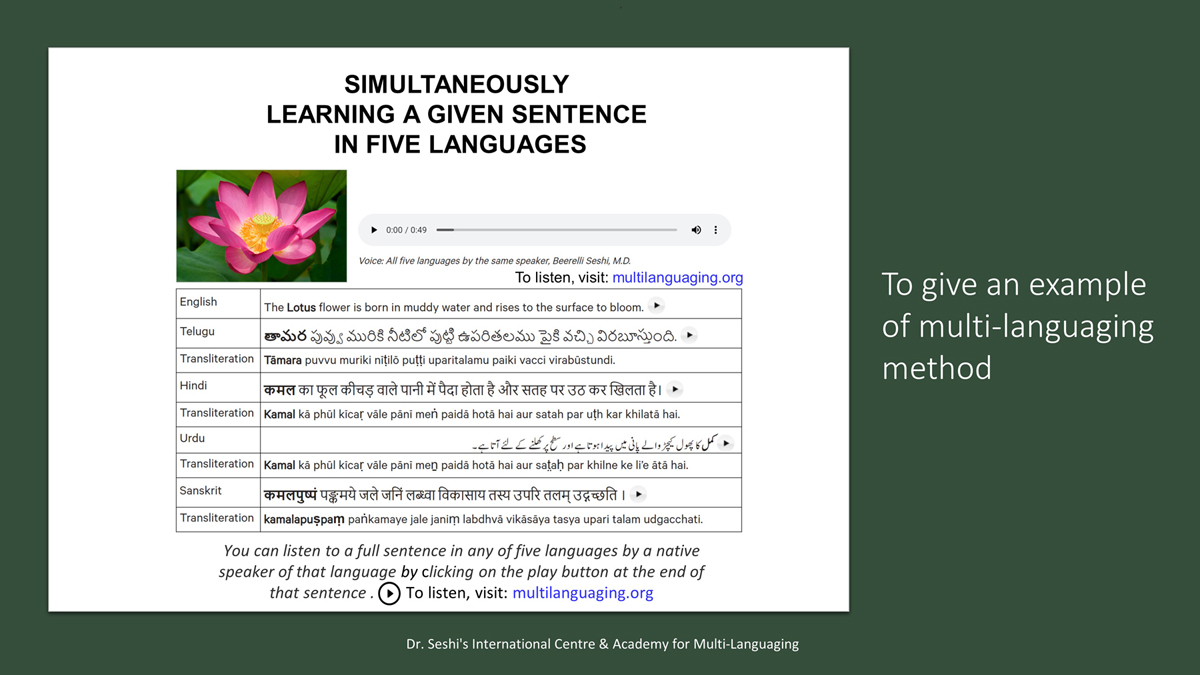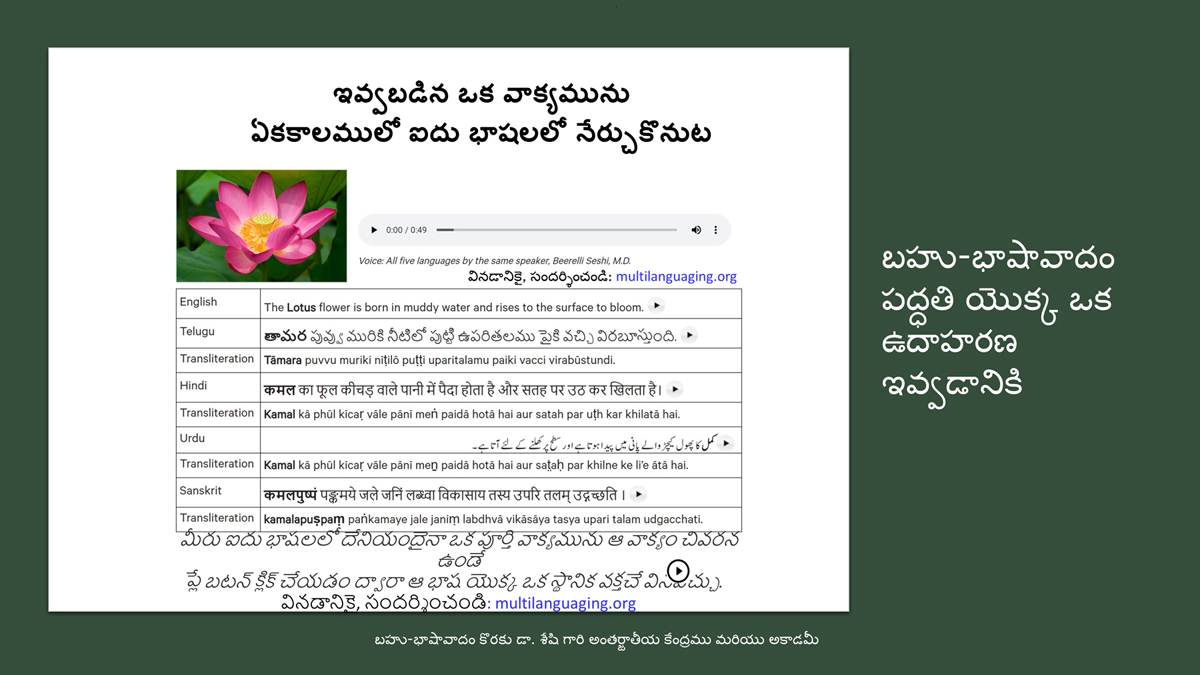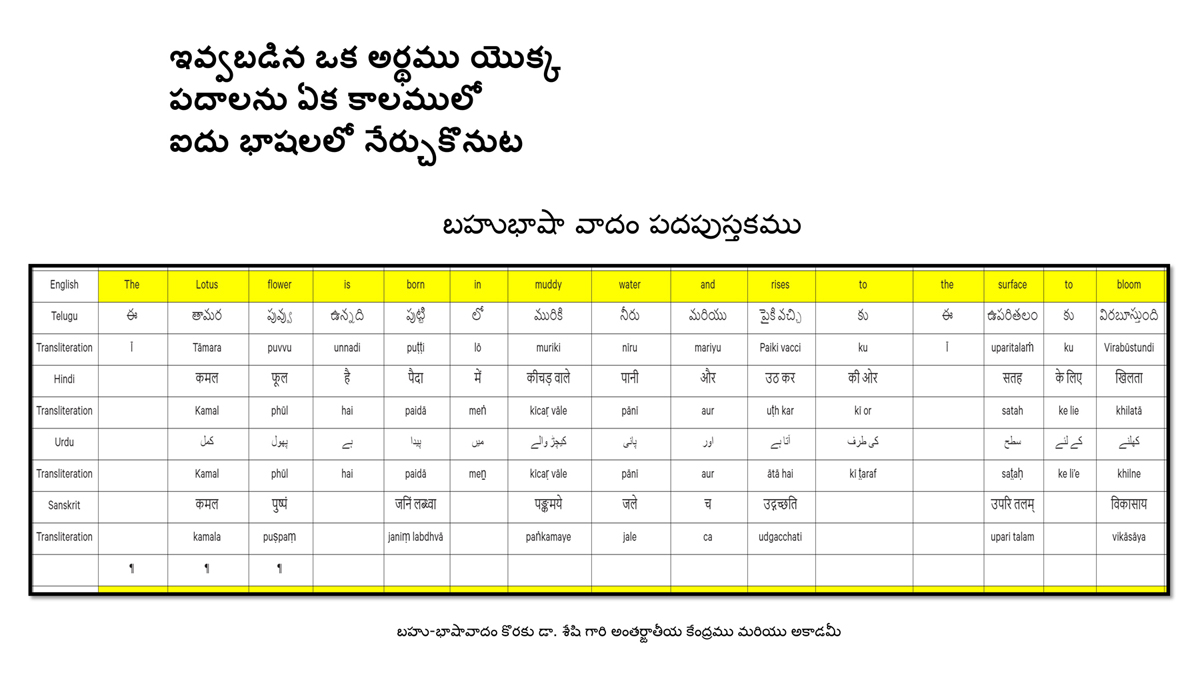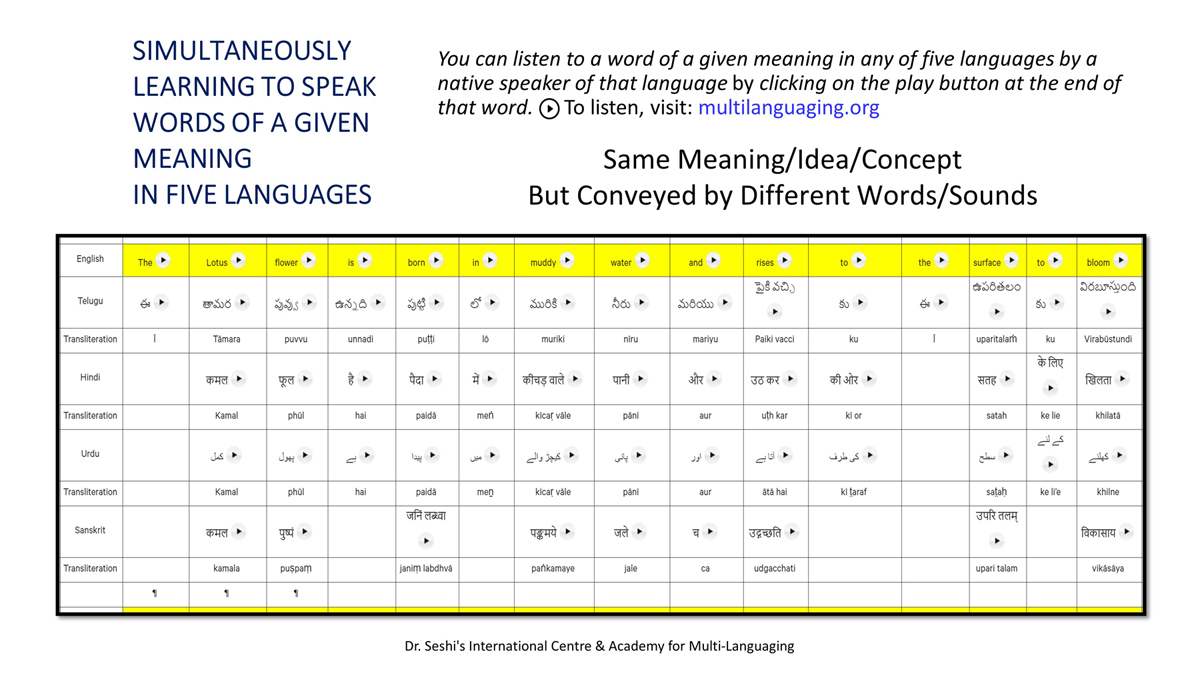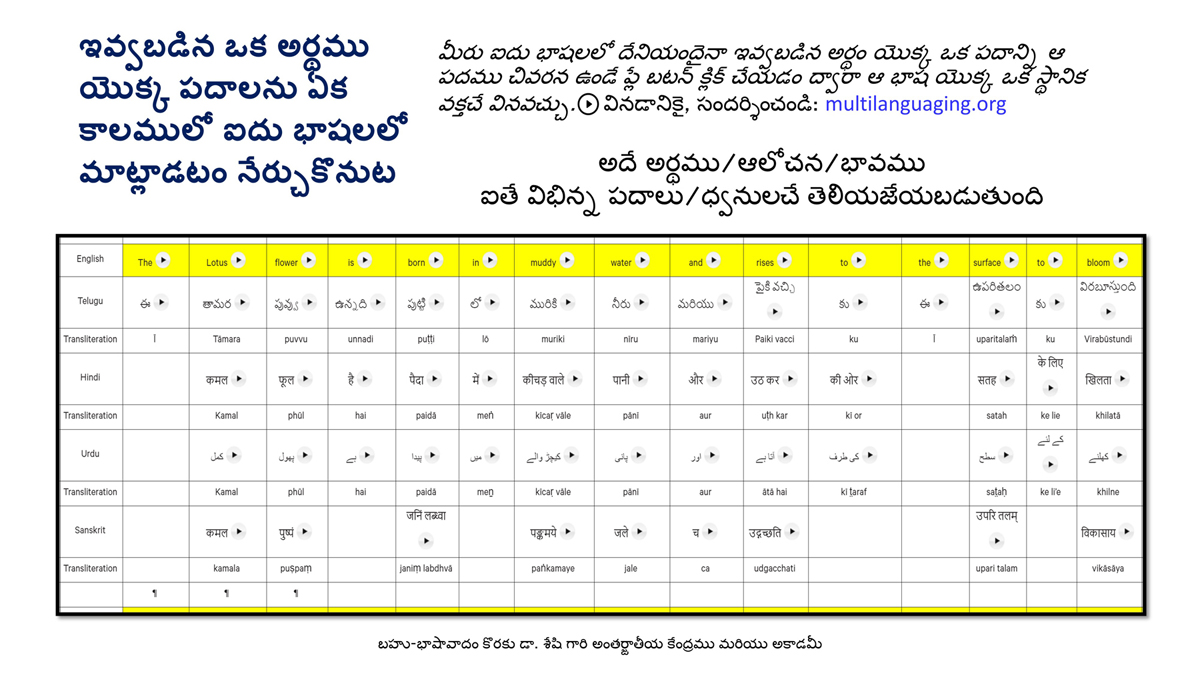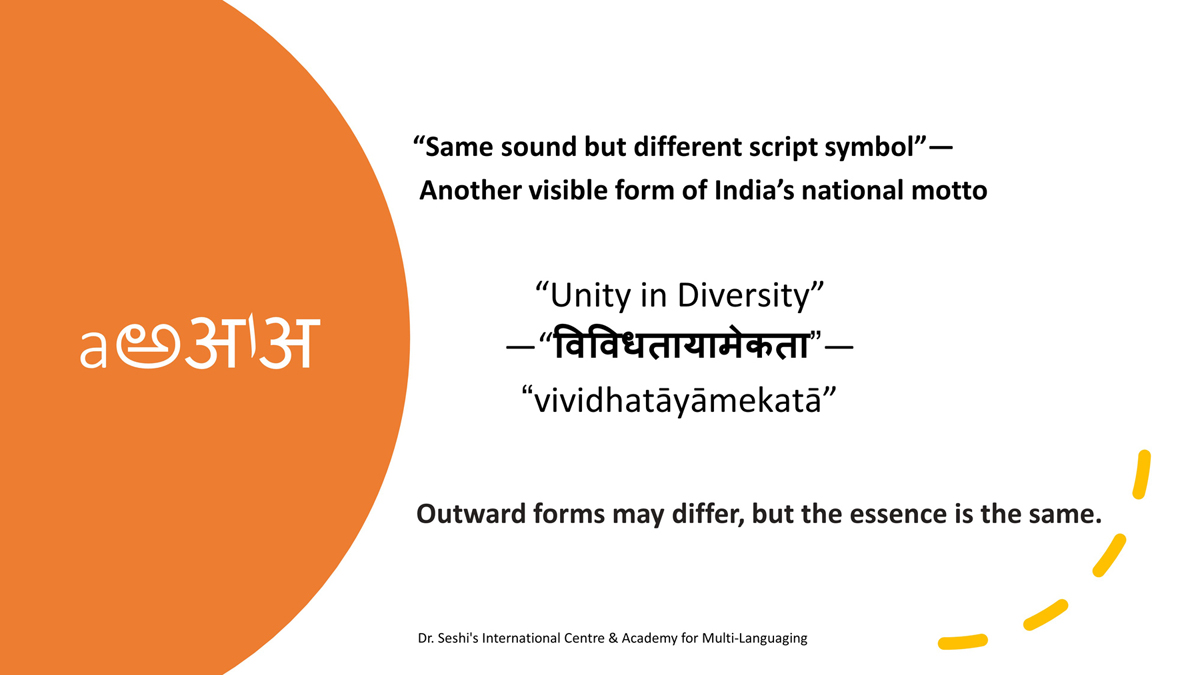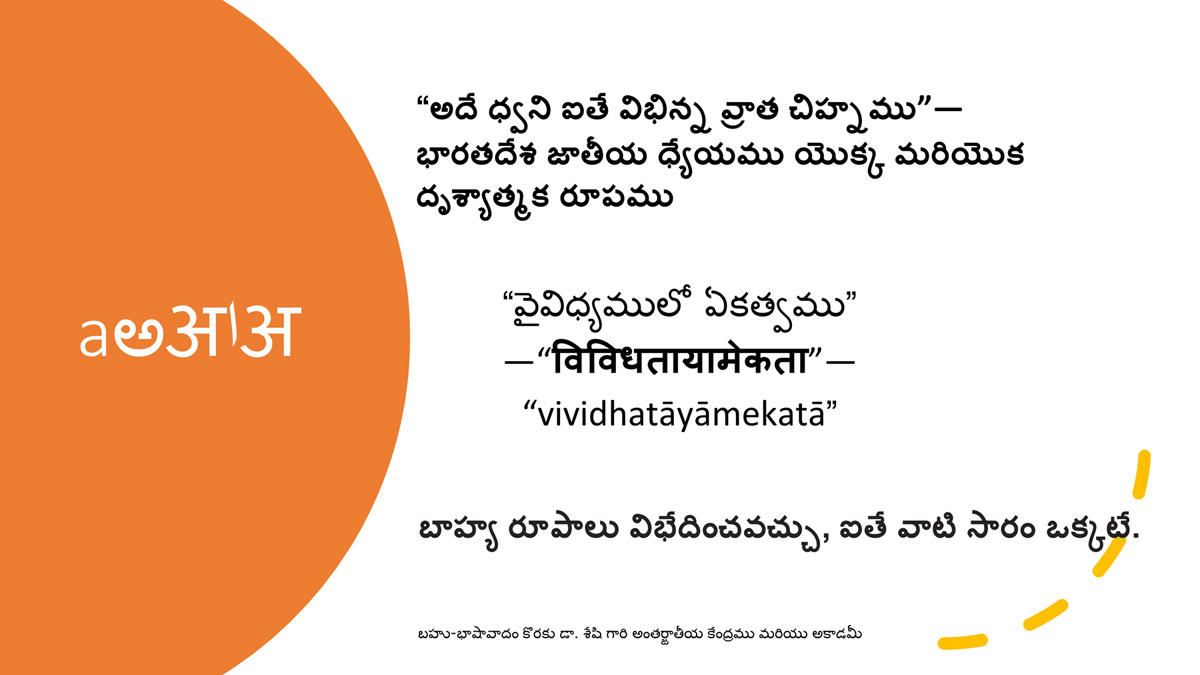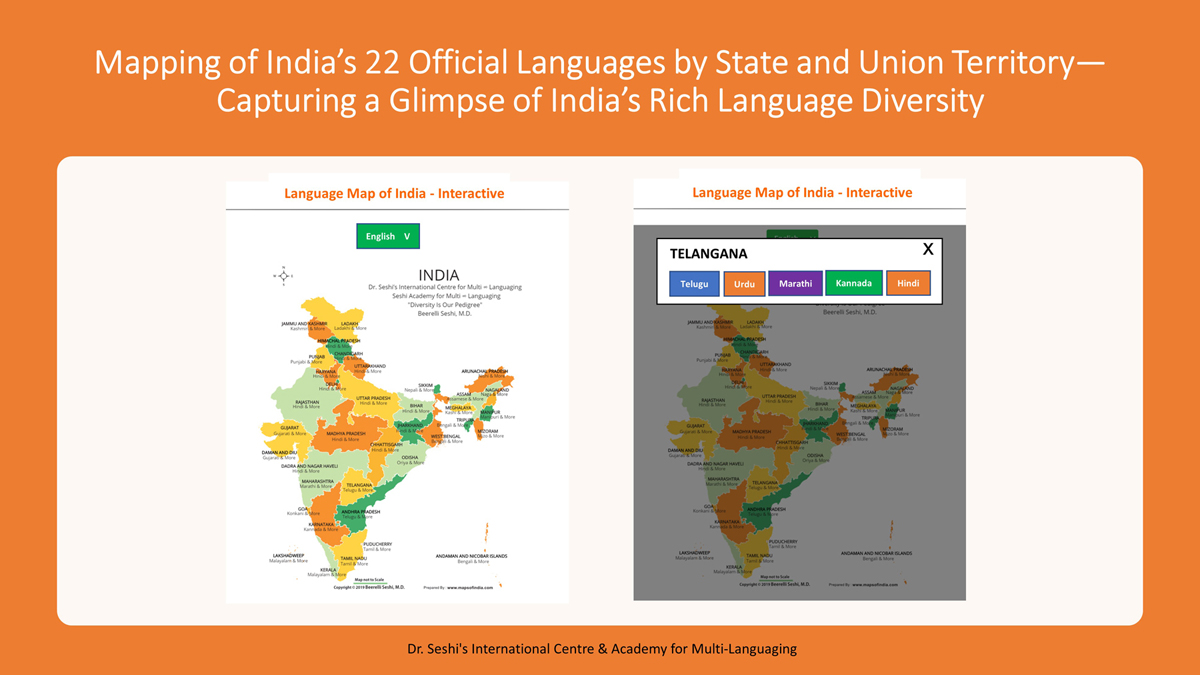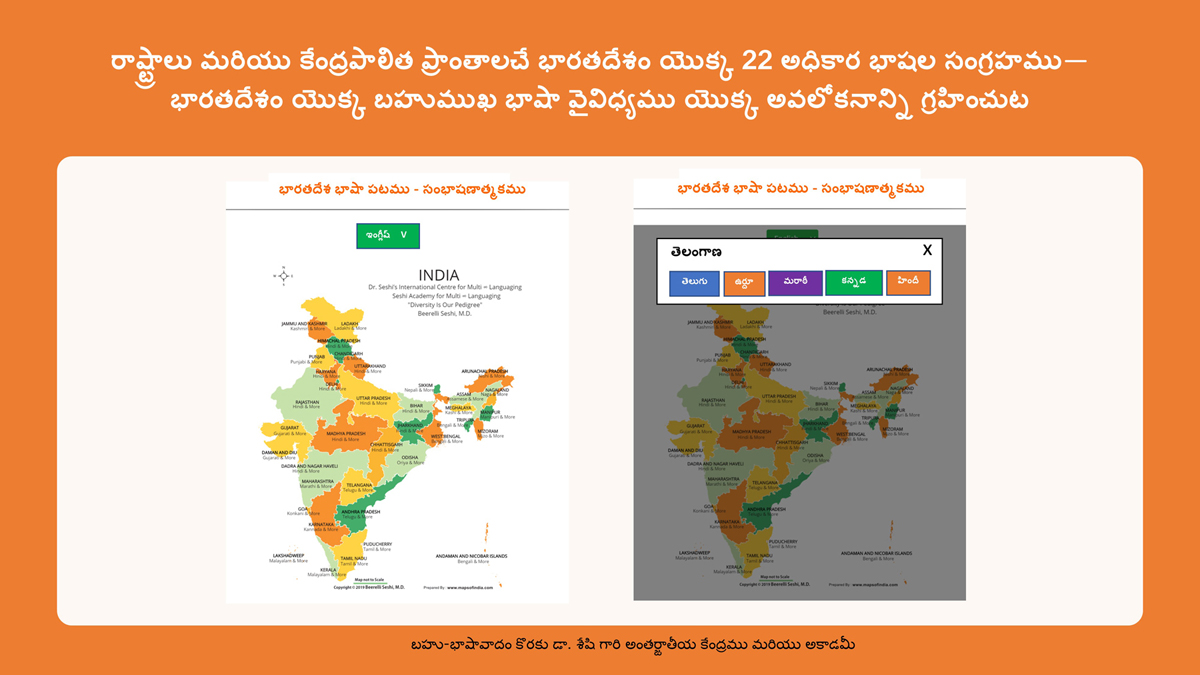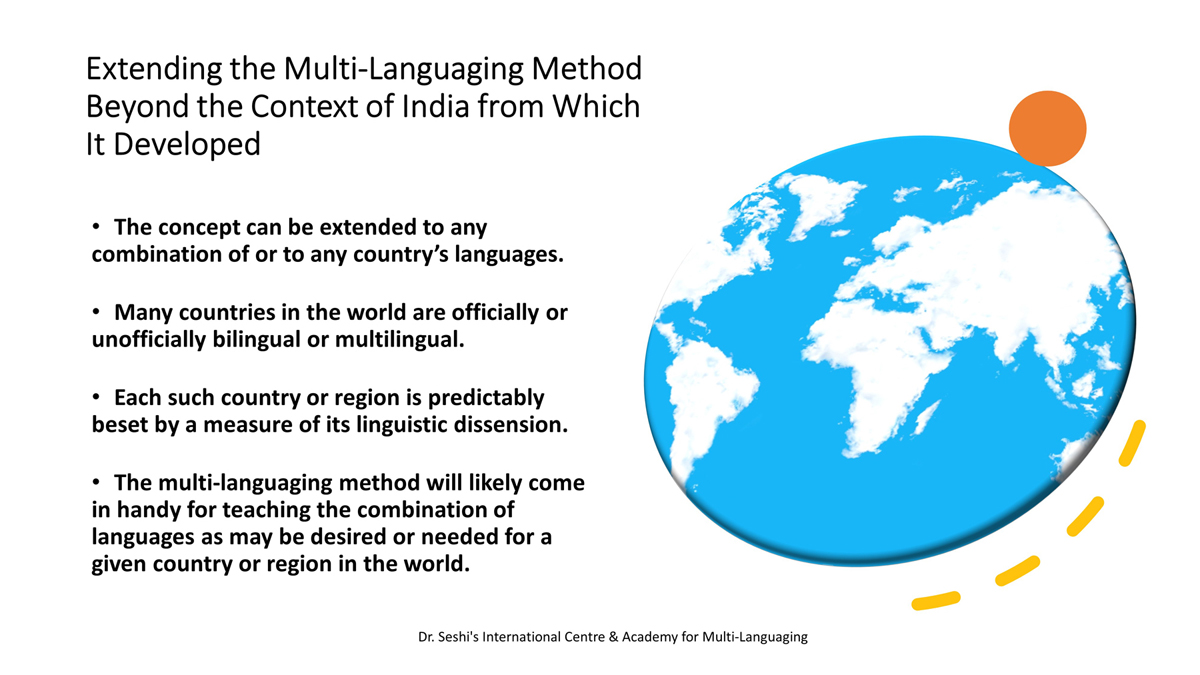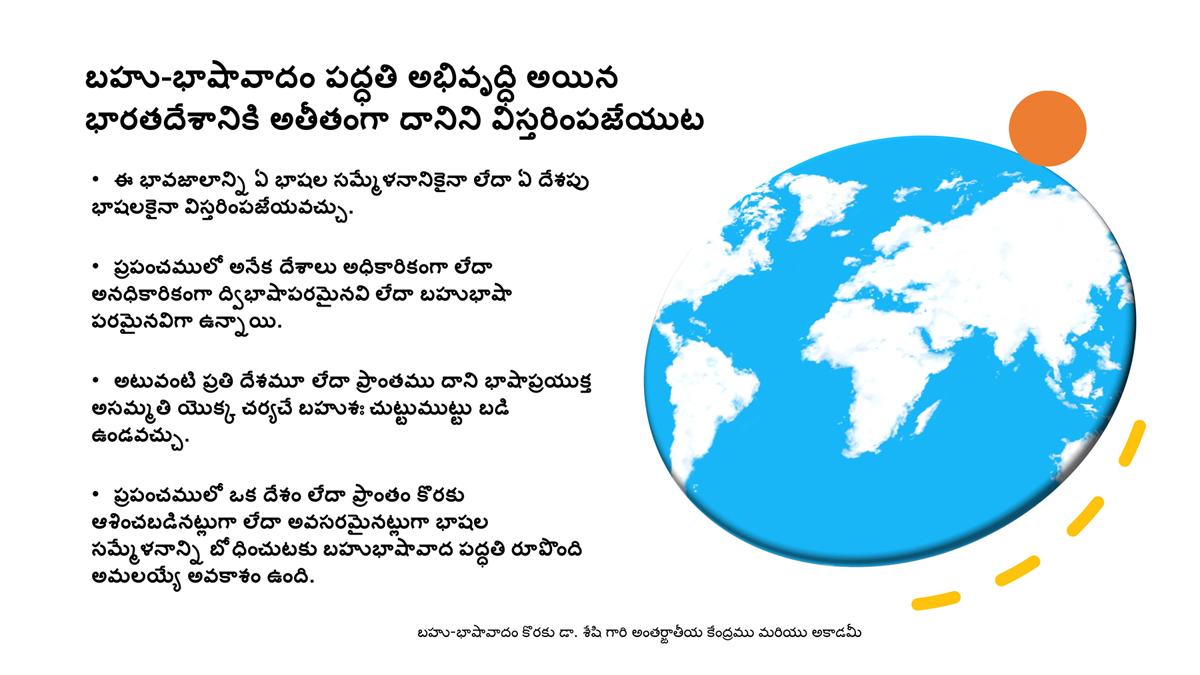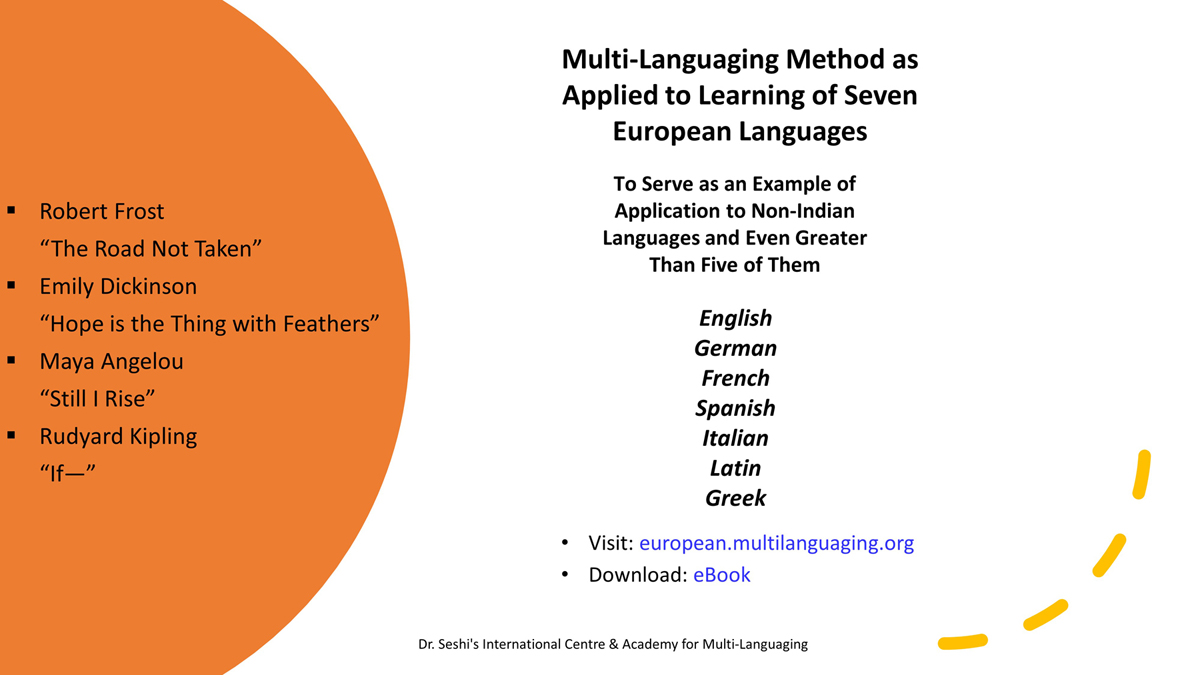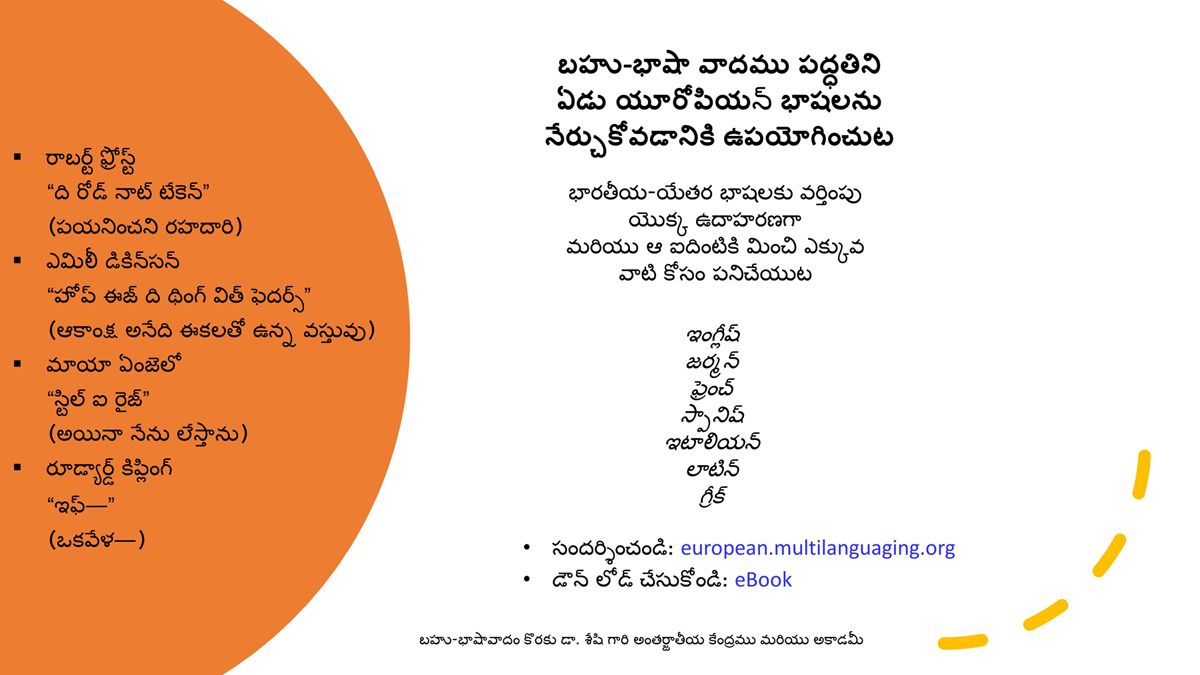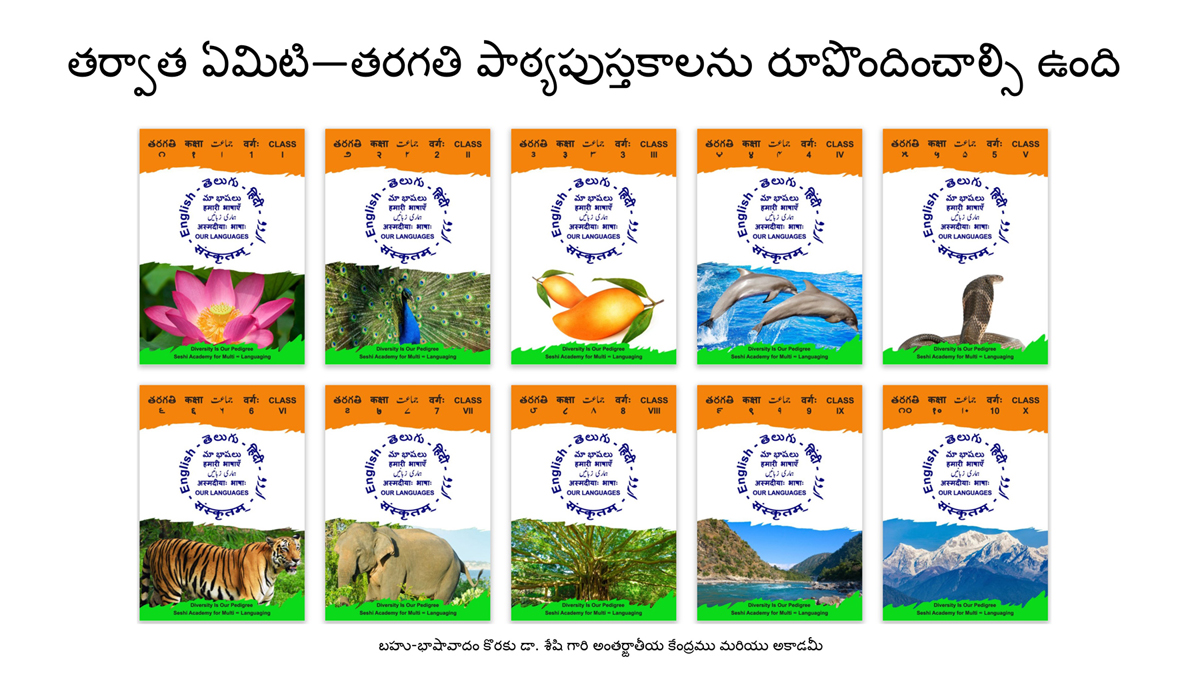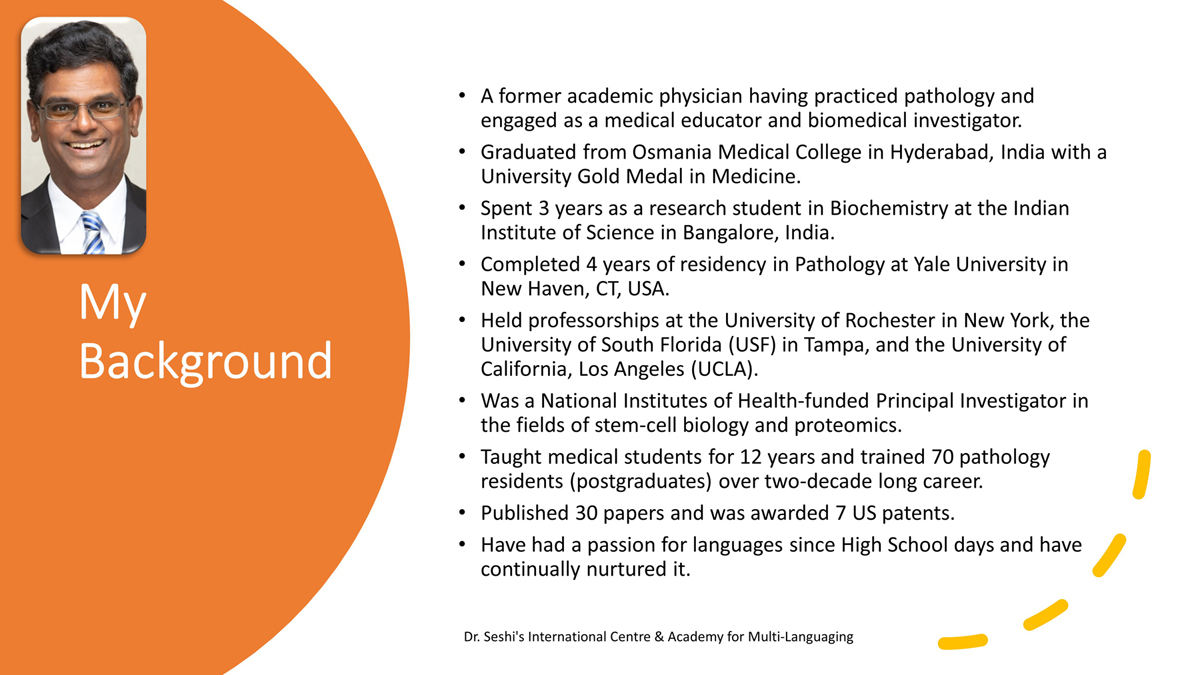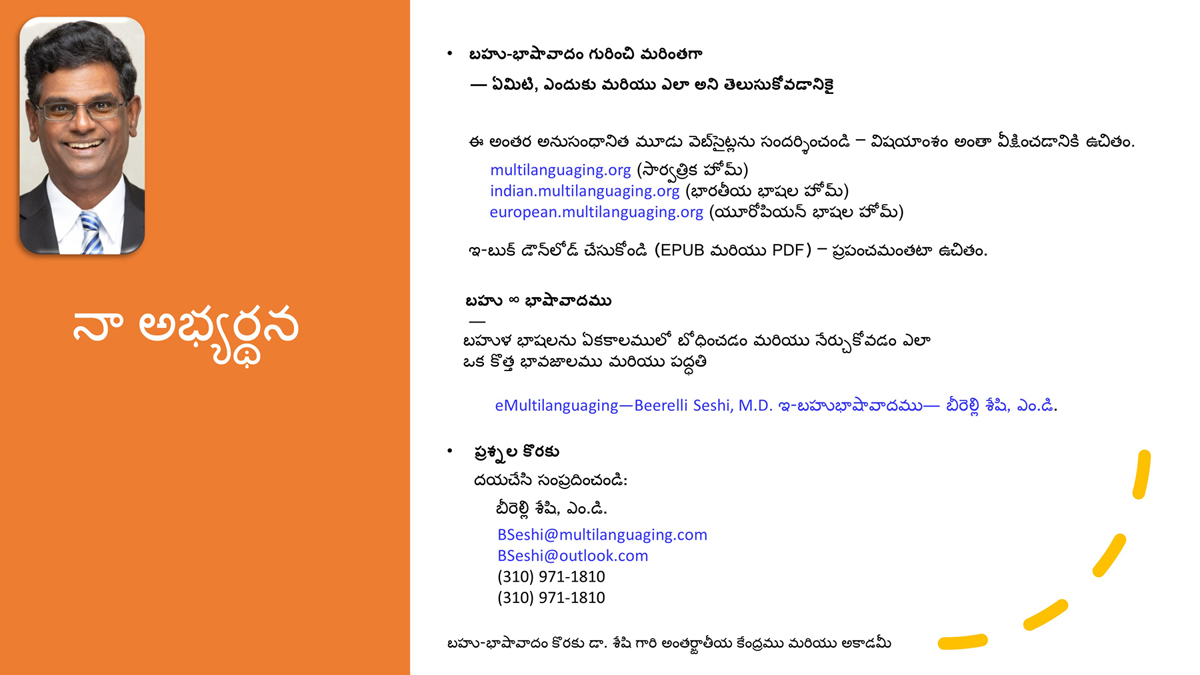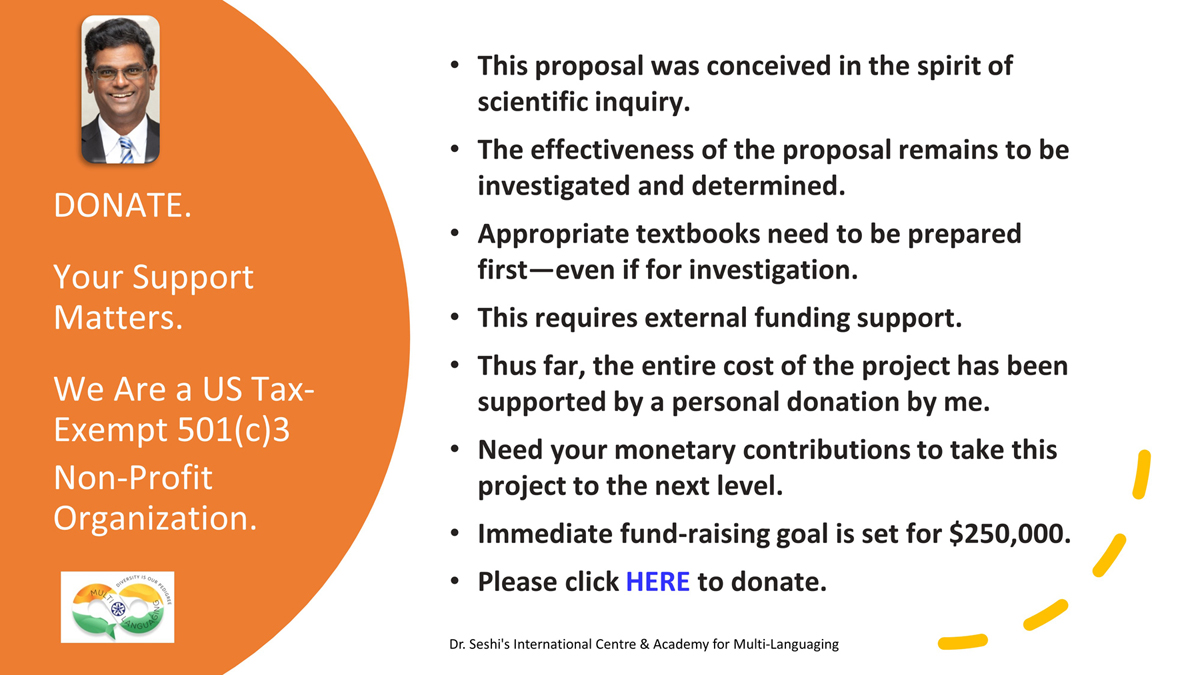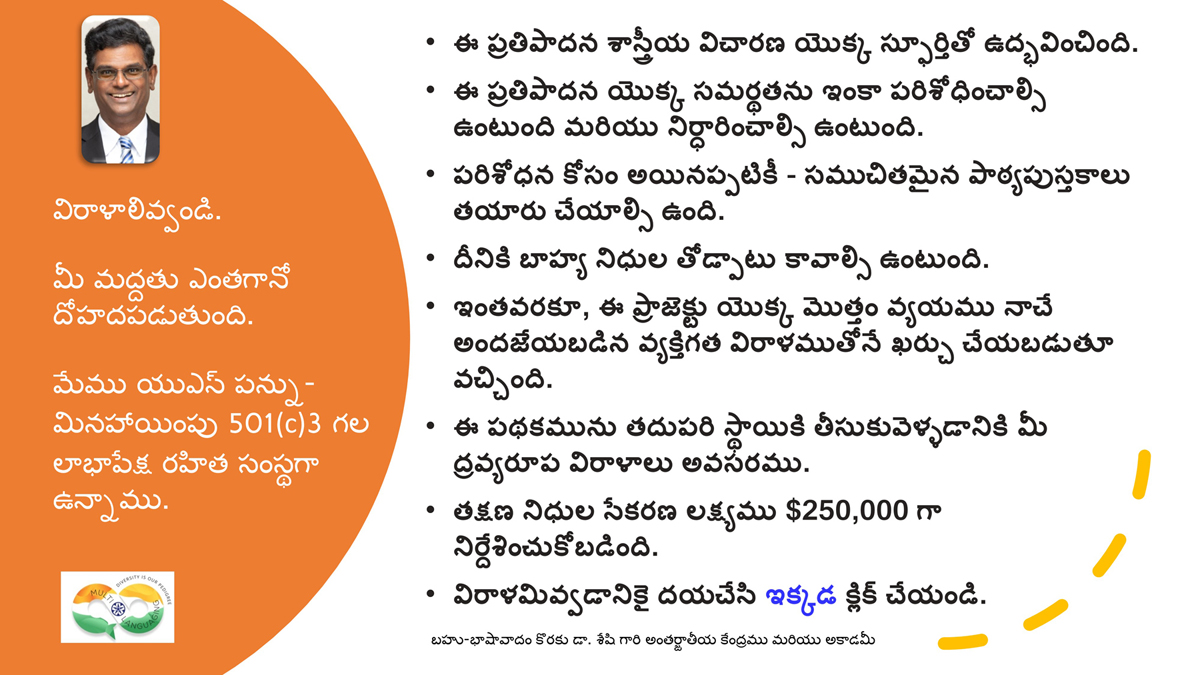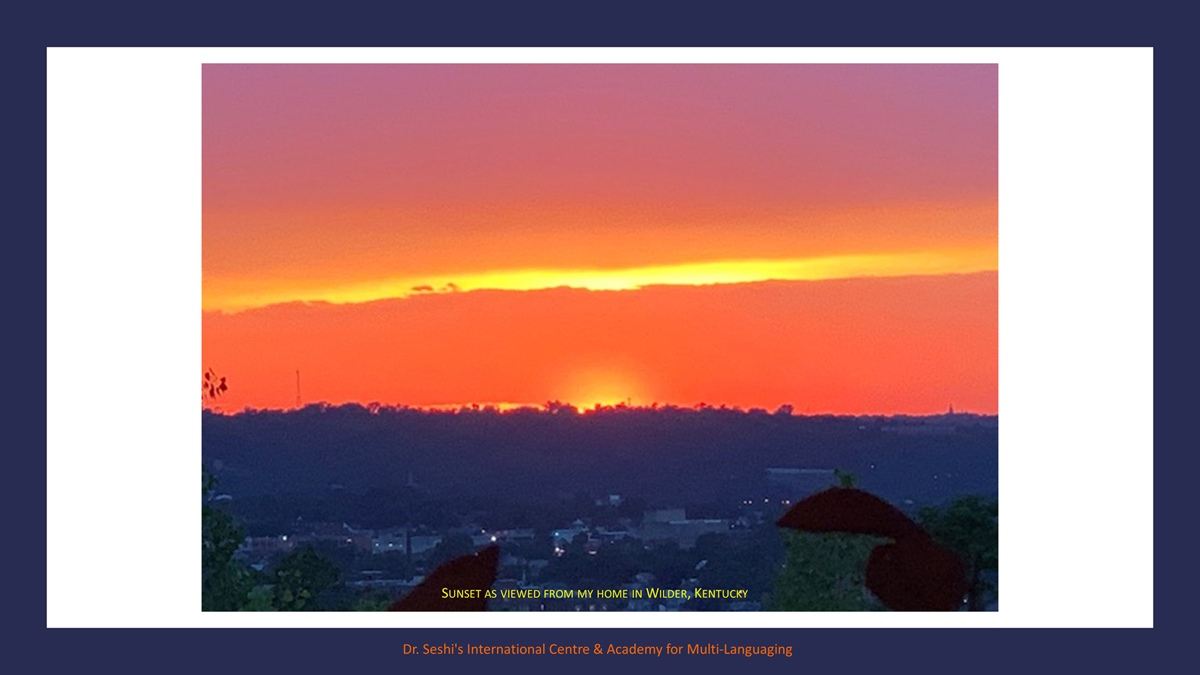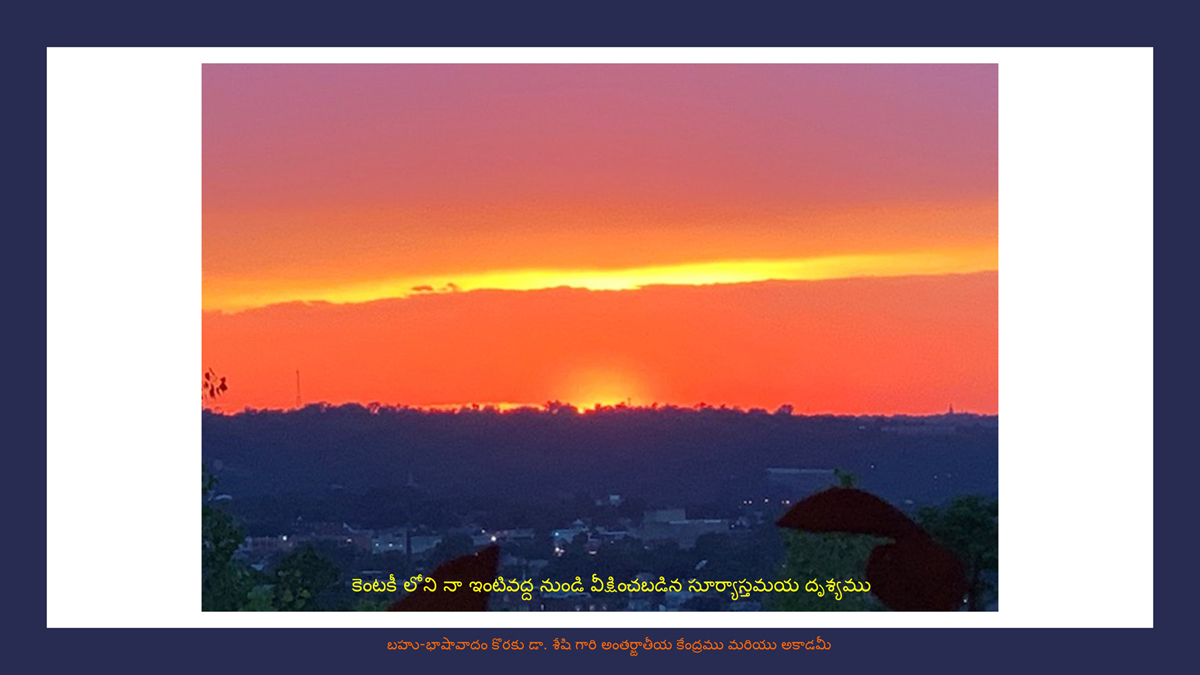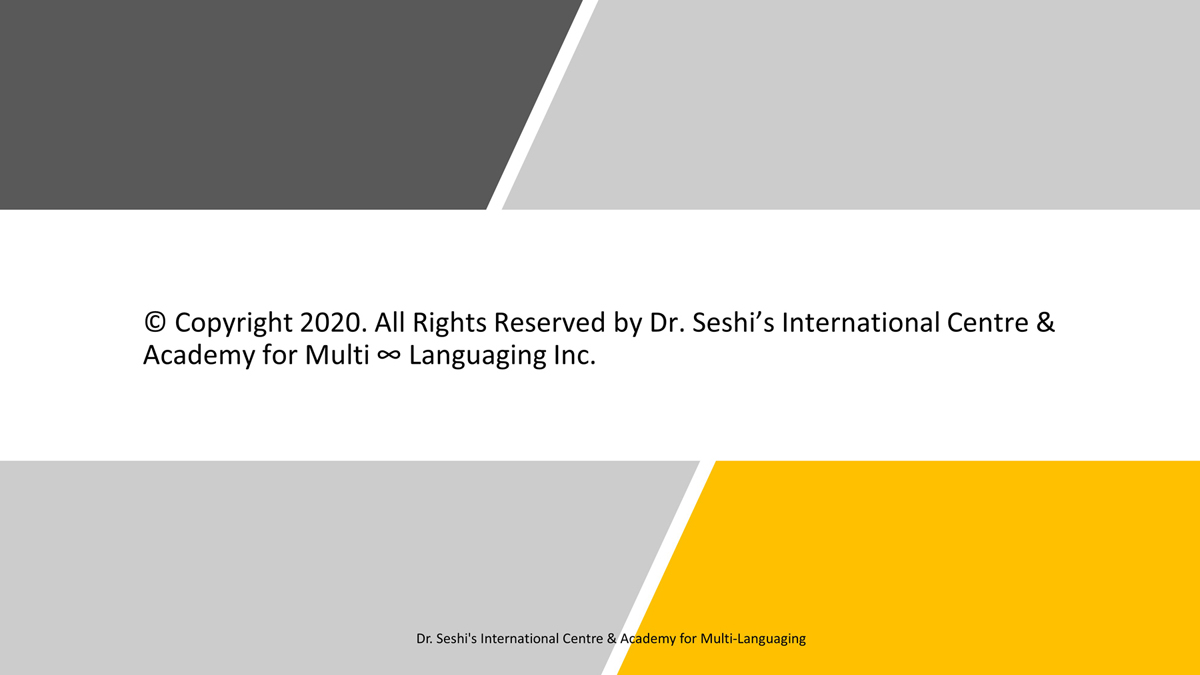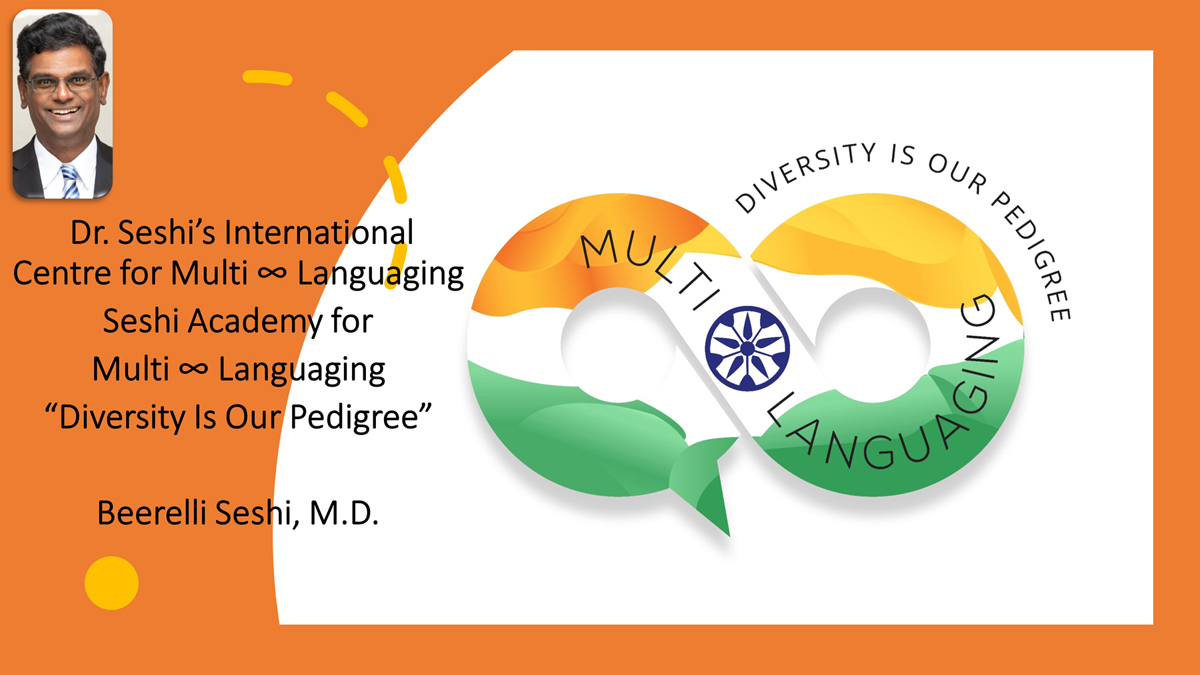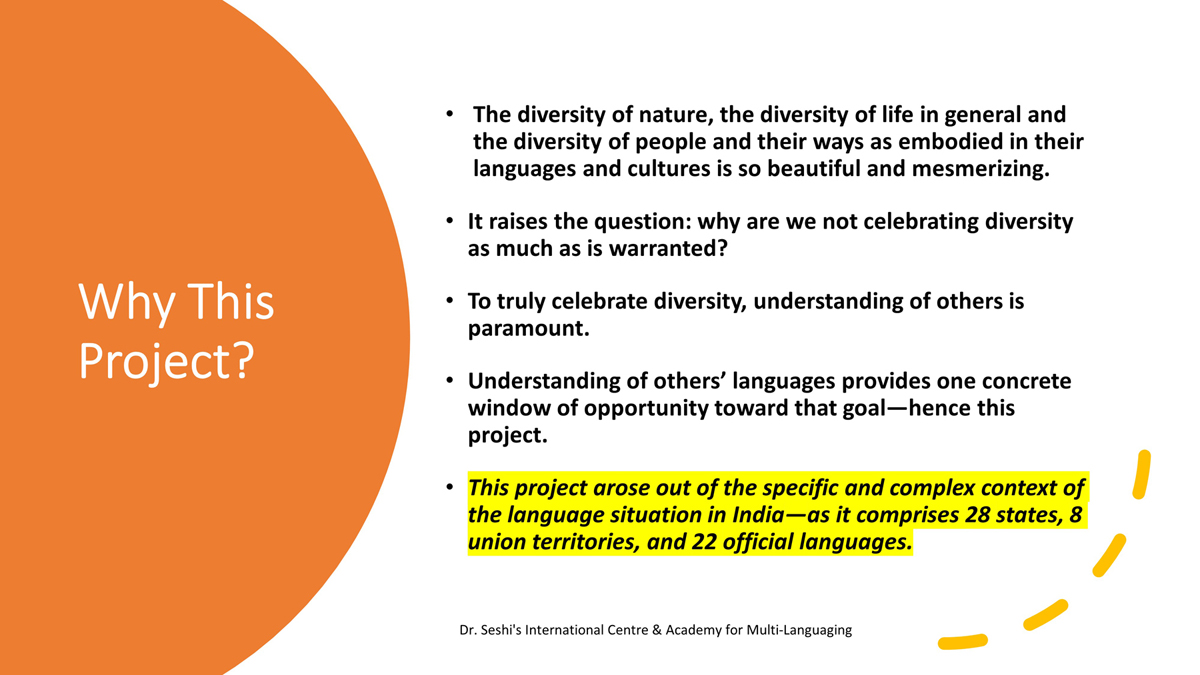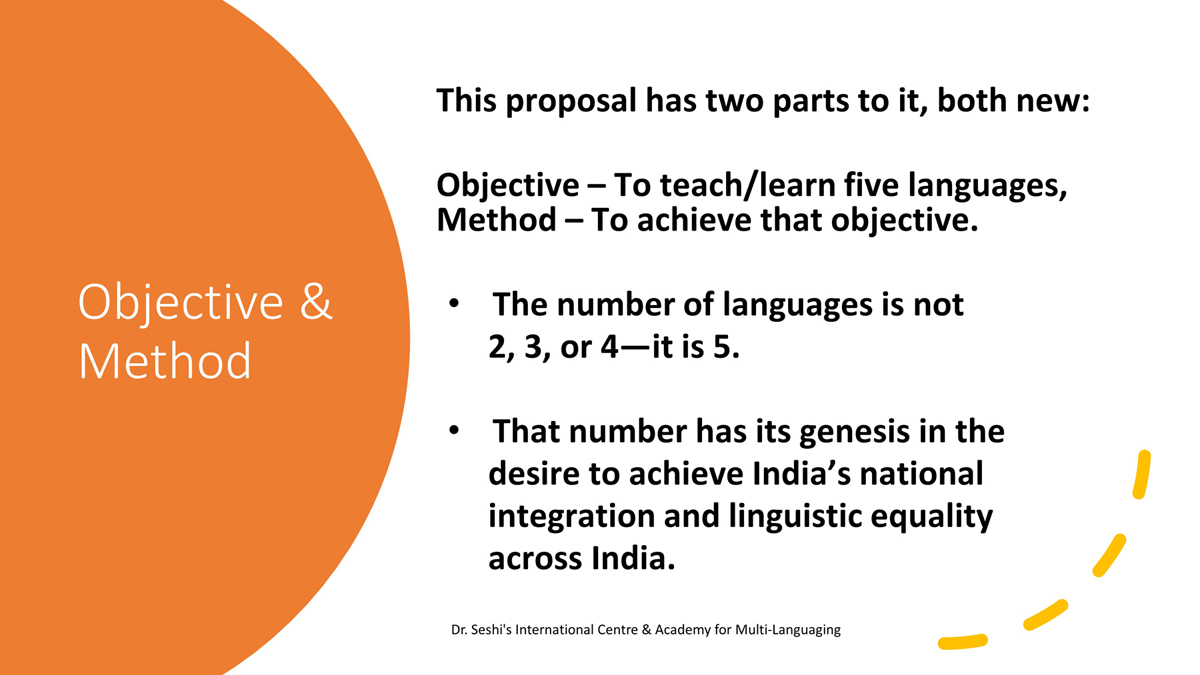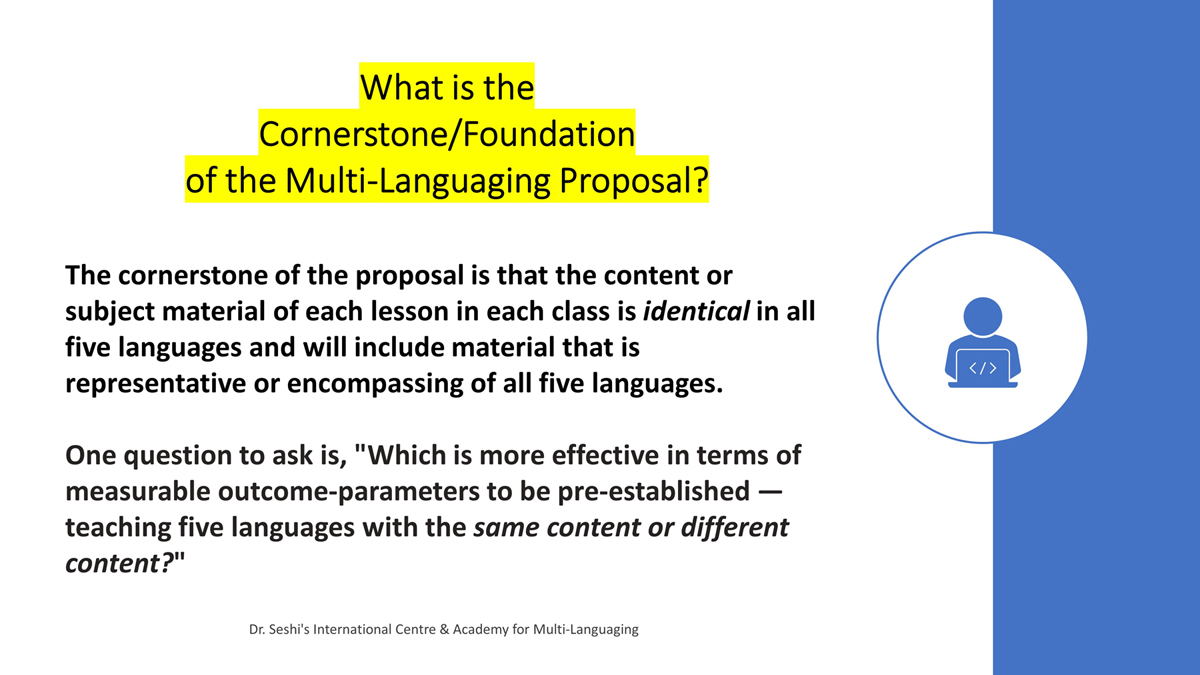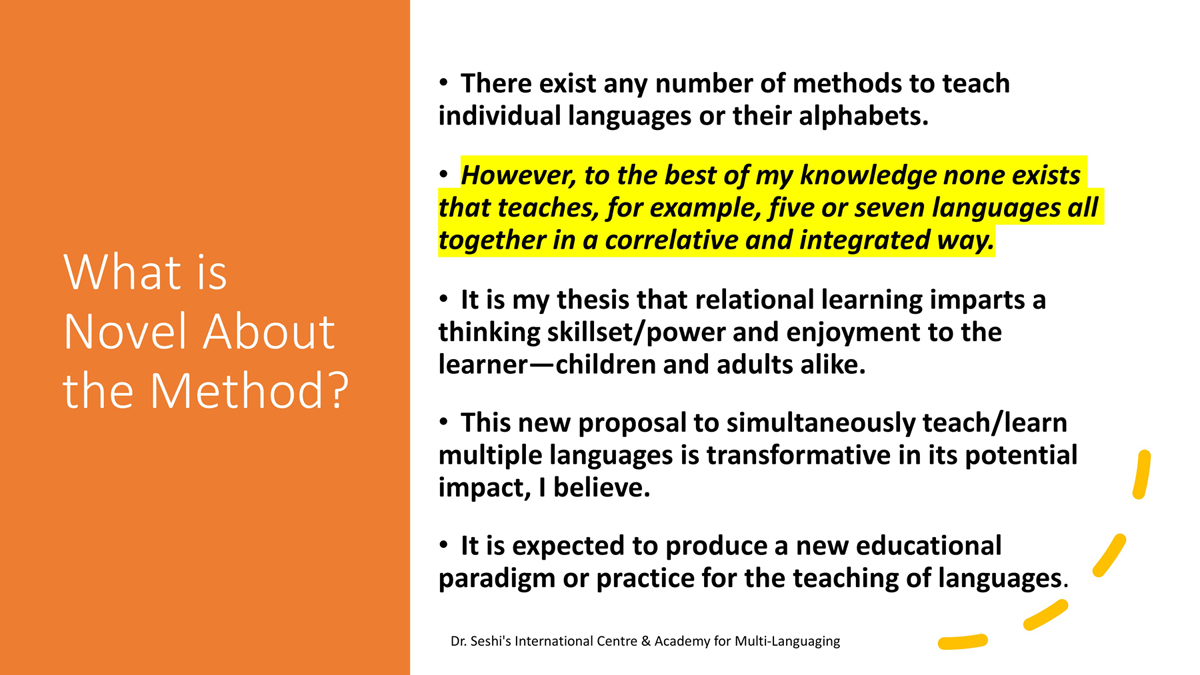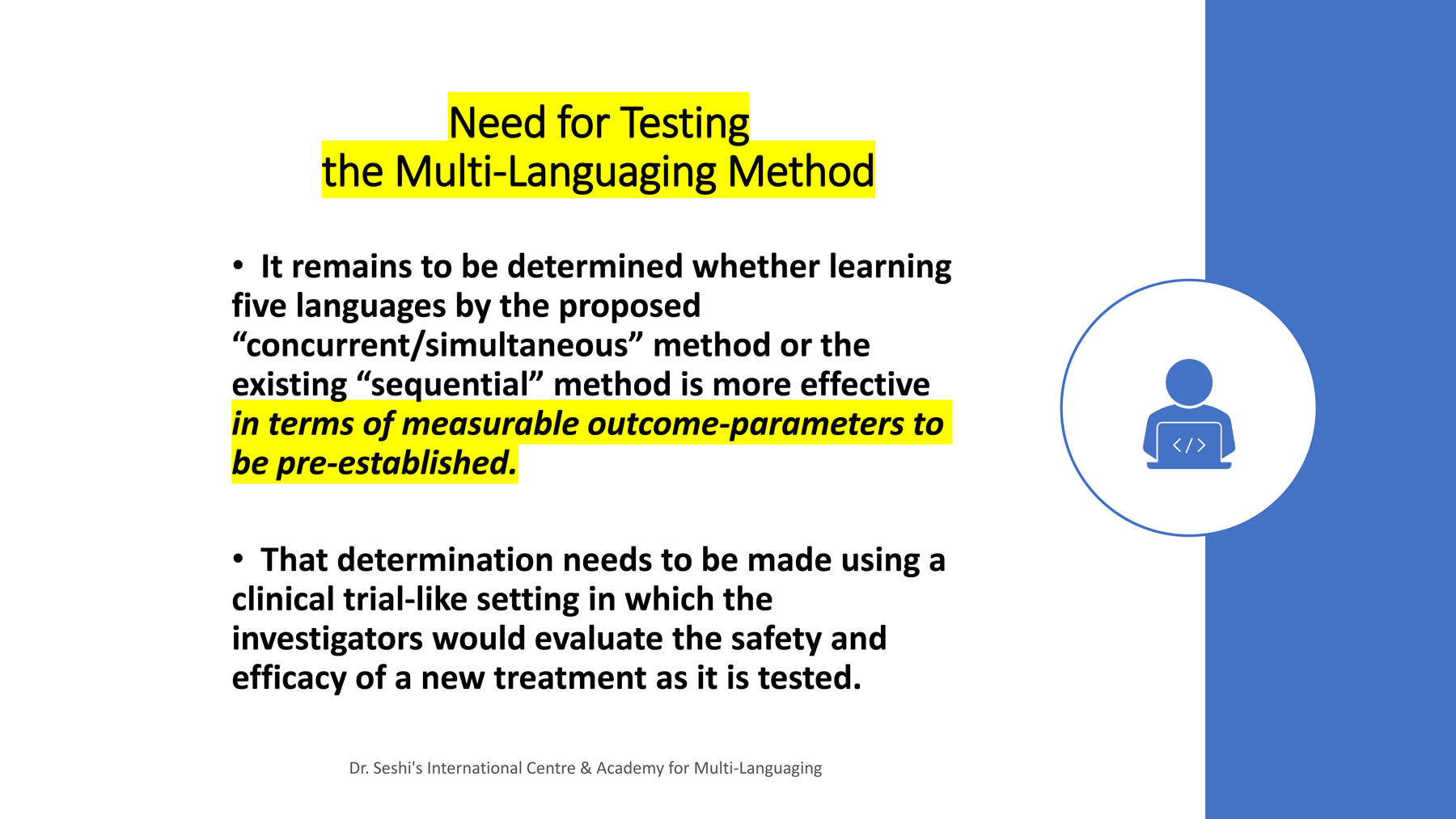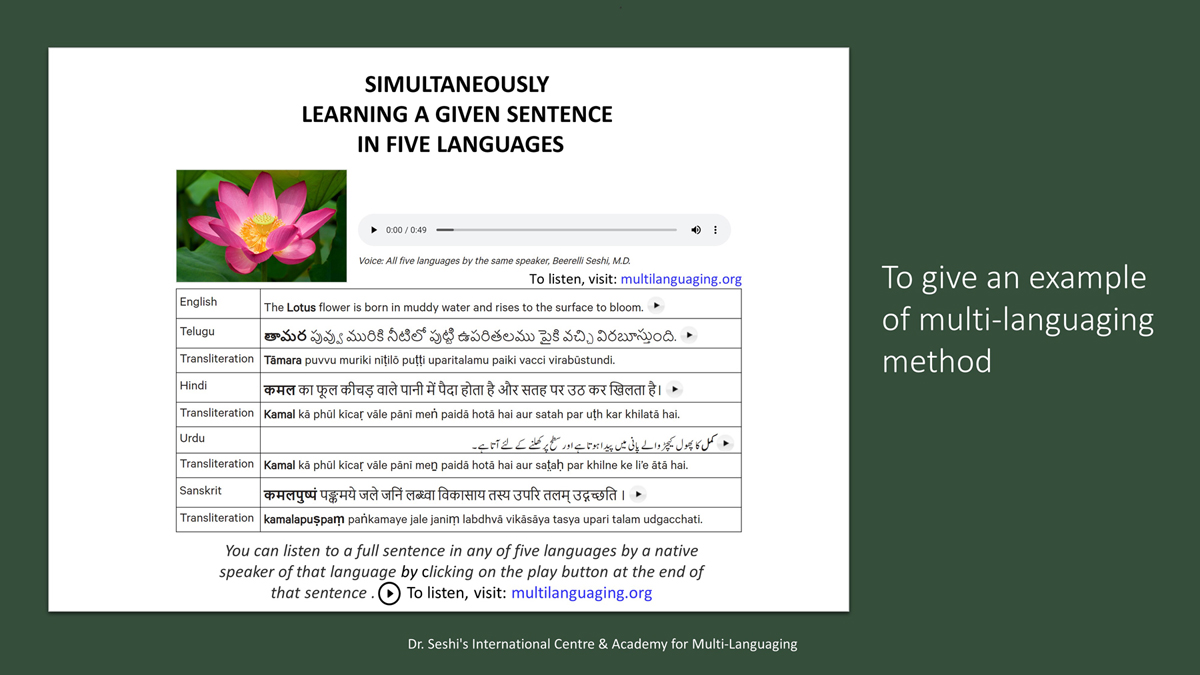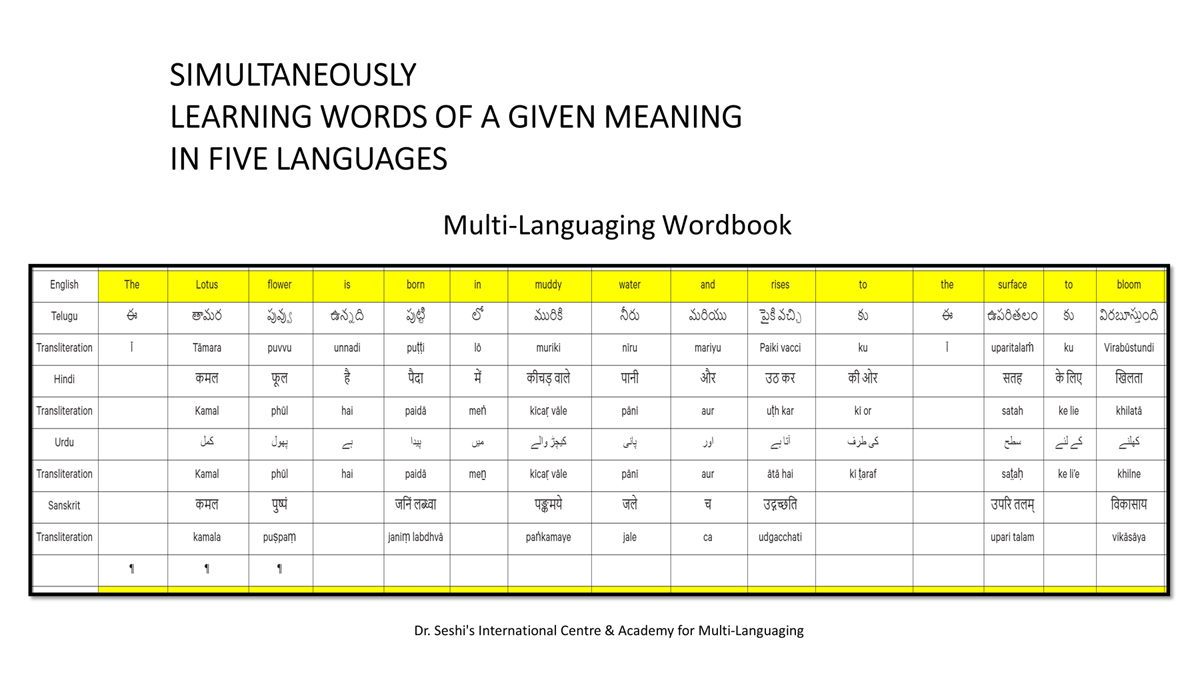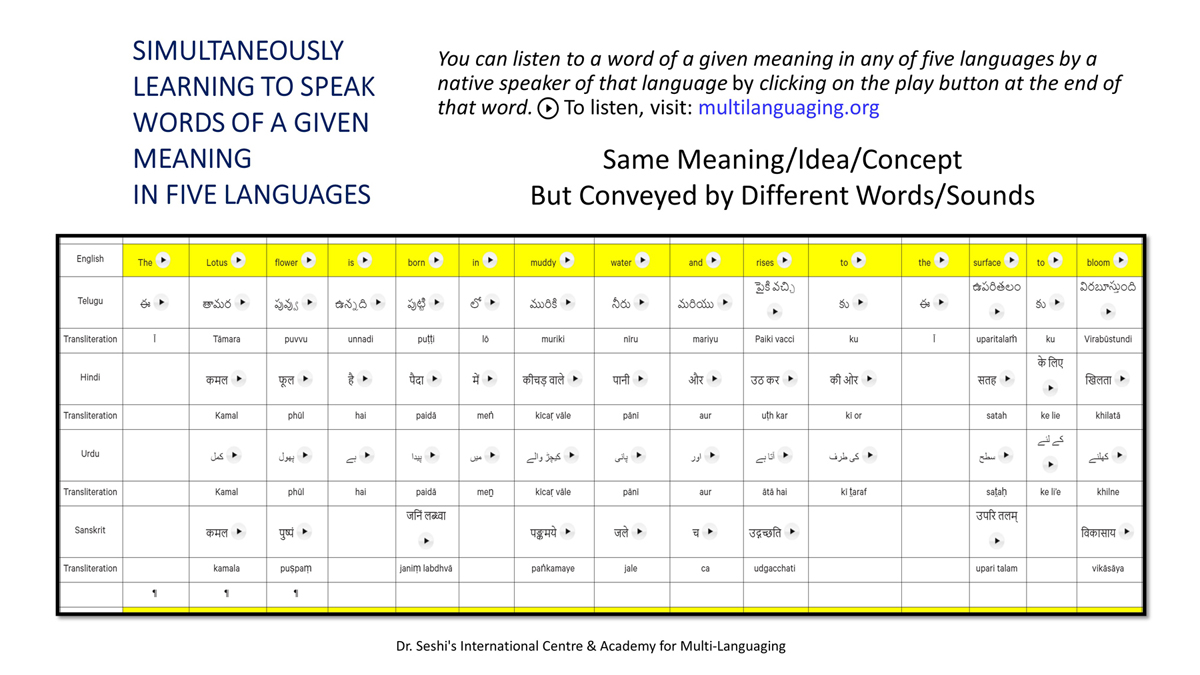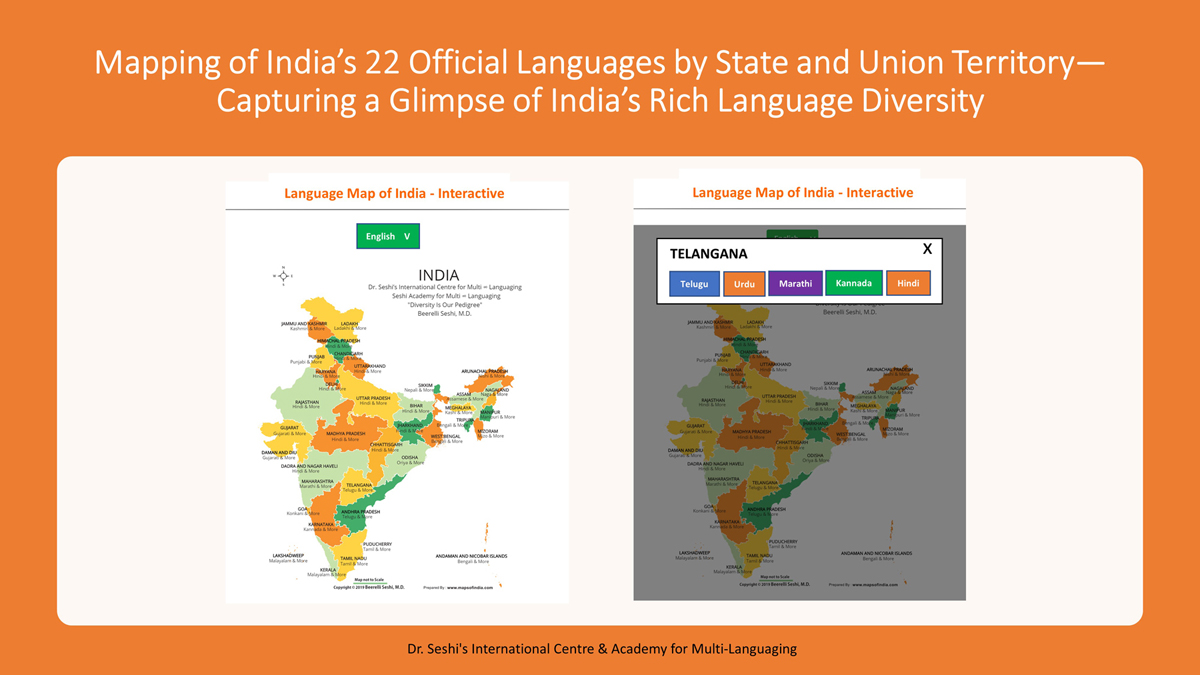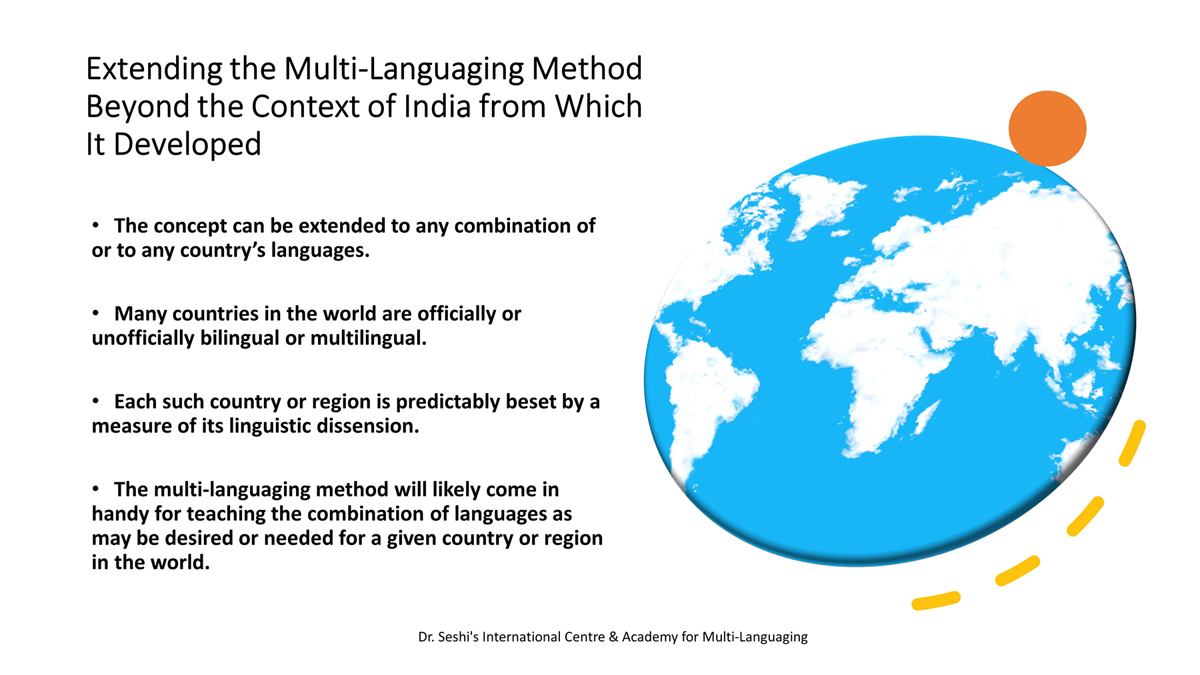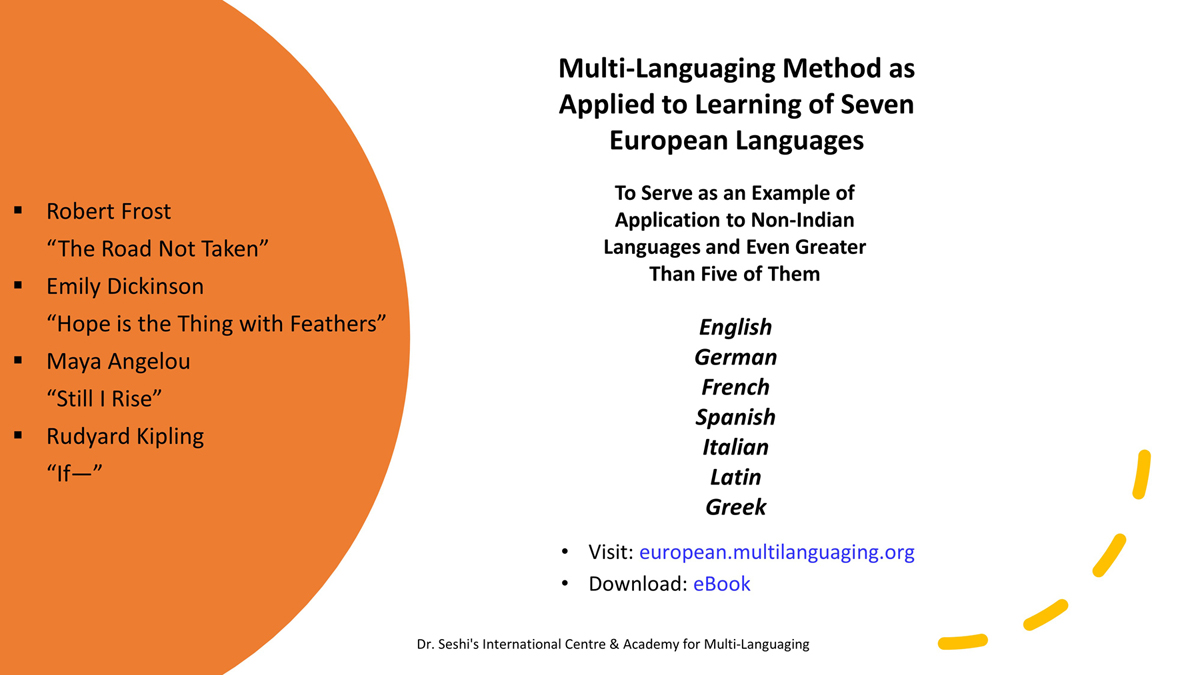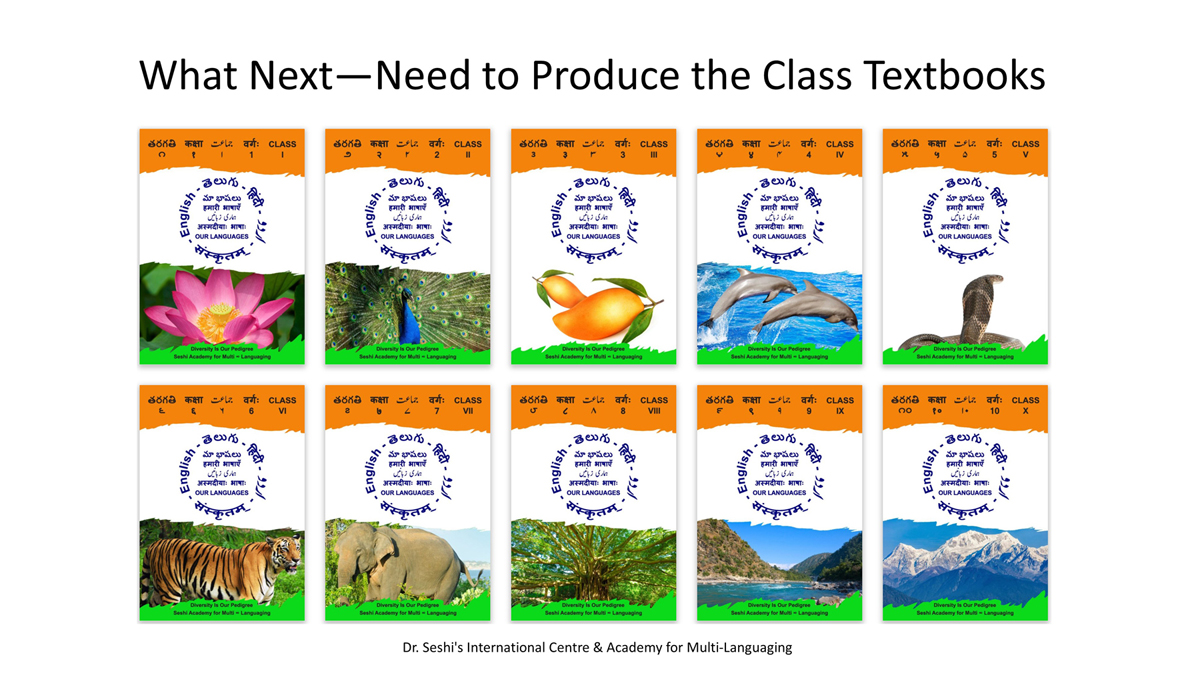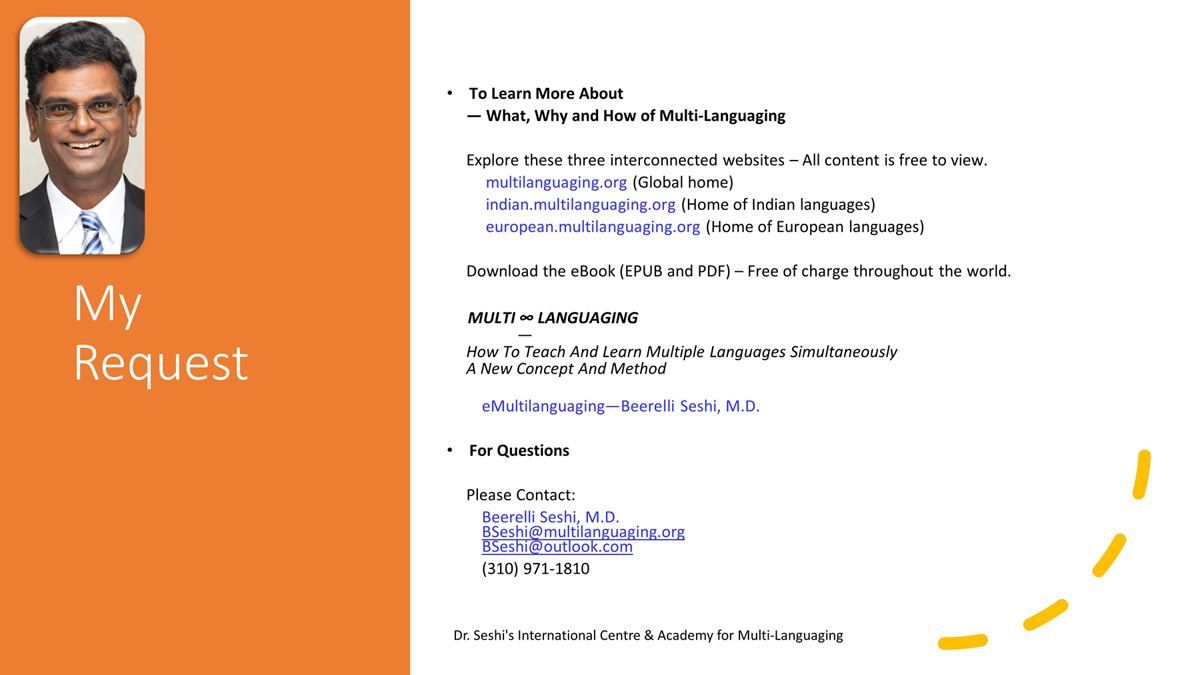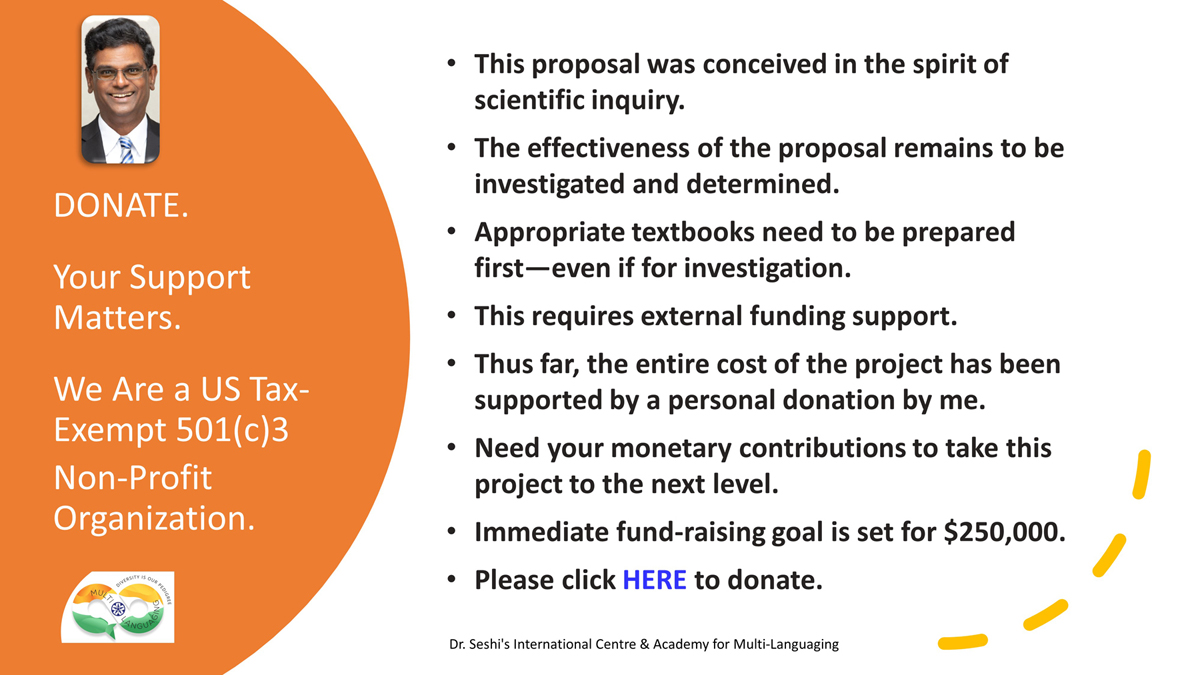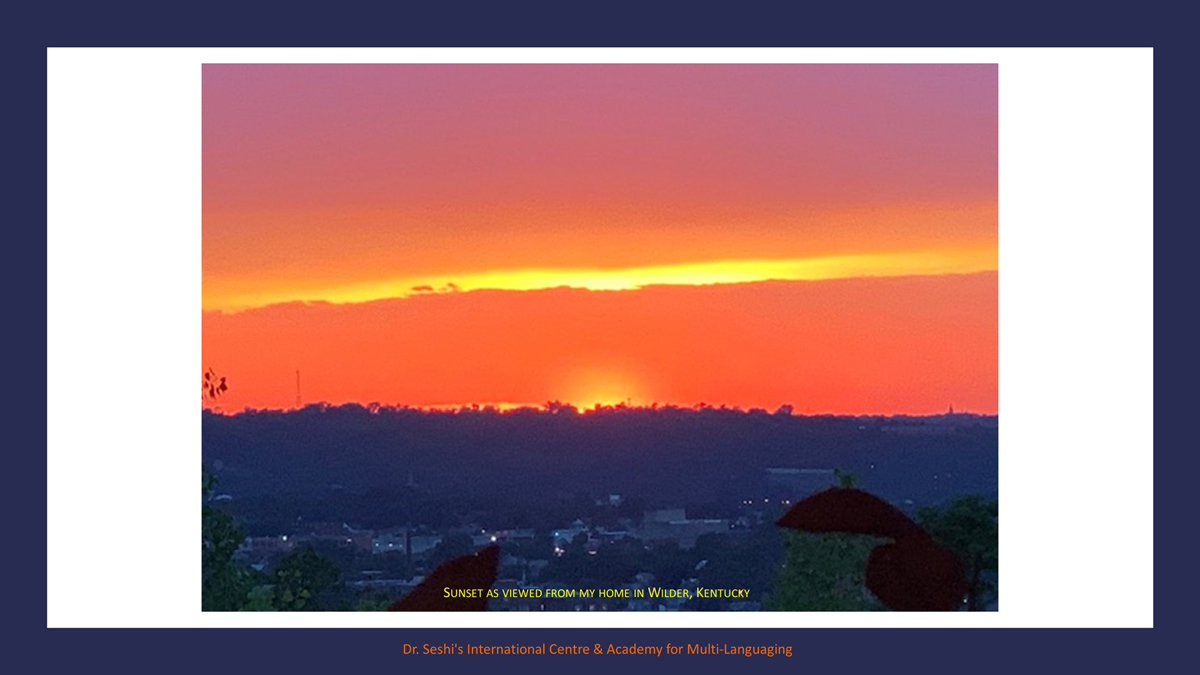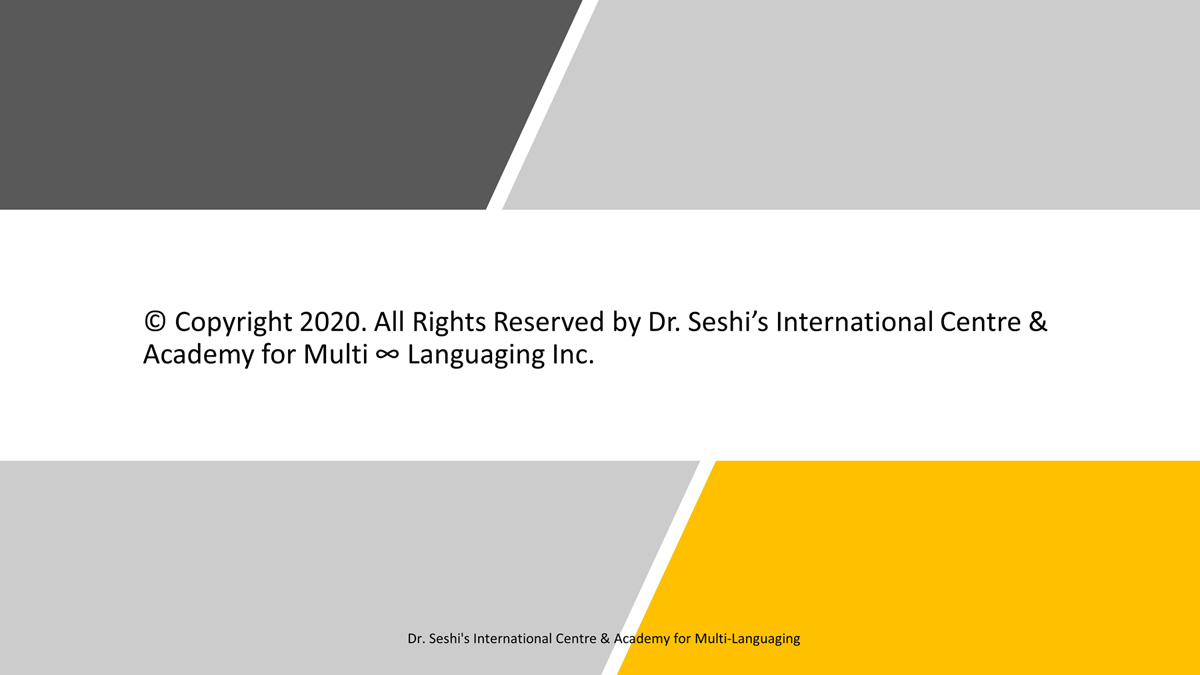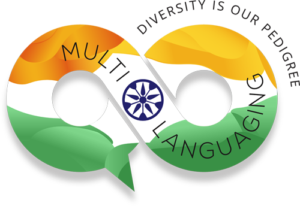
"Change your language and you change your thoughts."
Karl Albrecht

Beerelli Seshi, M.D.
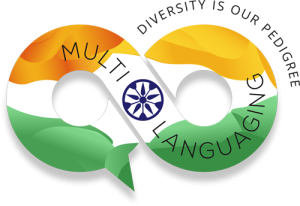
March 22, 2021 – Wilder, Kentucky, USA
"Multi-Languaging" is a new multilingual or plurilingual learning proposal. It advocates and enables simultaneous learning of multiple languages. For example, it shows how to simultaneously learn five Indian languages. They are three pan-Indian languages (Hindi, Urdu, and Sanskrit), one international language (English) and one vernacular language (Telugu). Any other vernacular language can replace Telugu. All languages start from First Class (Grade or Standard). The terms "Class," "Grade," and "Standard" are used interchangeably.
The proposal developed out of the specific situation of India. The method is applicable in a general setting and to all languages of the world. For example, it shows how to simultaneously learn seven European languages (English, German, French, Spanish, Italian, Latin, and Greek).
Dr. Seshi’s International Centre & Academy for Multi-Languaging Inc, a U.S. tax-exempt 501(c)3 non-profit organization, was created to promote the teaching and learning of multiple languages simultaneously, correlatively, and enjoyably.
The Founder, Beerelli Seshi, M.D., being born and having lived in India for 30 years, and then lived and worked in USA for 40 years, has always been mesmerized by the wonder of the diversity of people and their cultures as embodied in their languages, but deeply disheartened by the lack of an equal acceptance of diversity as a treasured strength of the humankind. To accept and treasure diversity, understanding of others is paramount. Understanding of others’ languages provides one concrete window of opportunity toward that goal—hence this project.
This project arose out of the specific and complex context of the language situation in India, as it comprises 28 states, 8 union territories, and 22 official languages. The concept can be extended to any combination of or to any country’s languages.
The content or subject material of each lesson in each Class is identical in all five languages. It will include material that is representative of all five languages. Teaching three languages with different content is the norm in India’s present-day system. Different languages are introduced into the syllabus at different Class levels. The most important, original, and crucial point being made is that using identical content in different languages is more efficient than the current method using different content in different languages. It results in a system of teaching that enables simultaneous learning of multiple languages.
To learn more about, What, Why and How of Multi-Languaging, explore these three interconnected websites.
Global Home: https://multilanguaging.org/
Indian Languages Home: https://indian.multilanguaging.org/
European Languages Home: https://european.multilanguaging.org/
These websites host an explainer video (7-min long)/ explainer slideshow in English and ten other languages (Telugu, Hindi, Urdu, Sanskrit, German, French, Spanish, Italian, Latin, and Greek). The explainer videos are also available on the YouTube channel:
https://www.youtube.com/playlist?list=PLMhe73nZdAvx-rJUgZbhHNAj8pbac8JEV
Moving forward, appropriate textbooks need to be prepared. This requires external grant funding support. It also requires collaboration and cooperation from appropriate individuals, institutions, and agencies, governmental or private alike. Dr. Seshi will be working toward seeking and assembling the needed support. A GoFundMe Charity page is set up to advance research into concurrent teaching of multiple languages.
https://charity.gofundme.com/drseshisinternationalcentreacademyformulti-languaginginc
When successful, every citizen of India speaks five languages as effortlessly as they use smartphones today. It achieves linguistic equality across India. It produces more poets, artists, scholars, and scientists originating from all communities of India. People value these professions more than before. It engenders a positive change in the tenor of social and civil discourse. European and other nations emulate India.
Press Release Permanent Hosting Site:
https://www.prdistribution.com/news/how-to-learn-five-languages-simultaneously.html
News Media Coverage:

FOR IMMEDIATE PRESS RELEASE
(IN ENGLISH, TELUGU, HINDI, URDU AND SANSKRIT)
Contact:
Beerelli Seshi, M.D.
Dr. Seshi’s International Centre for Multi ∞ Languaging
Seshi Academy for Multi ∞ Languaging
"Diversity Is Our Pedigree"
Tel: (310) 971-1810
E-mail: bseshi@multilanguaging.org
URL: www.multilanguaging.org
CAN YOU LEARN FIVE LANGUAGES SIMULTANEOUSLY?
WHY TELUGU, HINDI, ENGLISH, URDU AND SANSKRIT?
Wilder, KY, USA, Dated: 03/22/2021
Note: Actually, an updated version of this Press Release, and only in English, was issued on 03/22/2021, as above.
"Multi-languaging" is a new multilingual or plurilingual learning proposal.
It advocates and enables simultaneous learning of multiple languages.
It shows how to simultaneously learn five languages.
They are three pan-Indian languages (Hindi, Urdu and Sanskrit), one international language (English) and one vernacular language (Telugu, which happens to be Dr. Seshi’s mother tongue).
All start from First Class (Grade or Standard).
Any other vernacular language can replace Telugu.
The proposal arose out of the specific situation of India.
The method is applicable in a general setting and to all languages of the world.
Multilingualism cannot be the sole province of "gifted" individuals.
Anybody can have a chance at it by using the multi-languaging method.
The content or subject material of each lesson in each Class is identical in all five languages.
It will include material that is representative of all five languages.
Teaching three languages with different content is the norm in India’s present-day system.
Different languages are introduced into the syllabus at different Class levels.
The most important, original and crucial point being made is that using identical content in different languages is more efficient than the current method using different content in different languages.
The proposal purposefully limits the amount of content to enable students to immerse themselves in learning five languages correlatively and simultaneously.
The proposal provides the guiding principles for choosing lessons and creating supplementary materials.
Detailed explanations of the many aspects of the proposal and related topics have been provided in the easily understandable and reader-friendly "Question and Answer" format.
They provide a comprehensive idea of the proposal.
The website hosts these documents in all five languages—English, Telugu, Hindi, Urdu and Sanskrit—so they are understandable to speakers of any of these languages.
The website also hosts the corresponding multi-languaging Wordbooks in a spreadsheet format.
They are a study tool.
They provide word-by-word translation of these documents across the five languages in Microsoft Excel.
They would allow the reader/student to inspect the Wordbook content side by side, word by word, and sentence by sentence across the five languages.
They have been devised to help the student necessarily experience the syntactic differences between languages.
They offer an insight into the power of this correlative learning and vocabulary building mechanism.
Finally, the website hosts two model lessons simultaneously teaching the five languages.
For details visit, www.multilanguaging.org.
To see the potential adaptability of the multi-languaging method, for example, to teach/learn seven European languages, visit the related website, european.multilanguaging.org.
Learning multiple languages adds to the students’ thinking power.
It may help them perform better in other school subjects.
It would delay the onset of Alzheimer’s disease (the brain disorder that gradually damages memory and thinking skills as one gets older): the more languages the individual knows, the later the onset.
It serves as insurance against the inevitability of Alzheimer's for future senior citizens.
Moving forward, appropriate textbooks need to be prepared.
This requires external grant funding support.
It also requires collaboration and cooperation from appropriate individuals, institutions and agencies, governmental or private alike.
Textbooks (and other resource material) will be designed and planned so as to offer flexibility.
This will help in the selection of sub-combinations or sub-modules of the five languages (Telugu, Hindi, English, Urdu and Sanskrit) for study.
They will be available both in printed form and online.
The format will be organized and flexible such that the materials would be equally suitable for classroom teaching and adult learning by interested individuals or study groups for building cognitive reserve.
The multipurpose textbook production decisions/preferences will be naturally guided by the input from various stakeholders in consideration of their priorities.
They include funding agencies, governmental bodies and educators.
Dr. Seshi’s International Centre for Multi ∞ Languaging and Seshi Academy for Multi ∞ Languaging were created to promote the teaching and learning of multiple languages simultaneously, effectively and enjoyably.
They are expected to advance the linguistic, cultural and ultimately national integration of India.
Diversity is our pedigree.
###
If you would like more information about this topic and have your questions answered, please visit www.multilanguaging.org, call Beerelli Seshi, M.D. at (310) 971-1810 or email bseshi@multilanguaging.org or bseshi@outlook.com.
